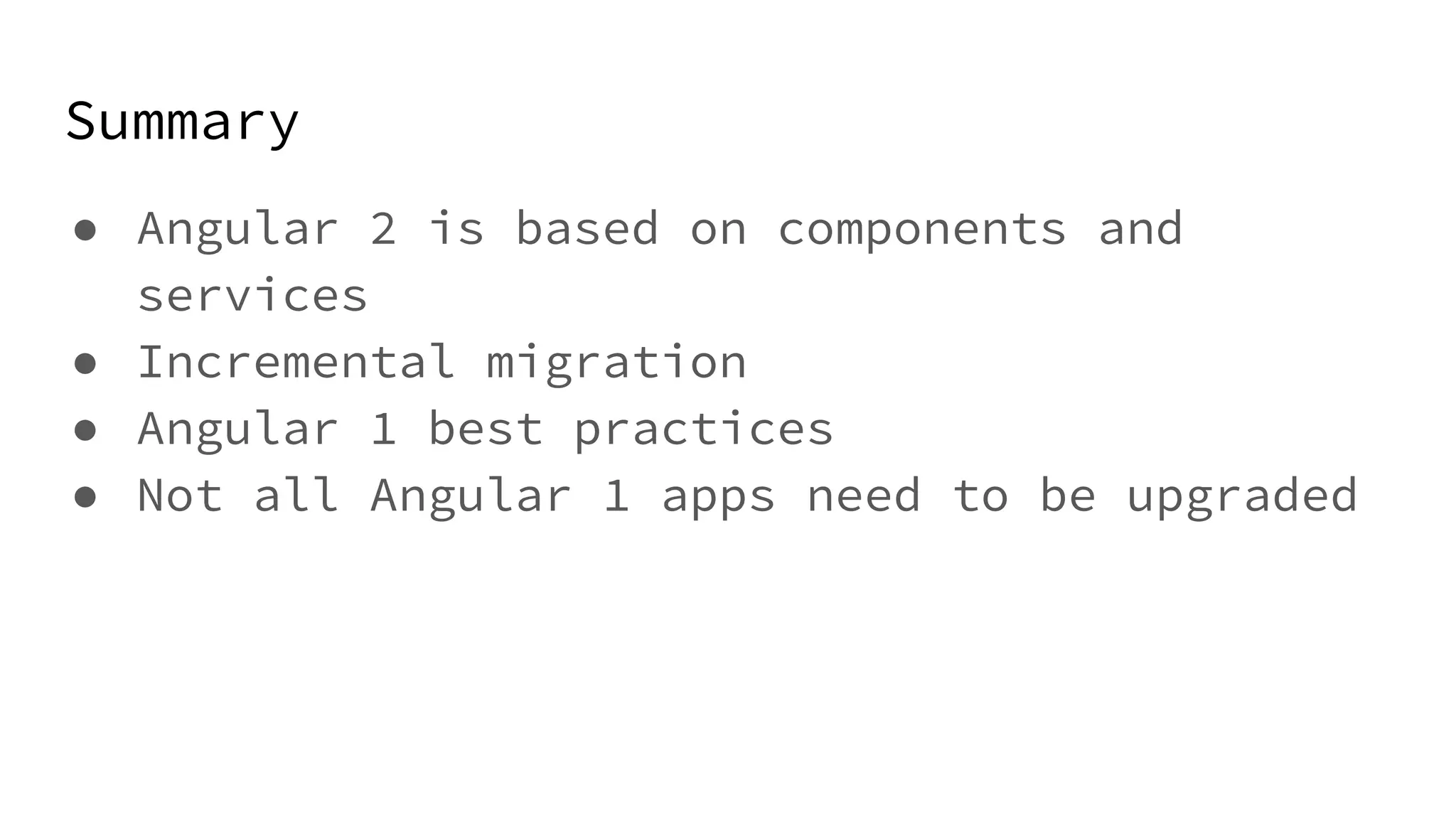The document discusses the migration to Angular 2, highlighting improvements such as modern web standards, removal of unnecessary concepts, and performance enhancements. It explains the ngUpgrade tool for running both Angular 1 and Angular 2 within the same application and details various approaches for building components, handling services, and using TypeScript. Additionally, it provides code samples demonstrating the transition from Angular 1 constructs to Angular 2 syntax, emphasizing the benefits of the new architecture.
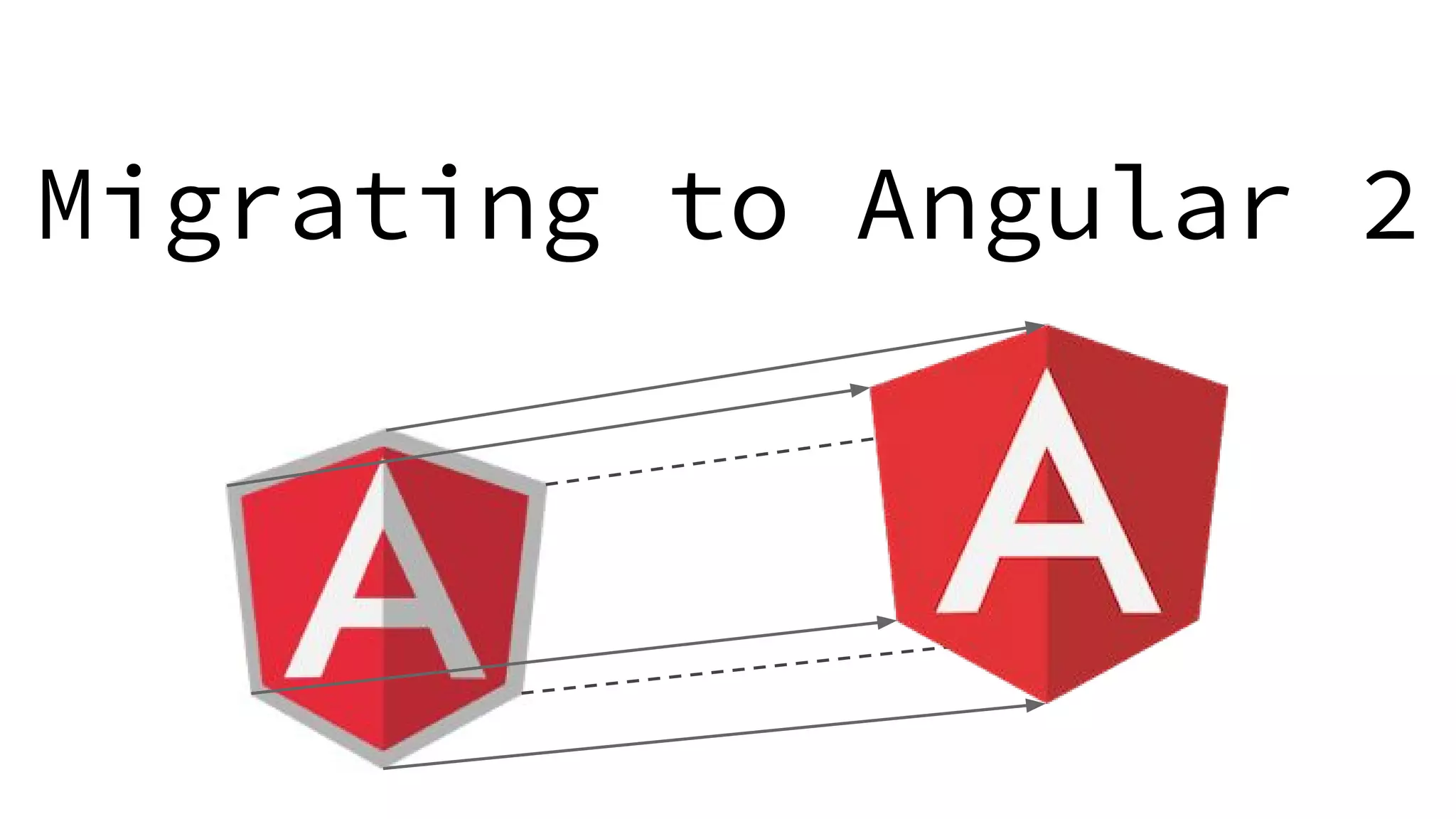
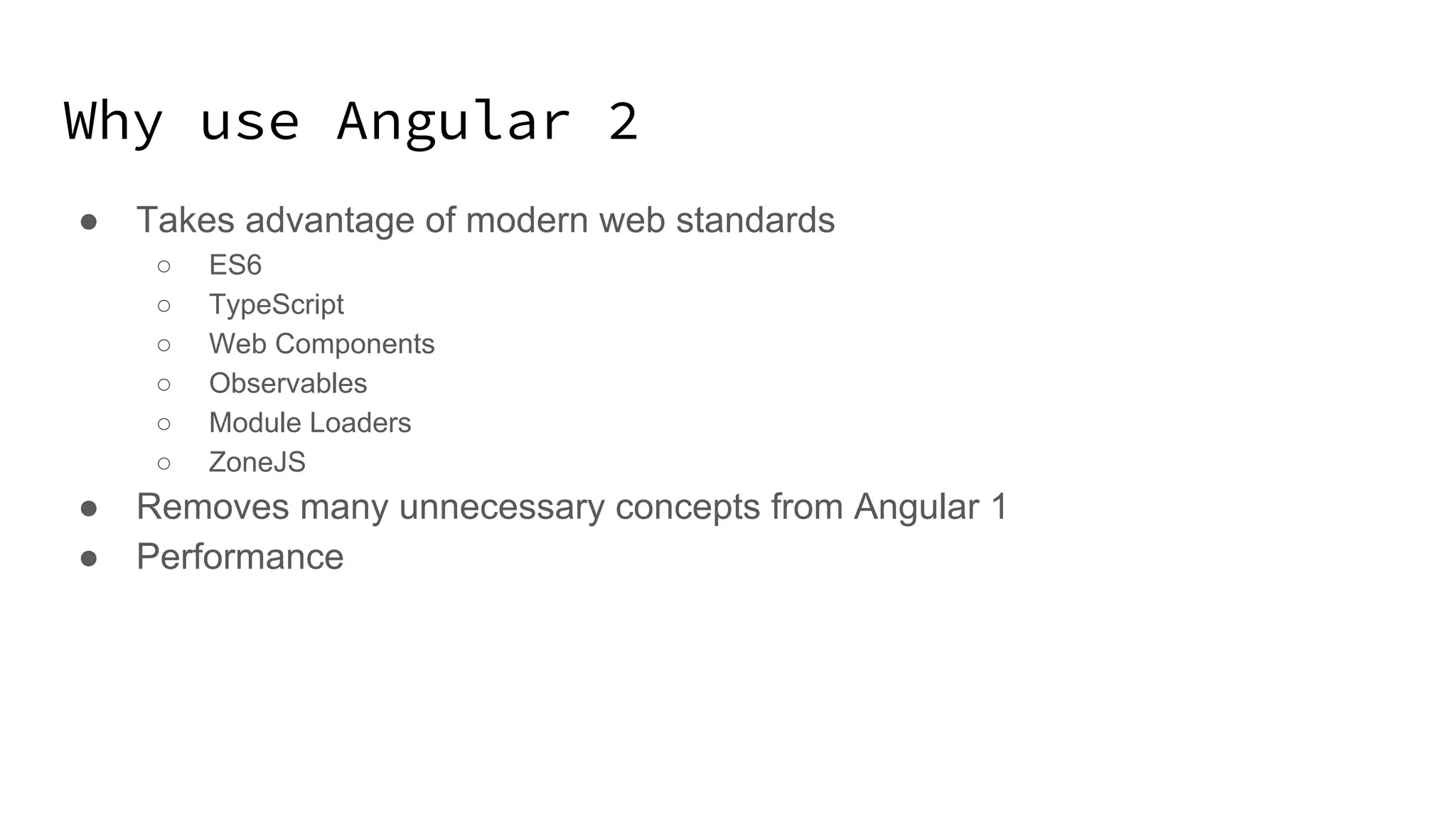
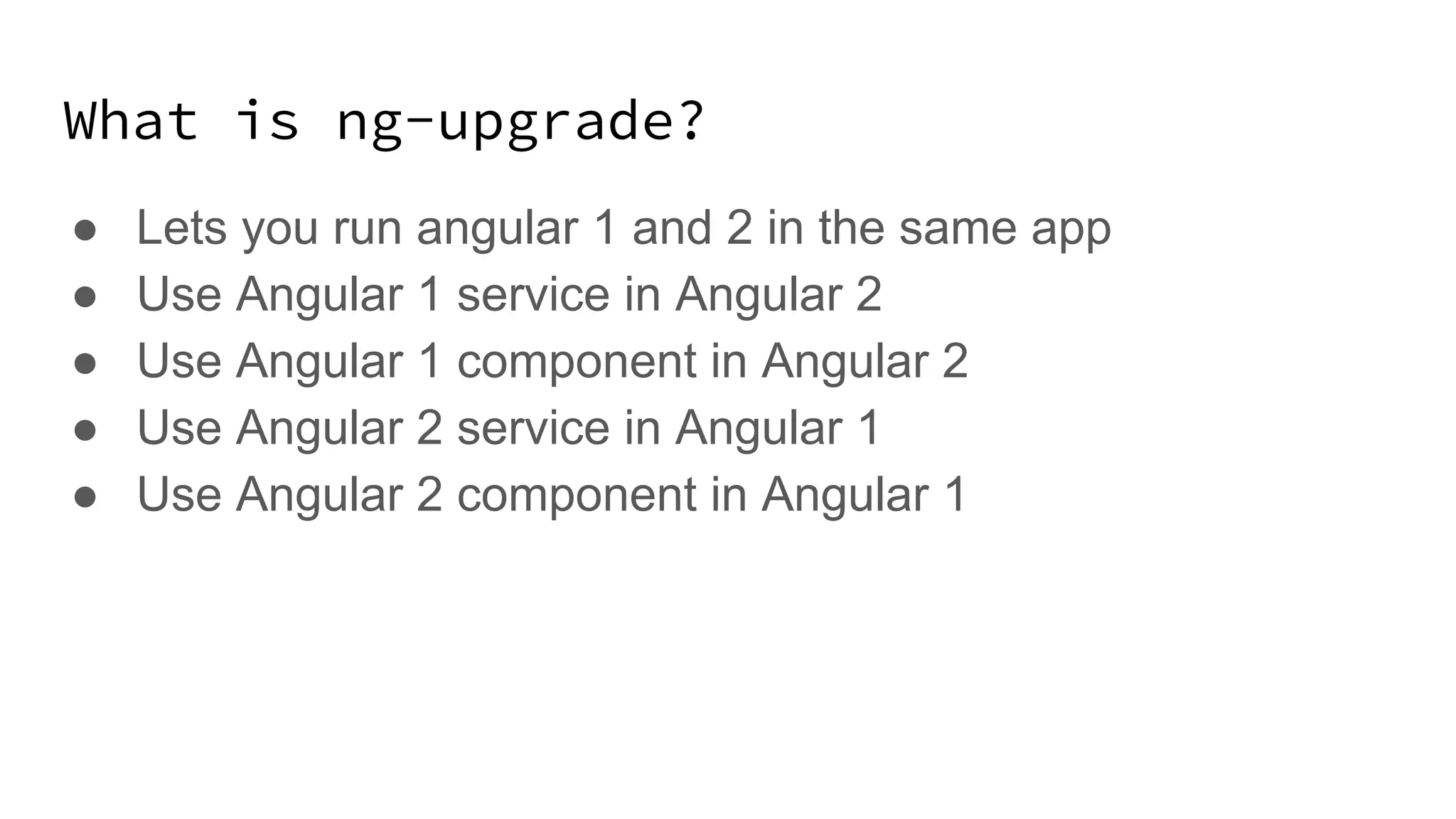
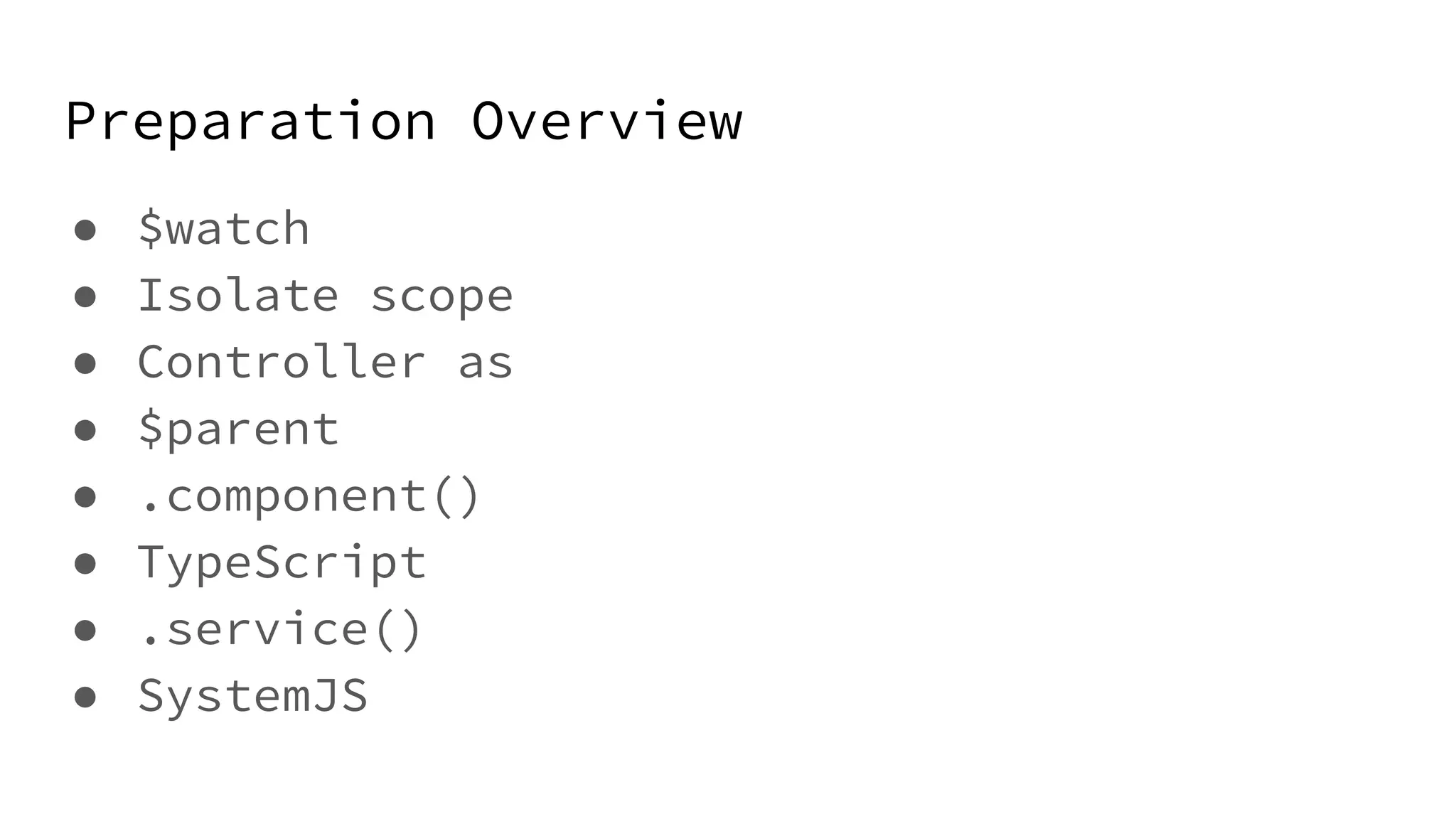

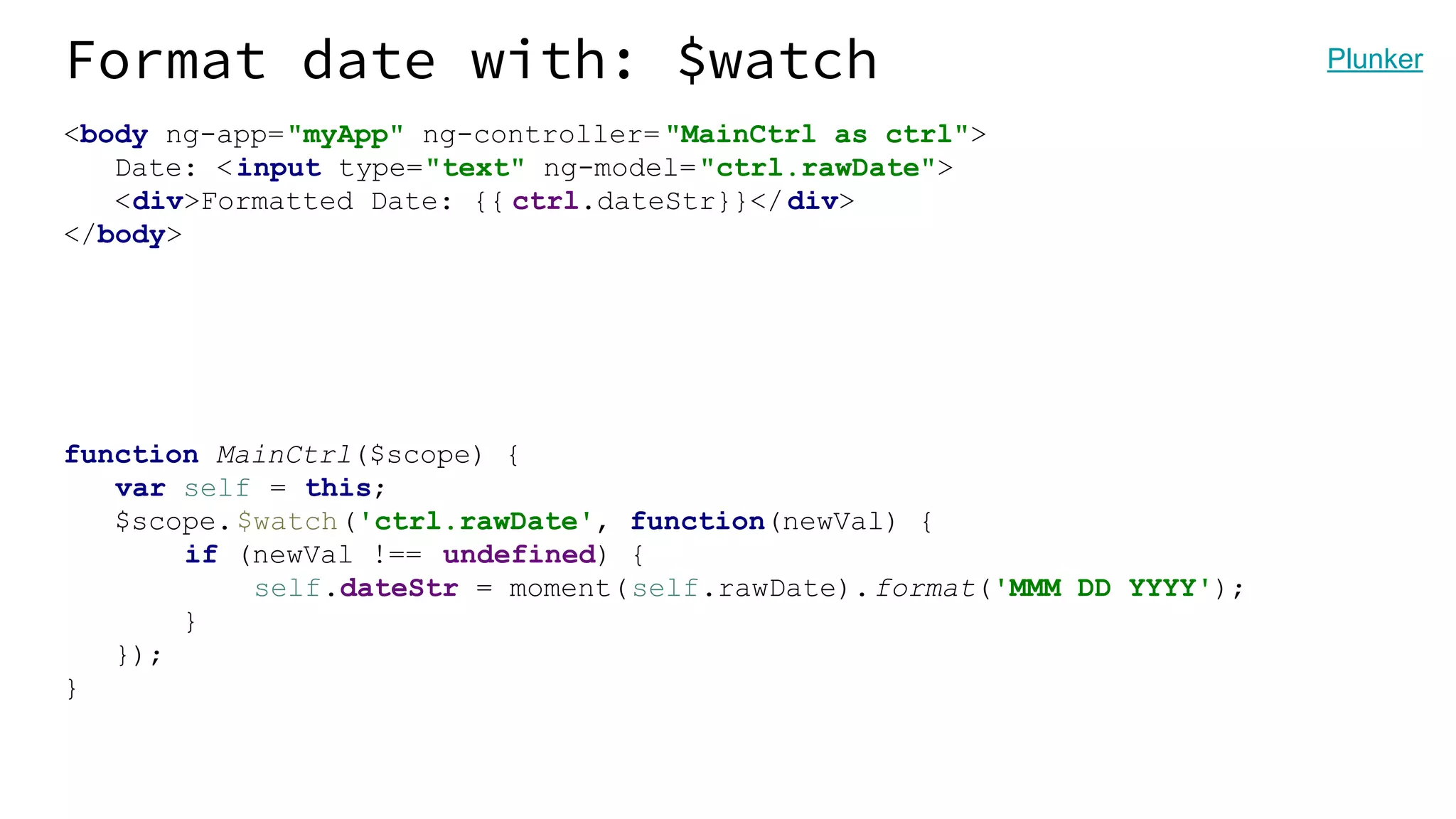
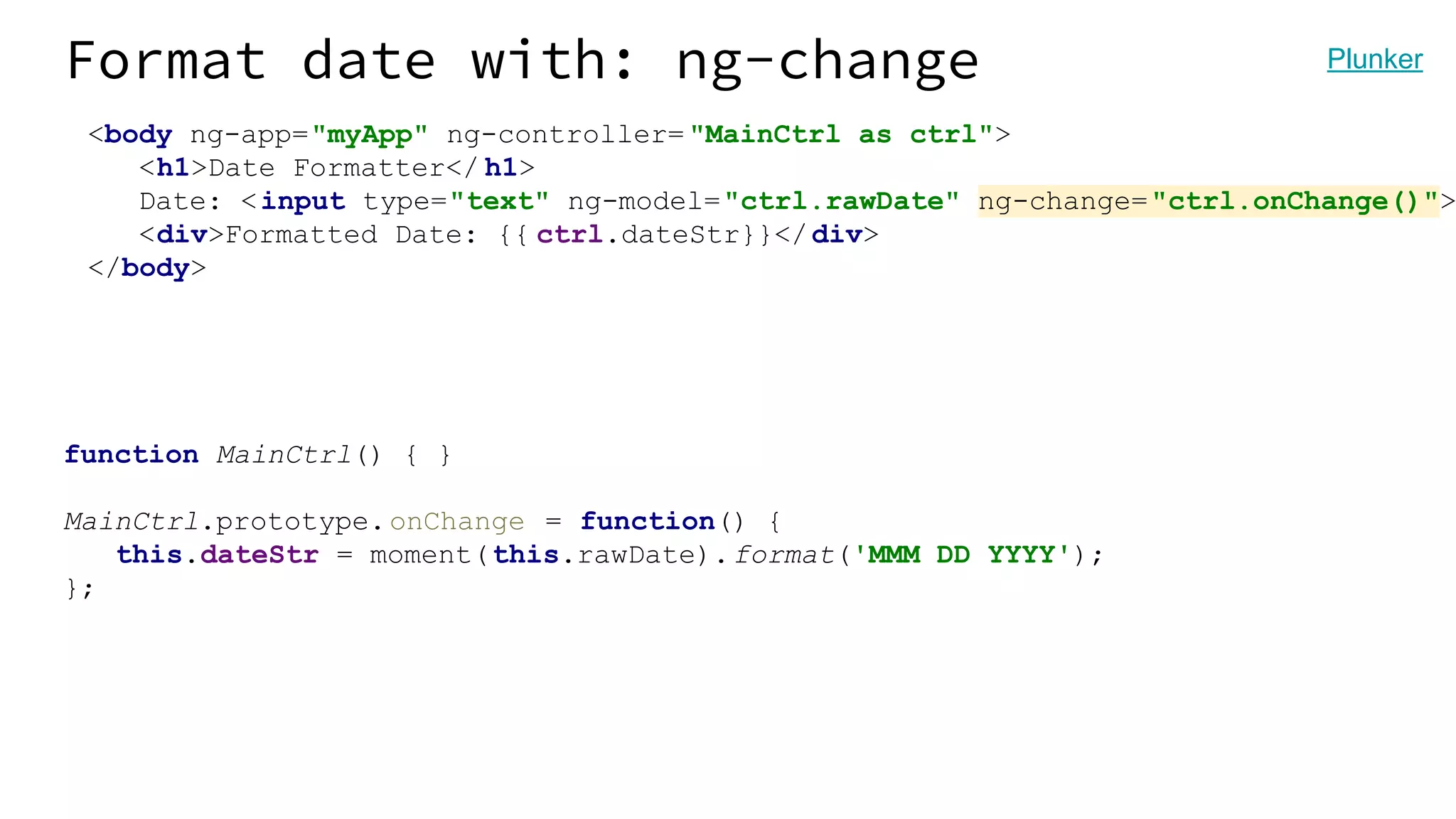
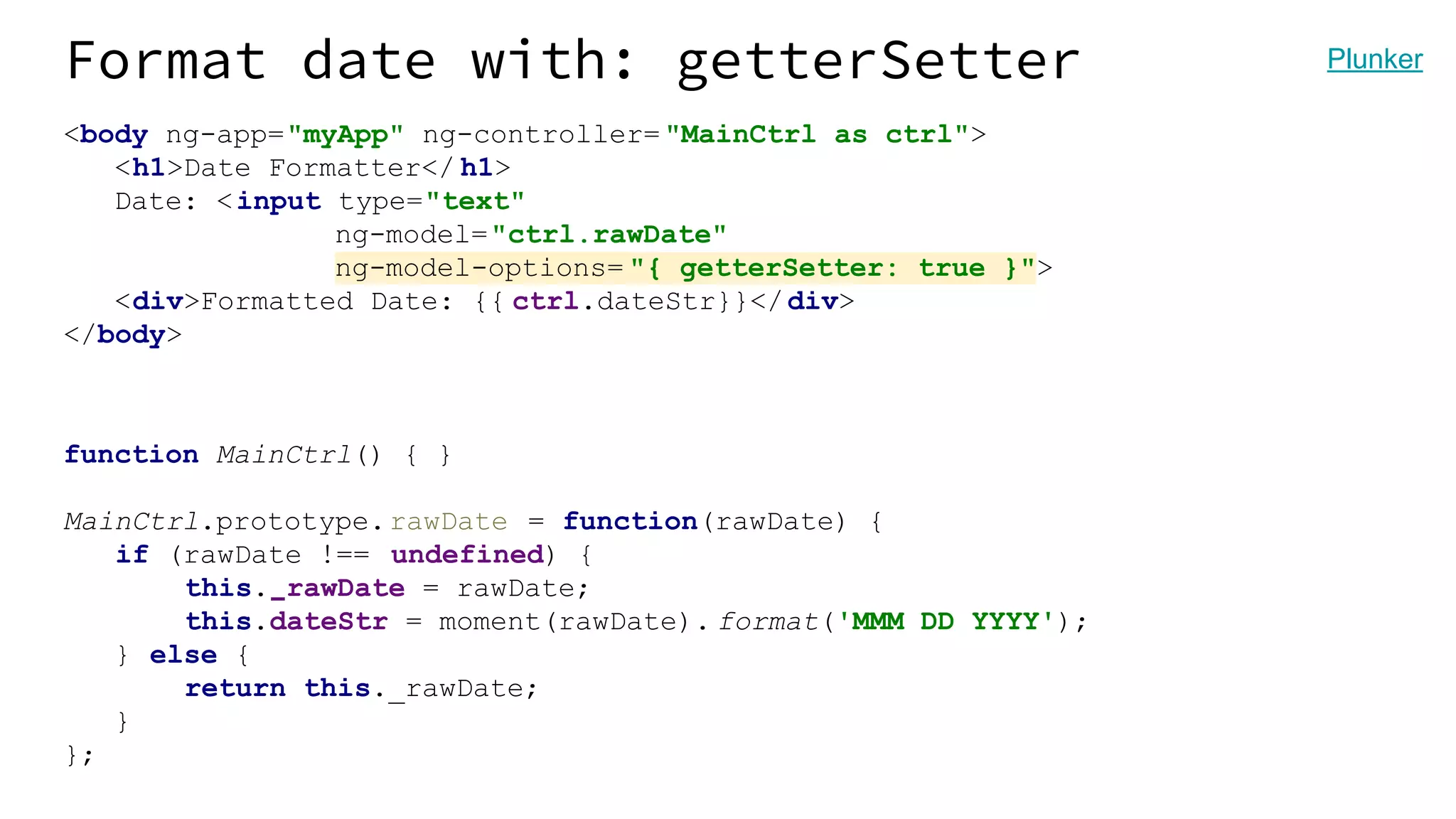
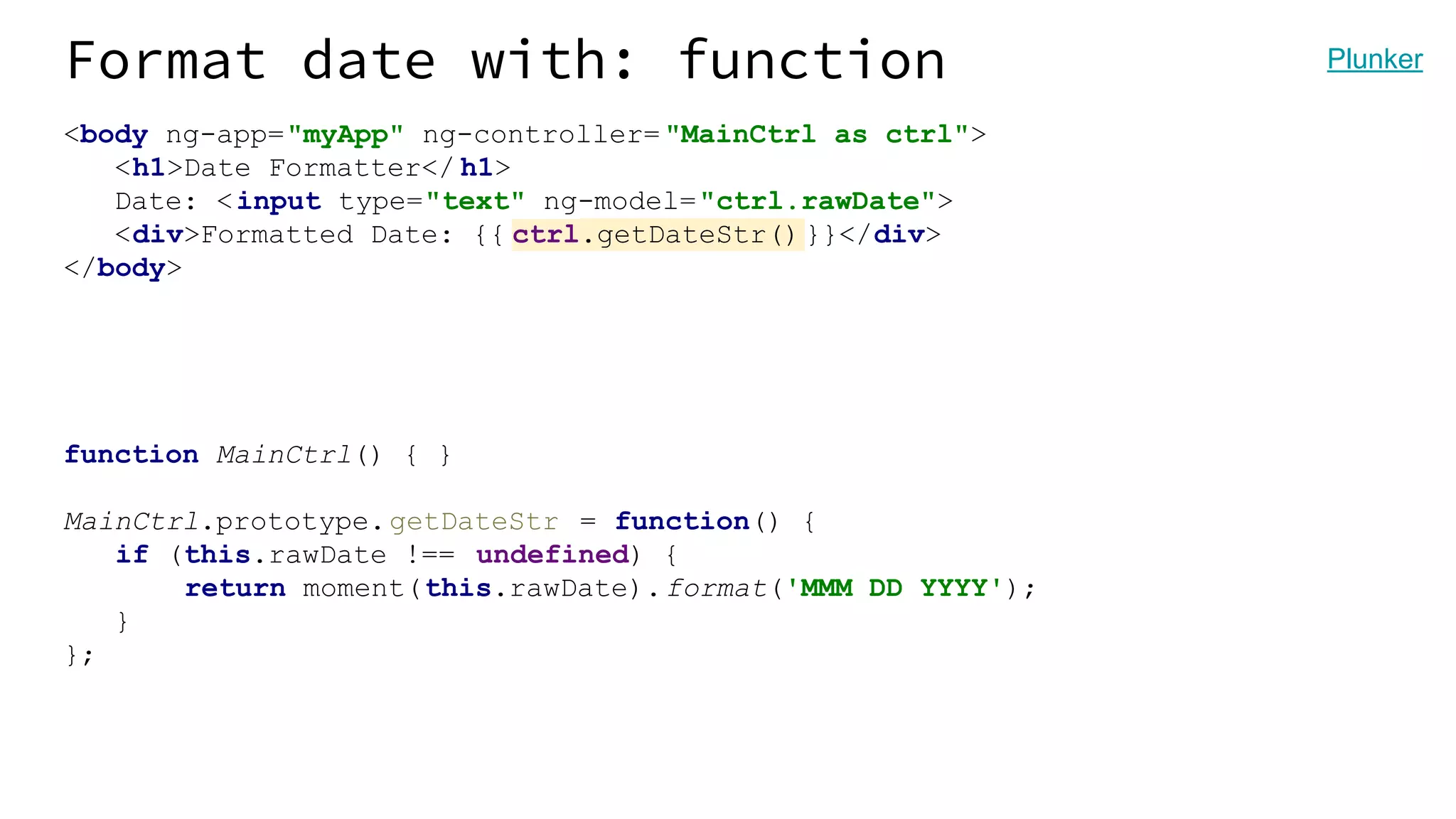

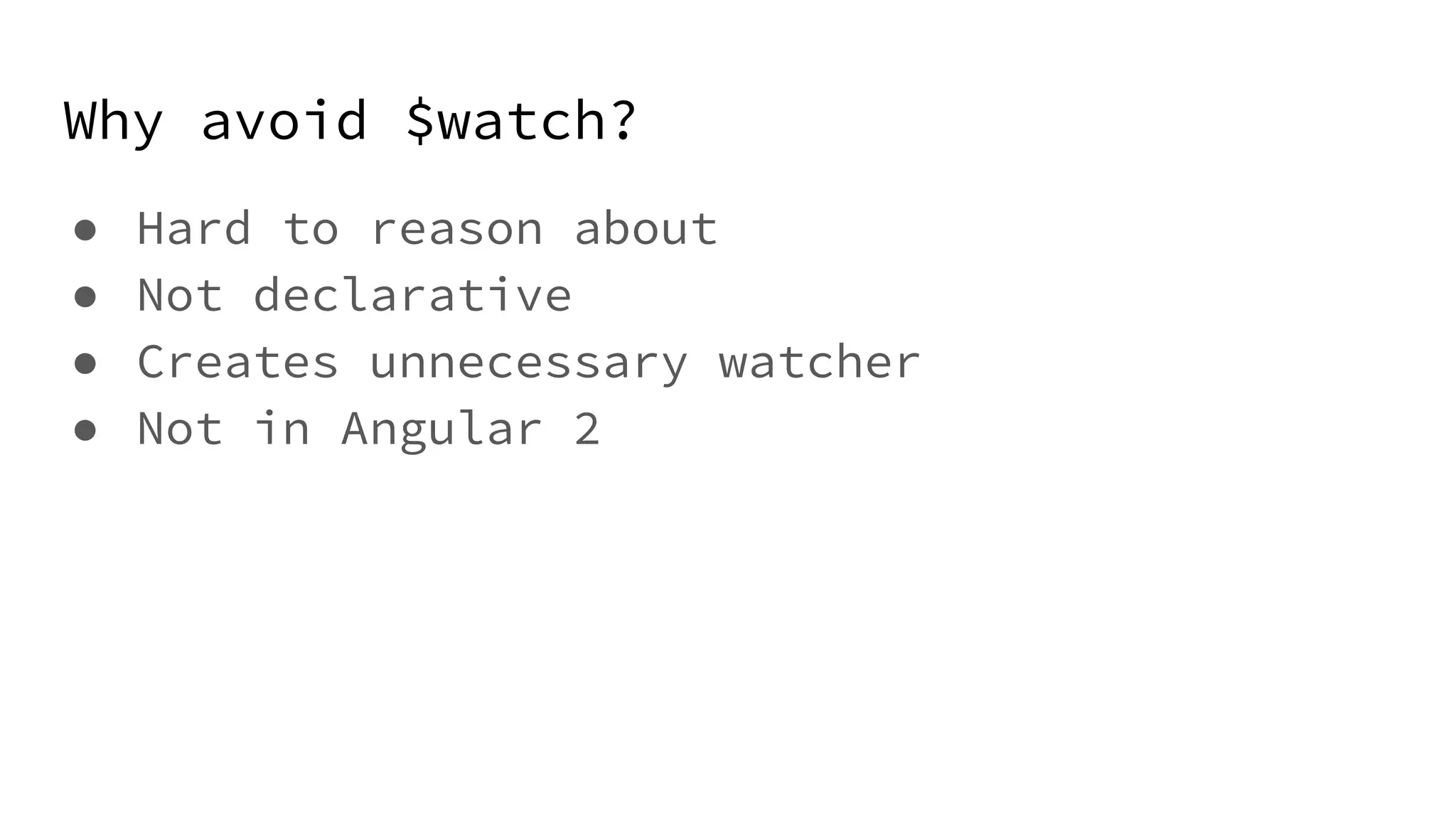
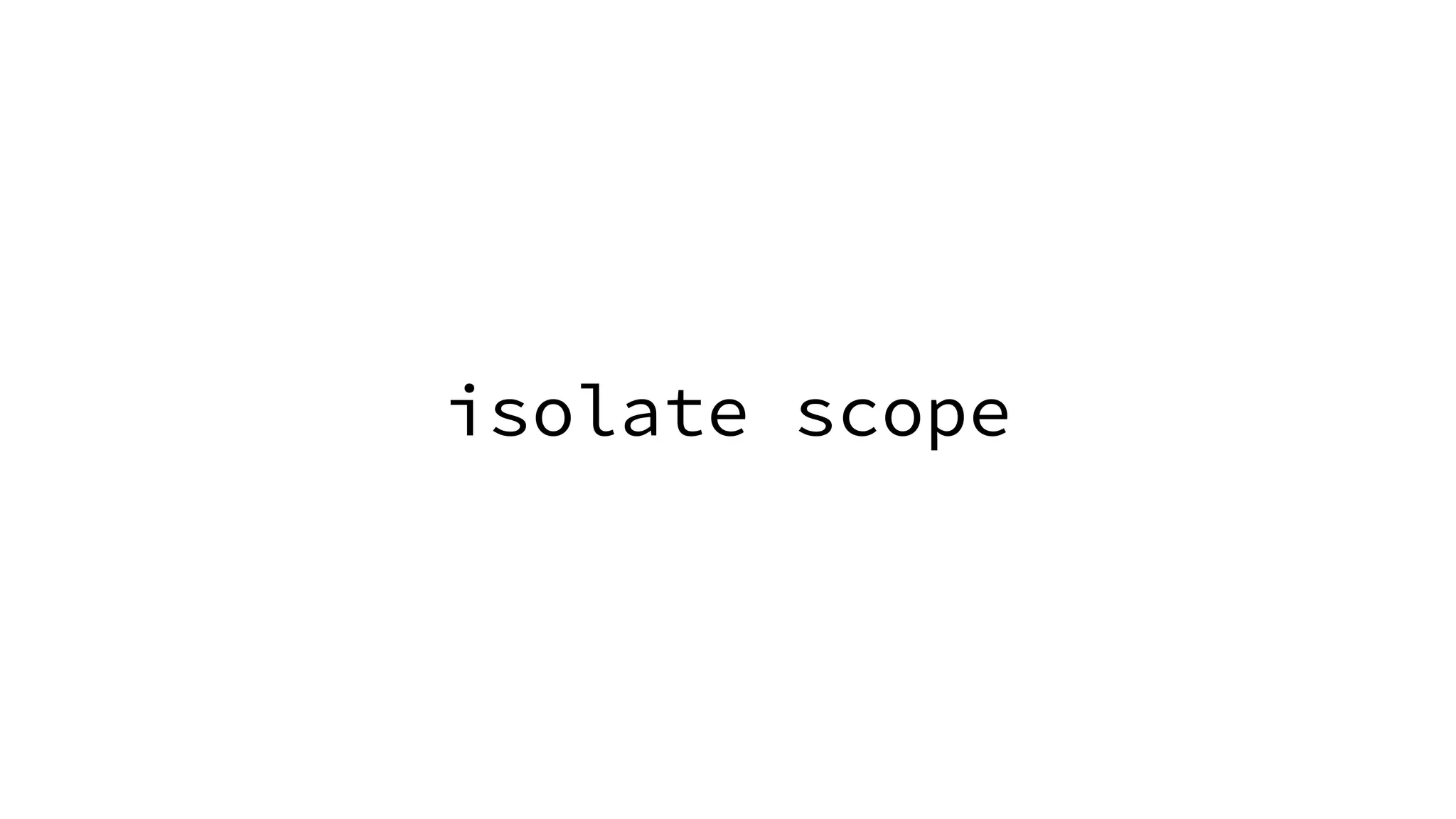
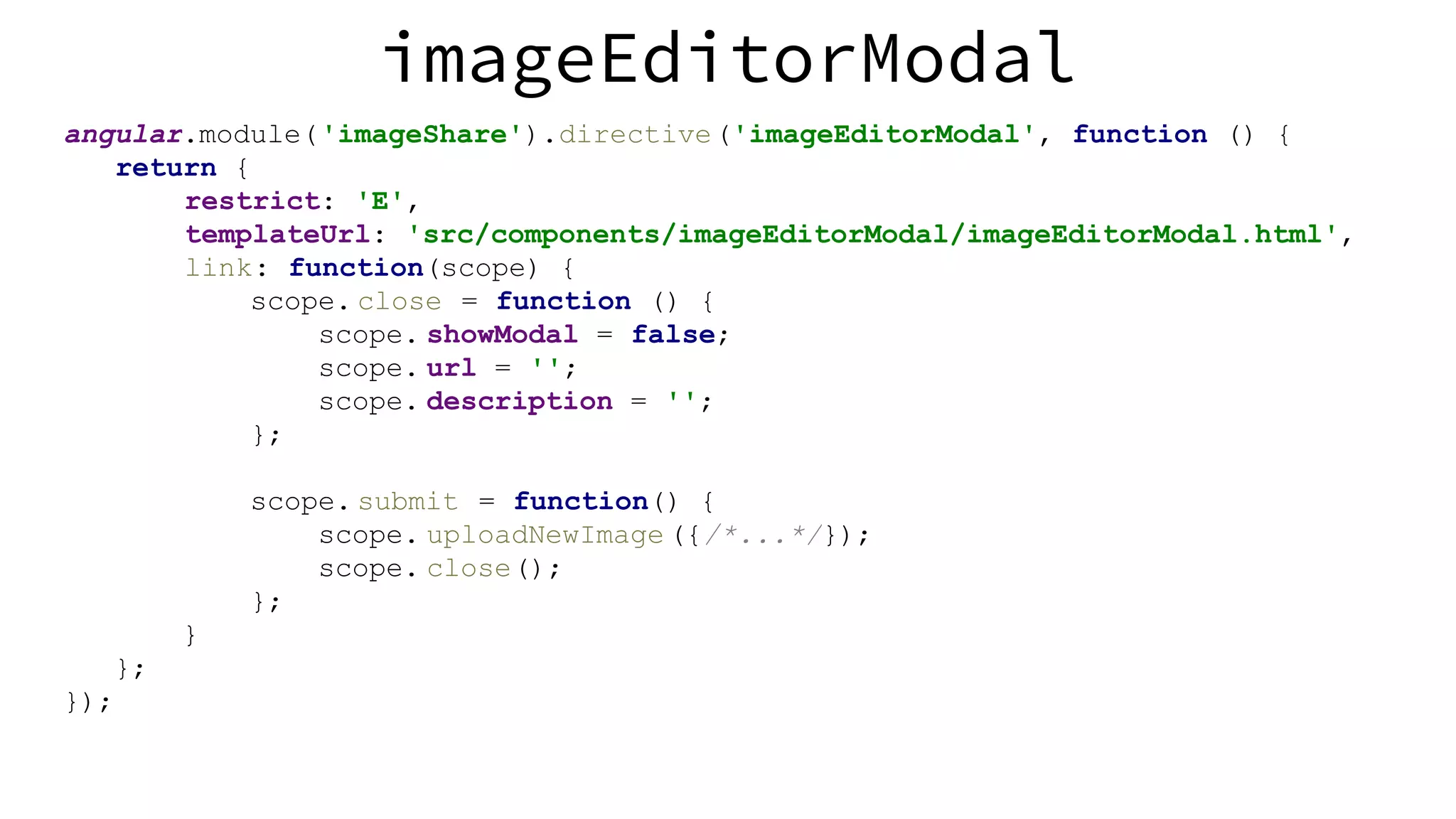
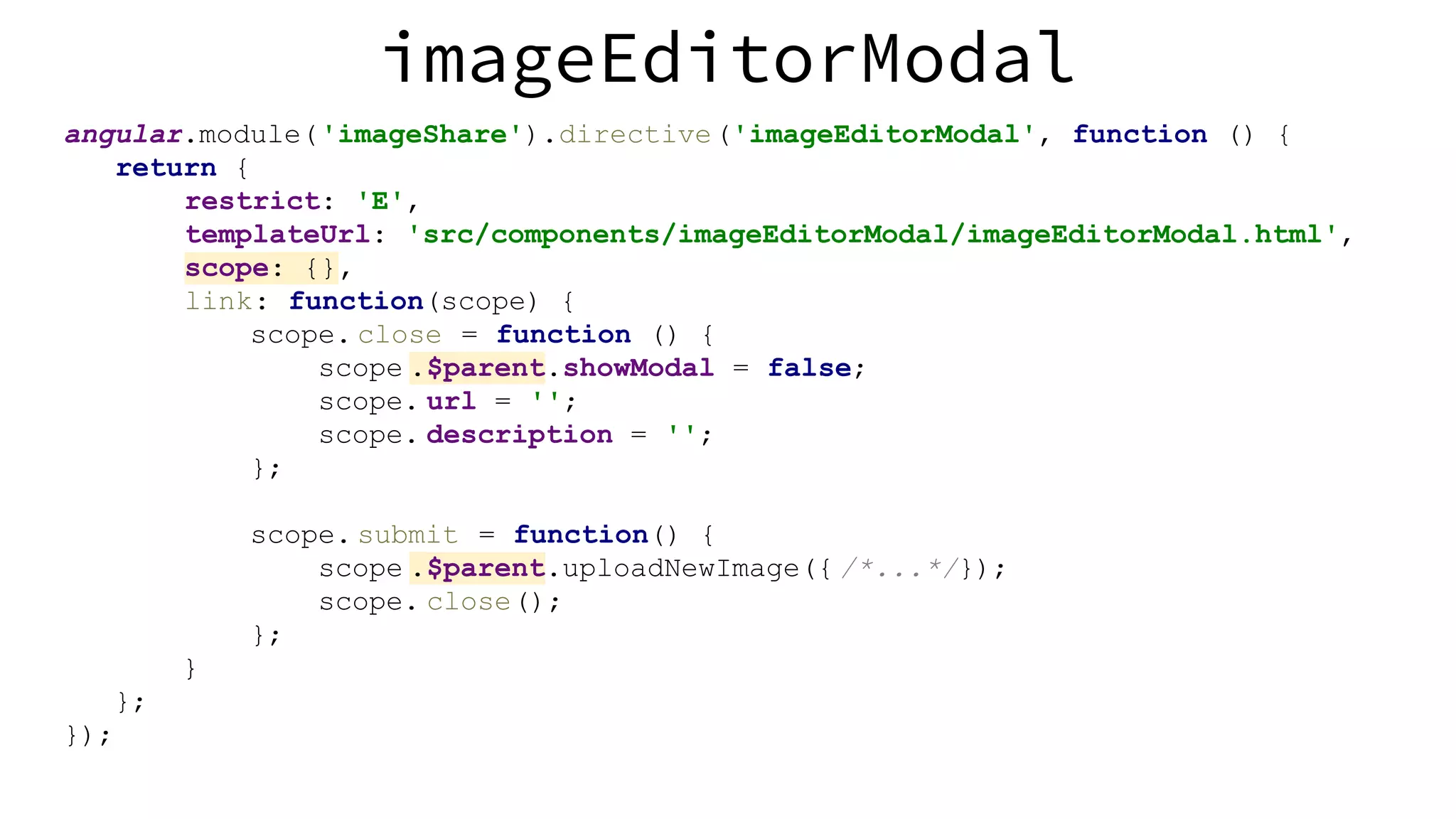
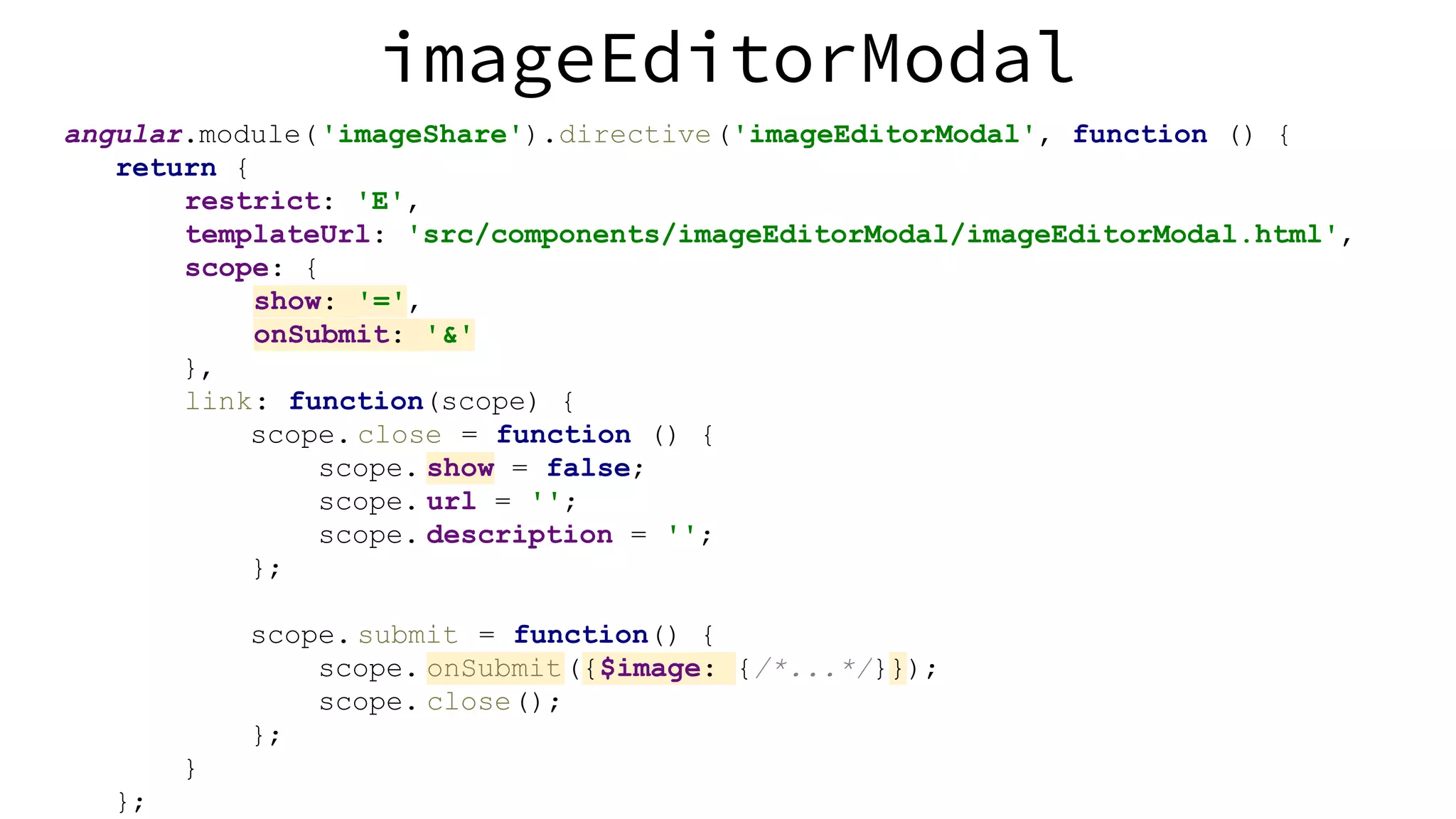
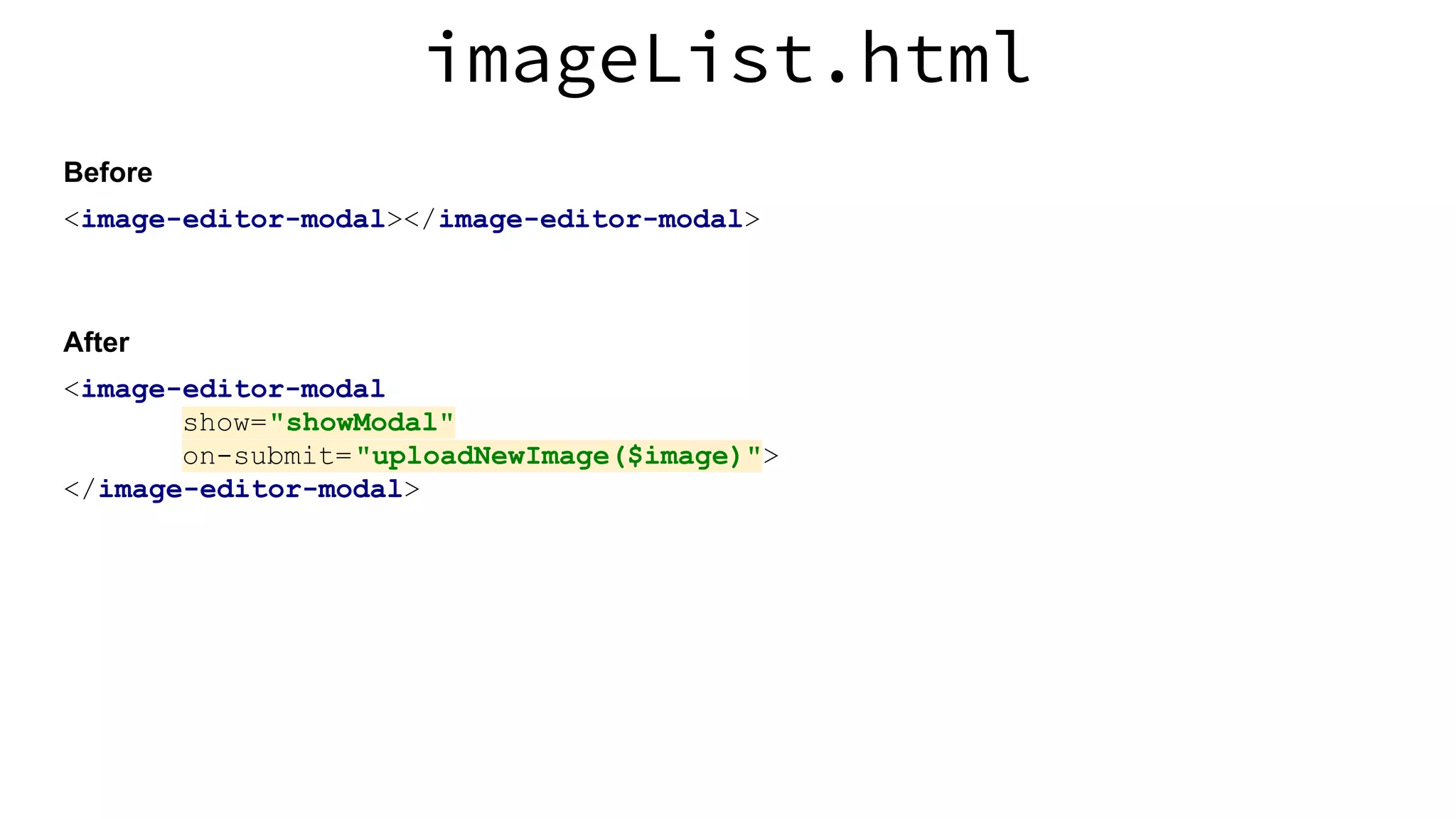
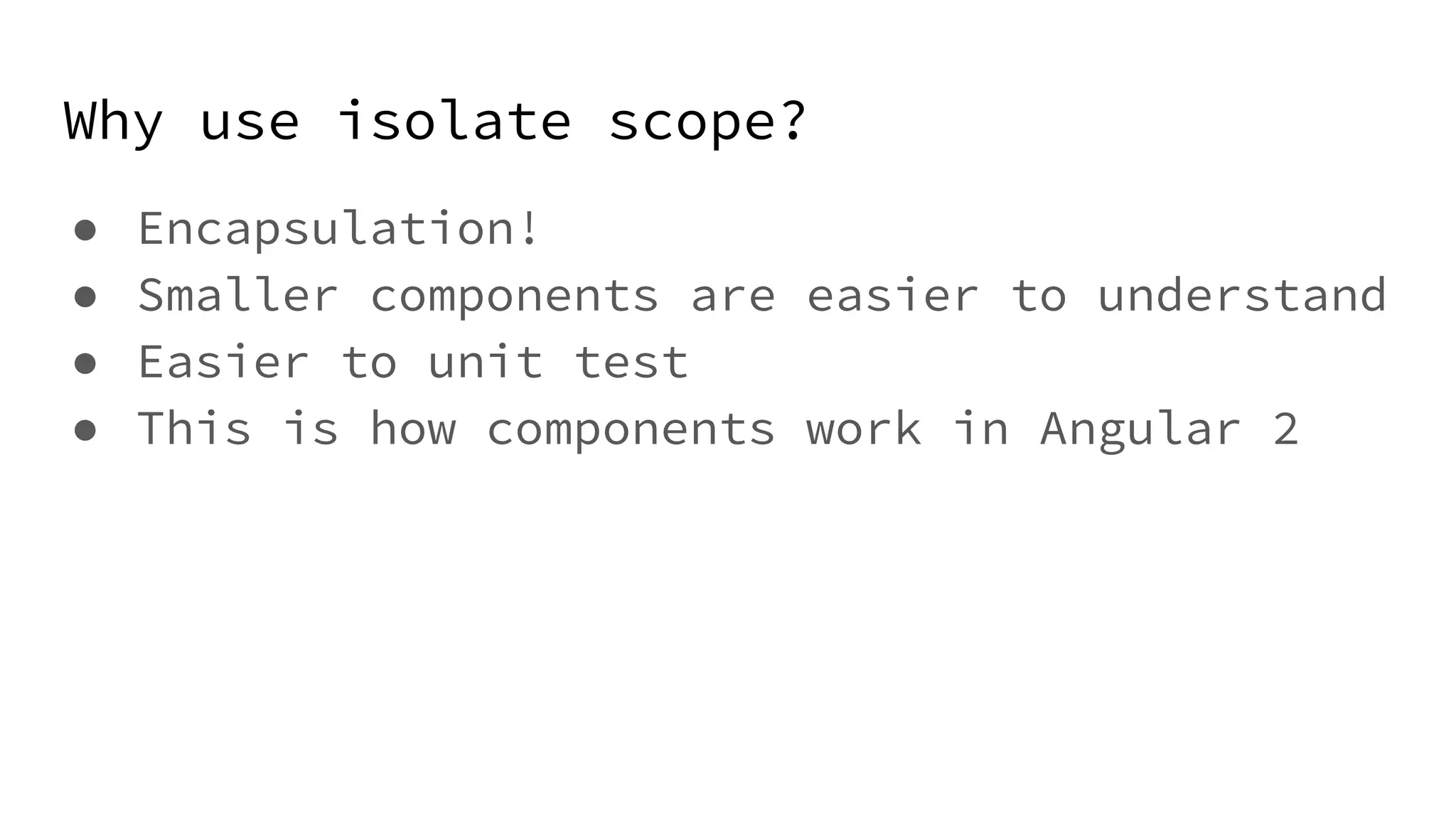
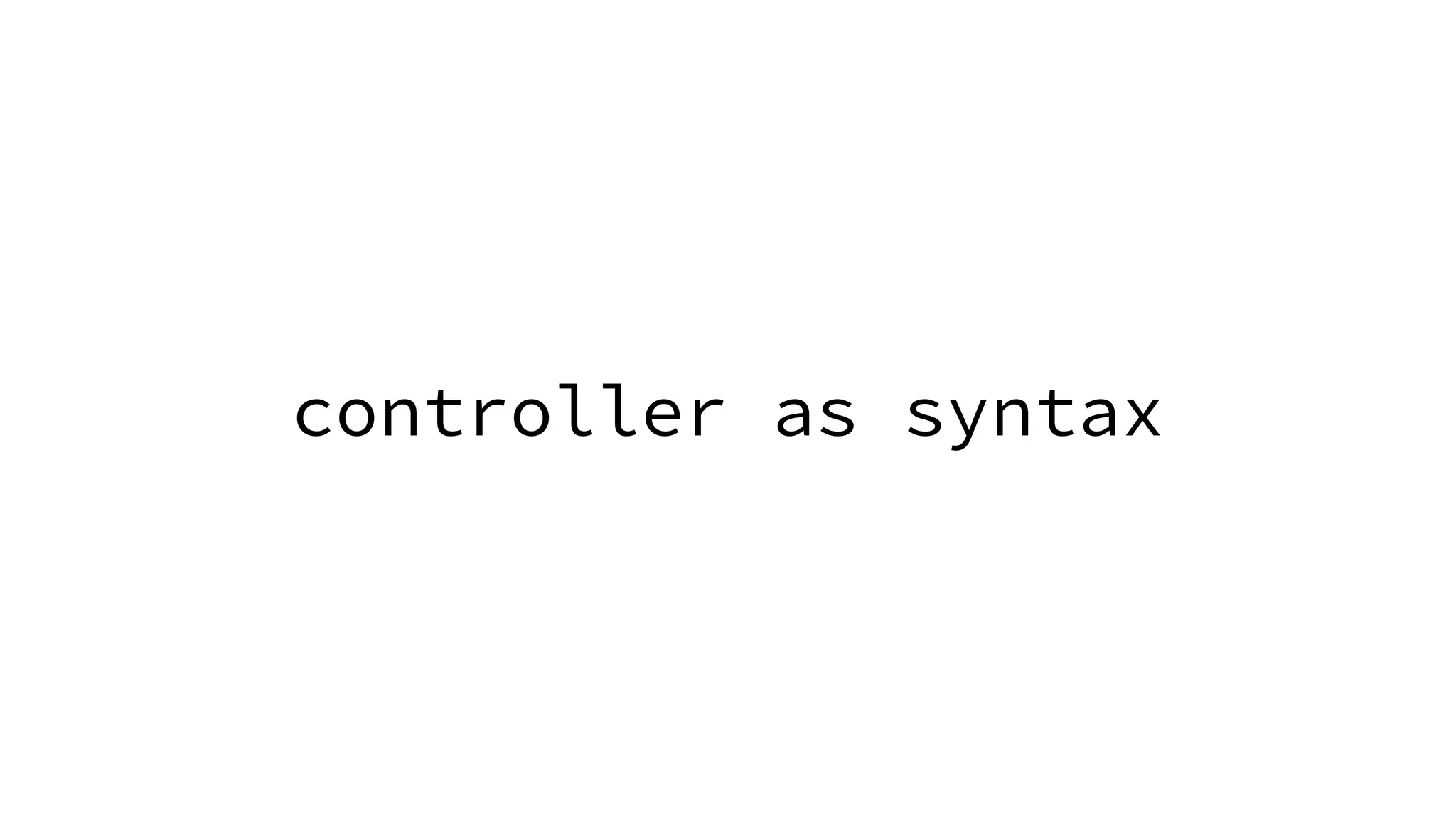
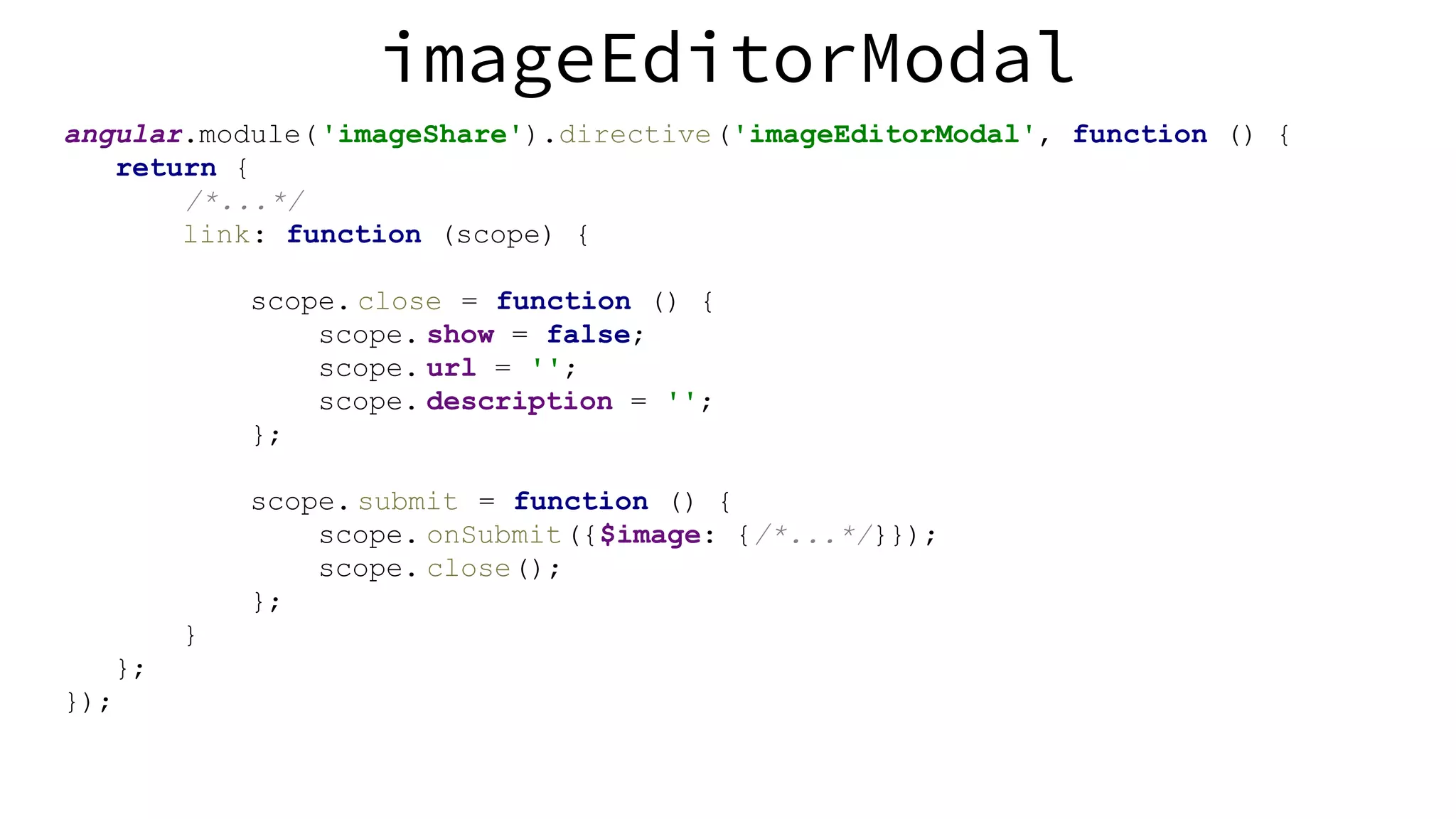
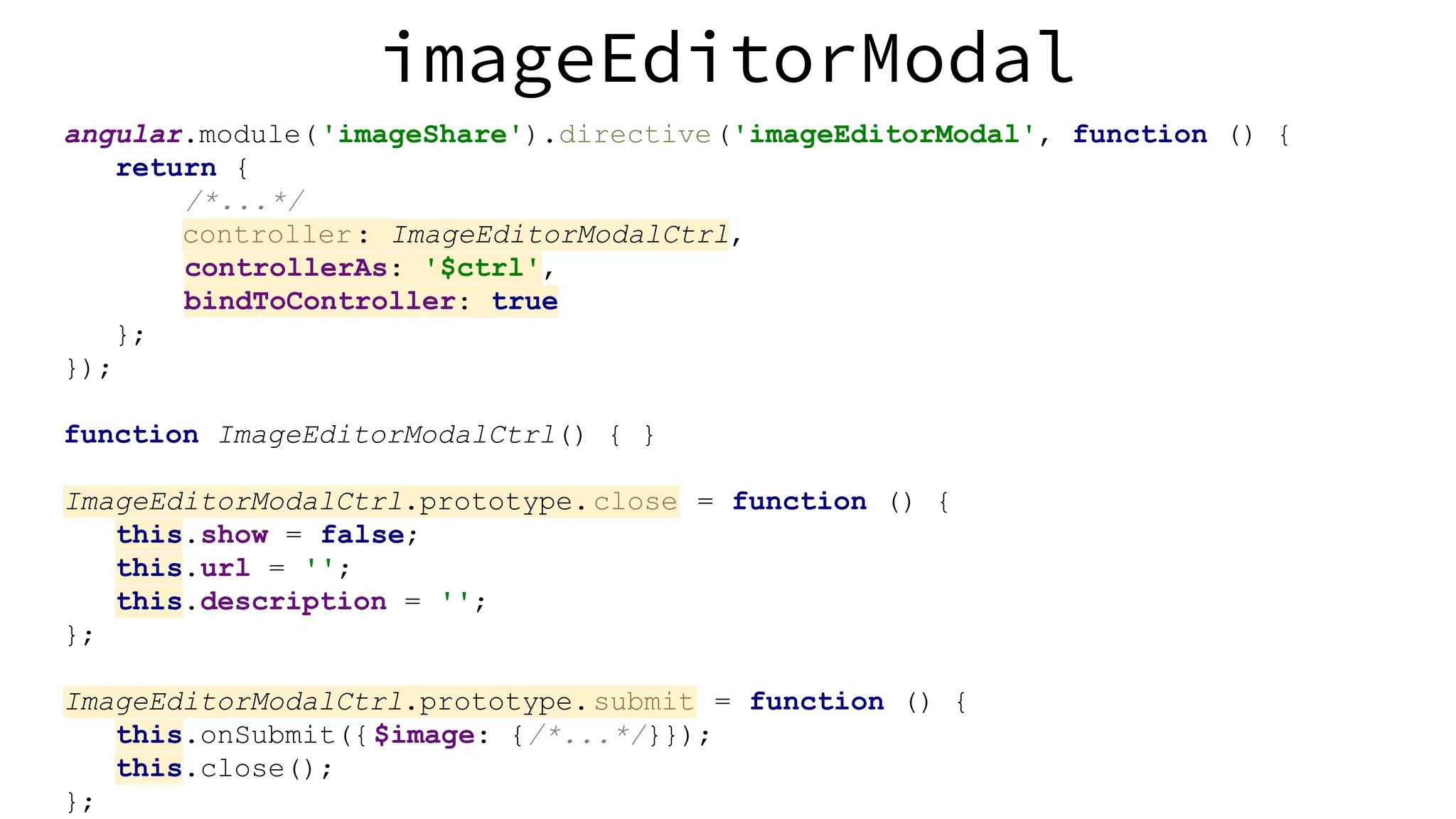
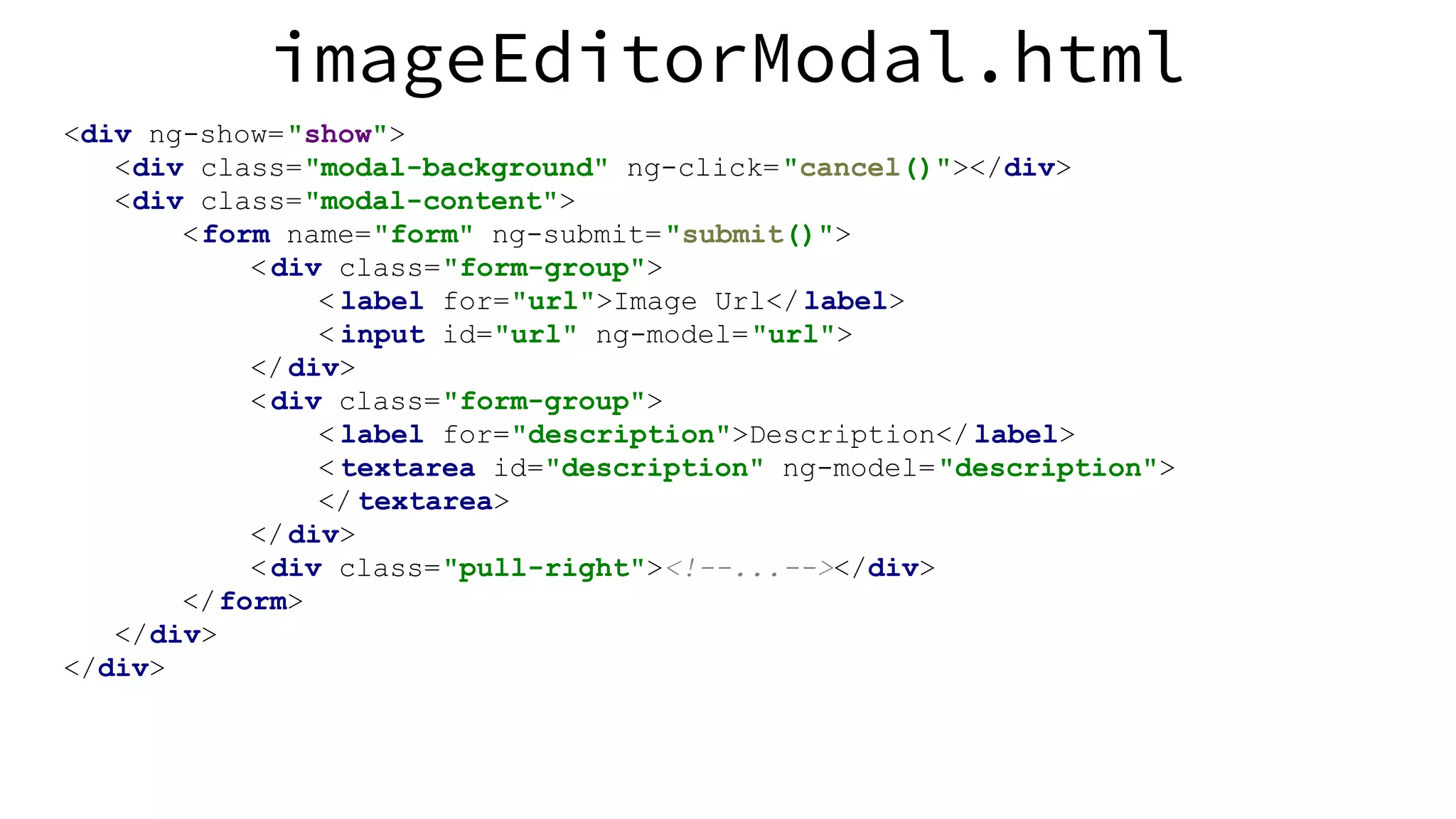
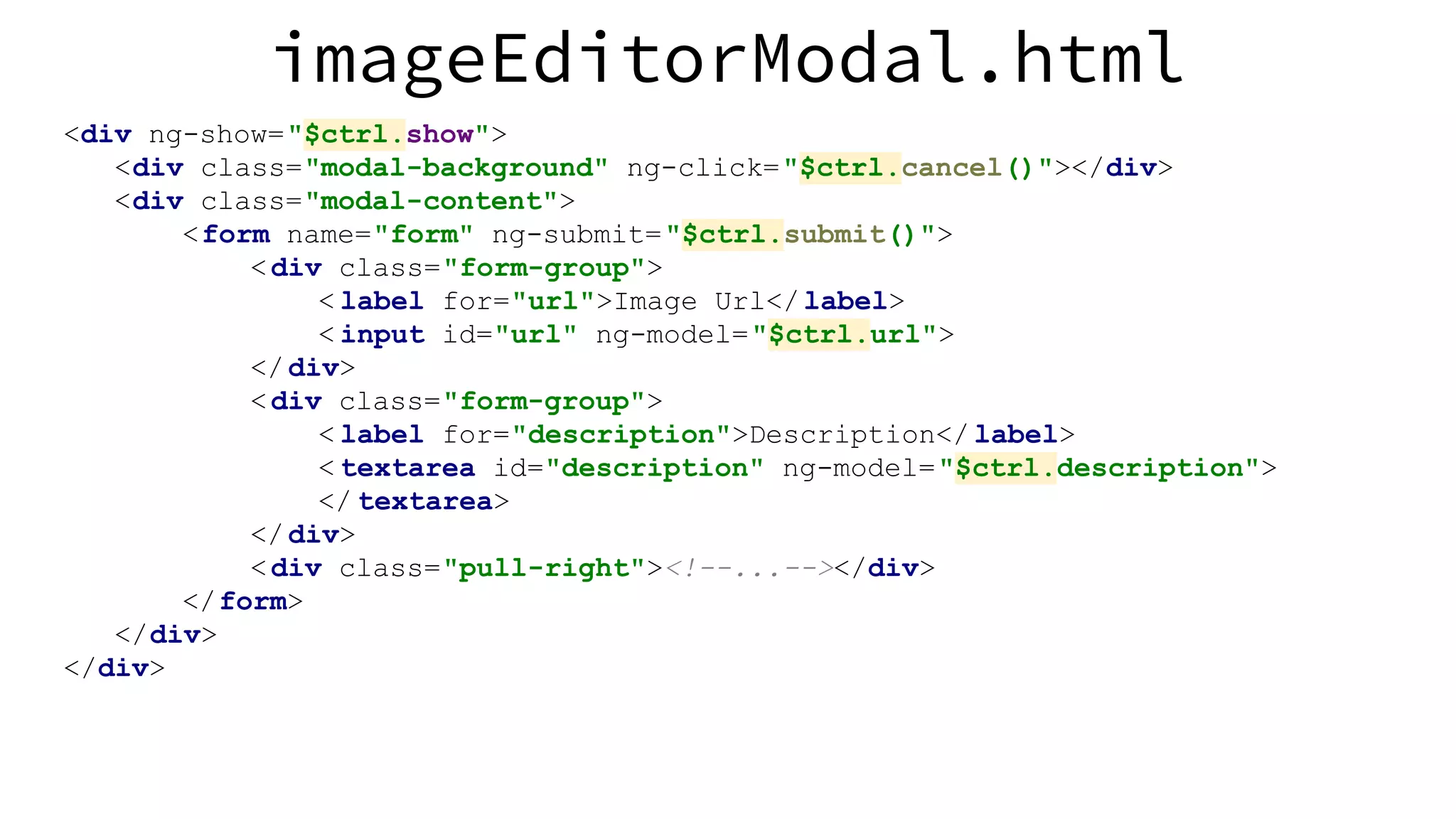
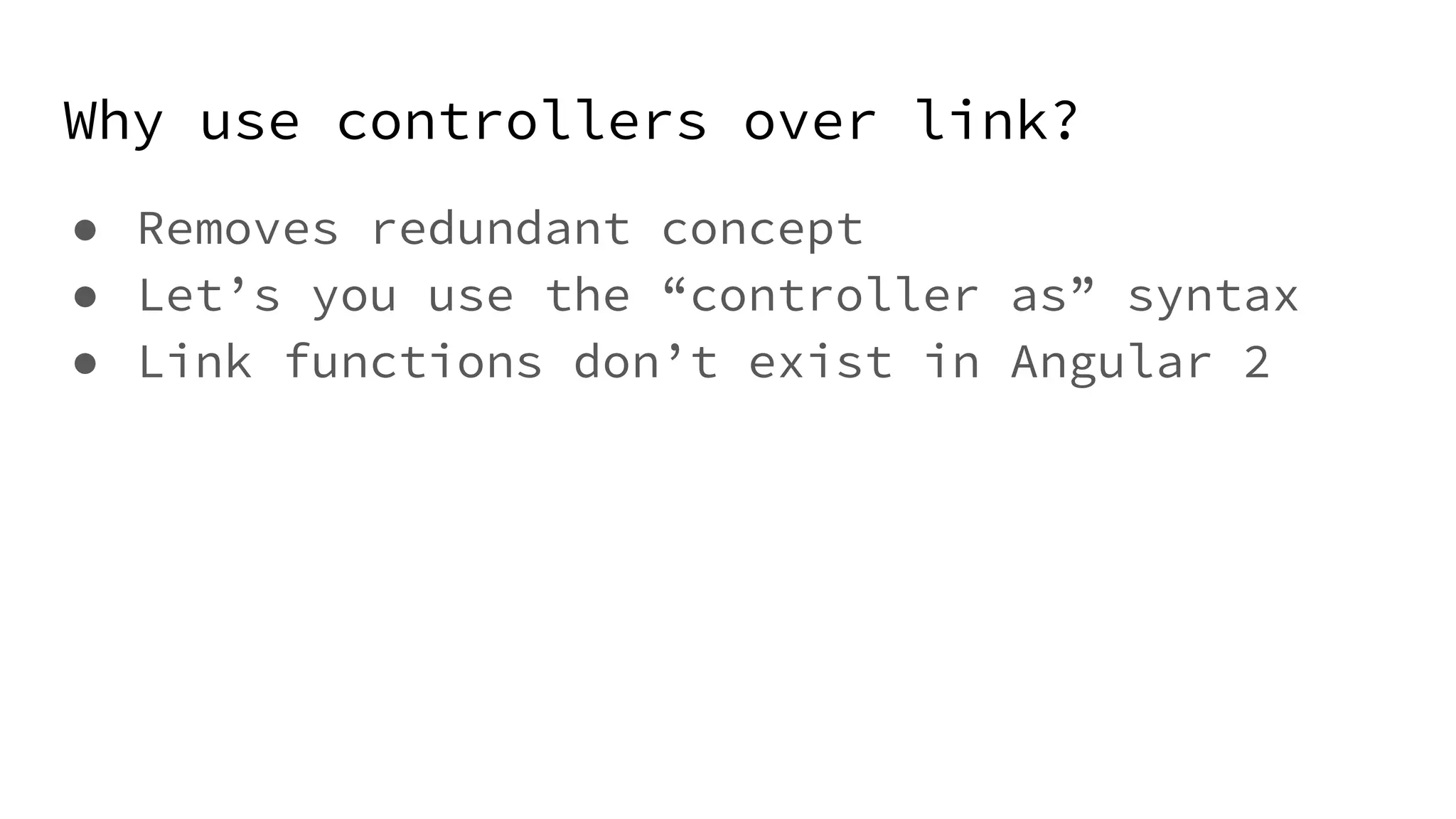
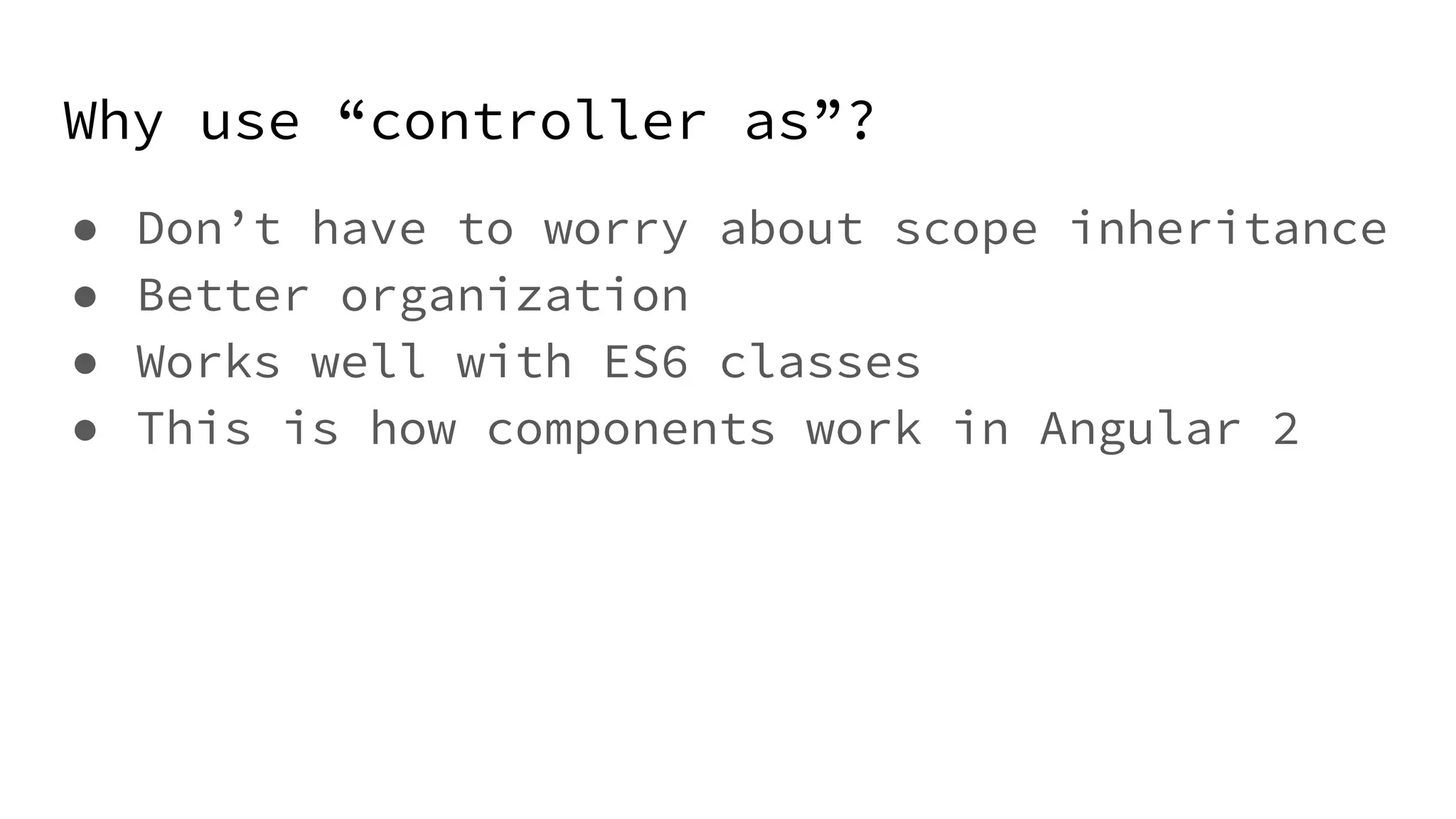
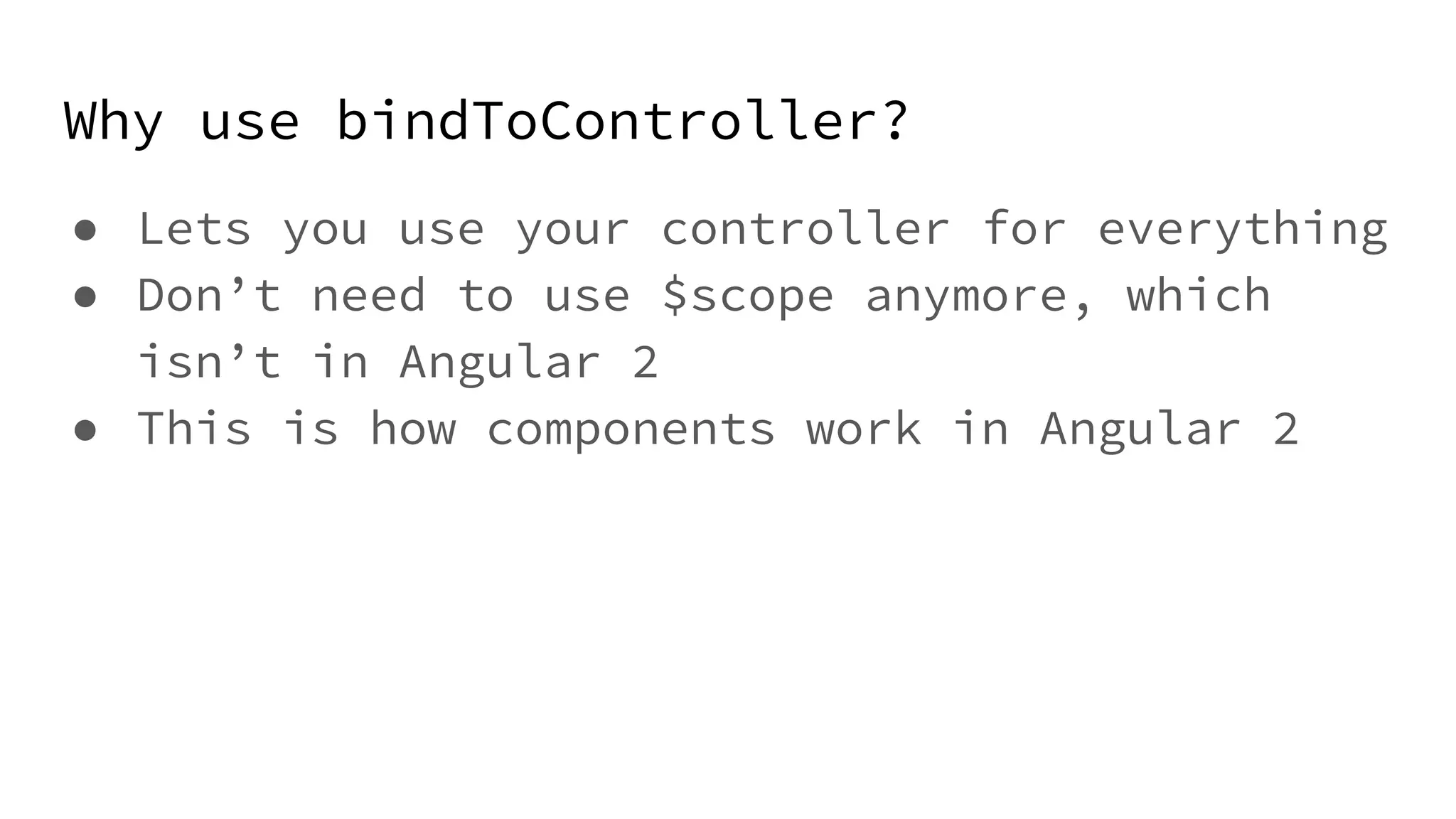
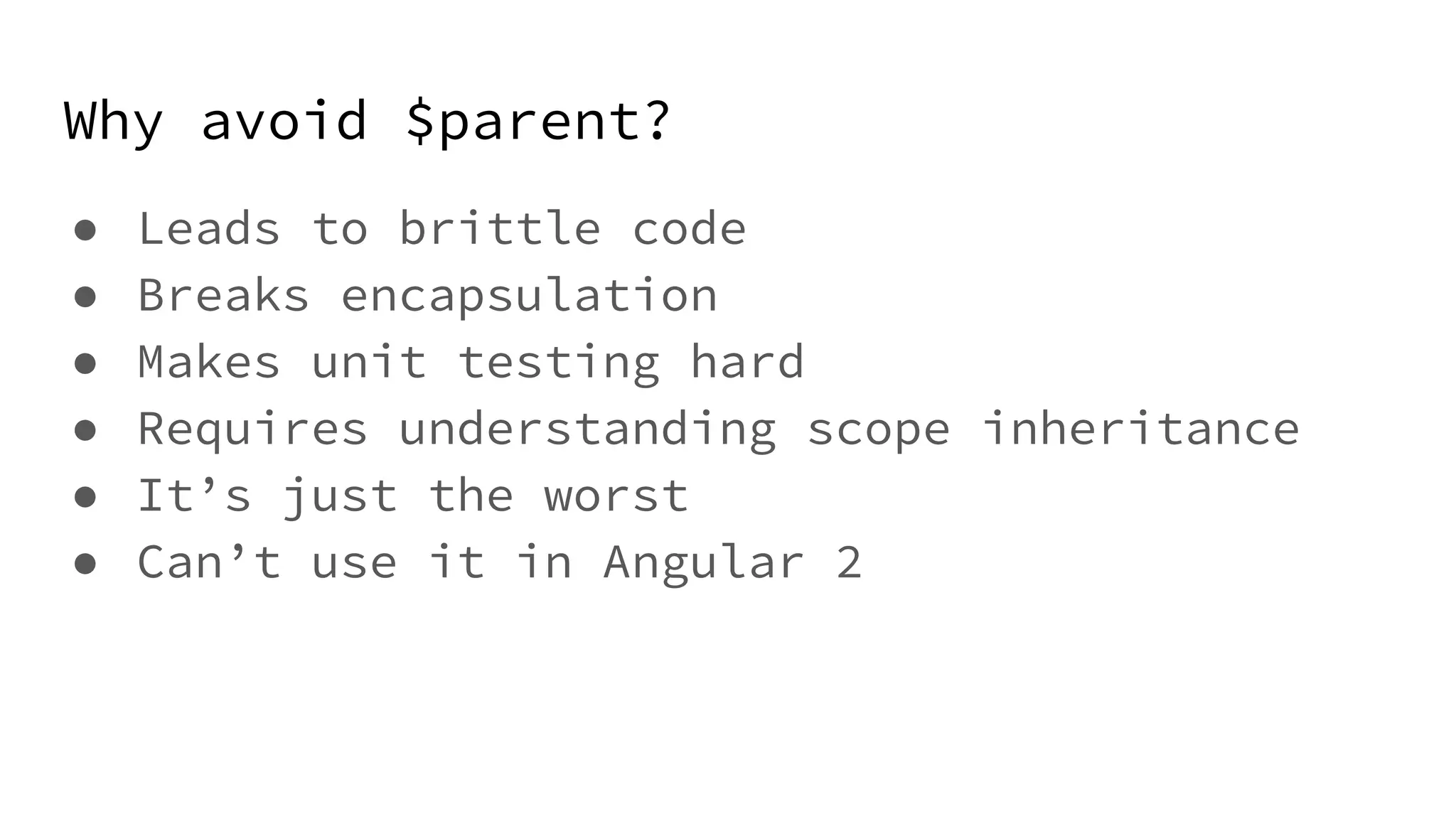
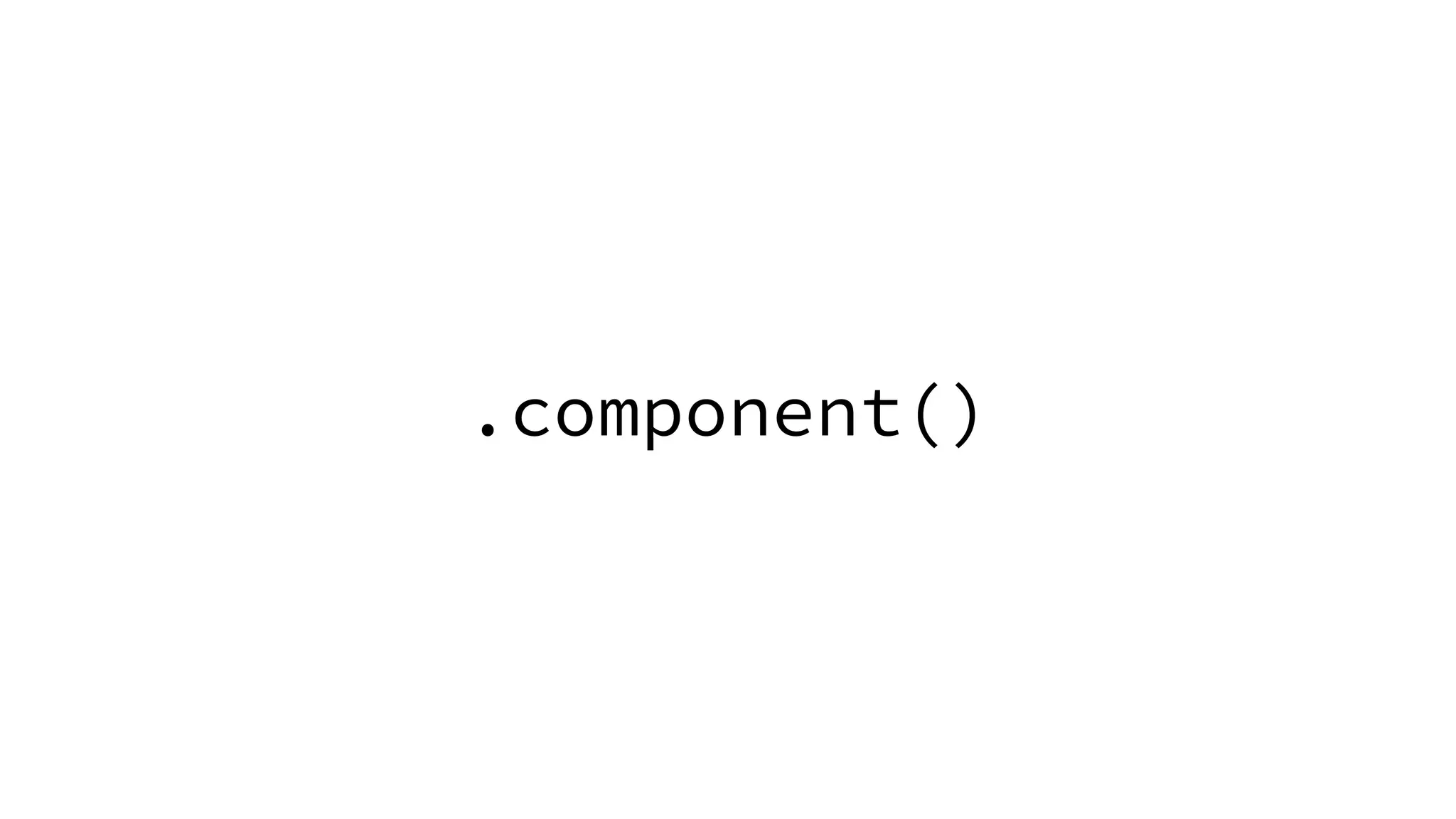
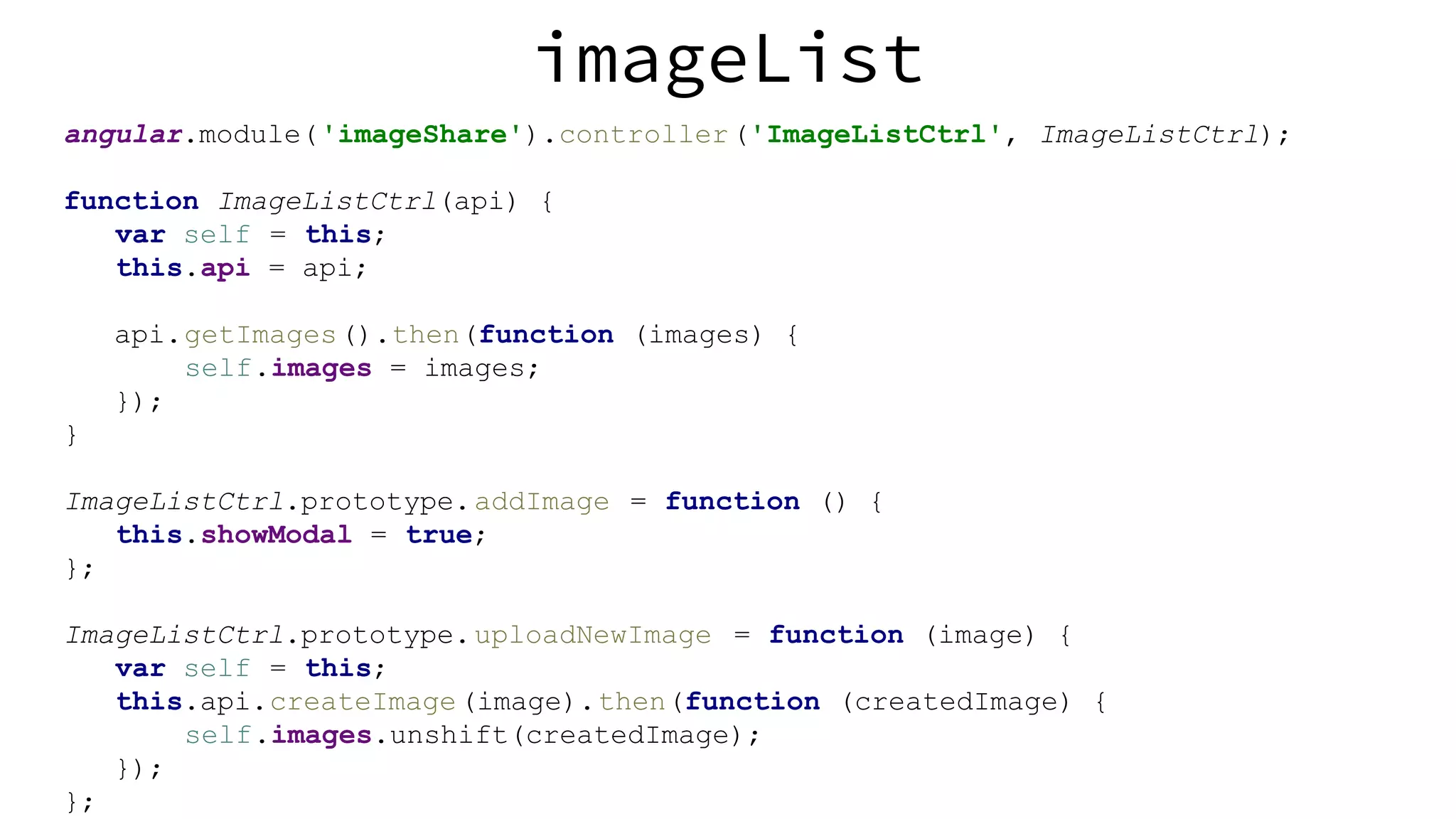
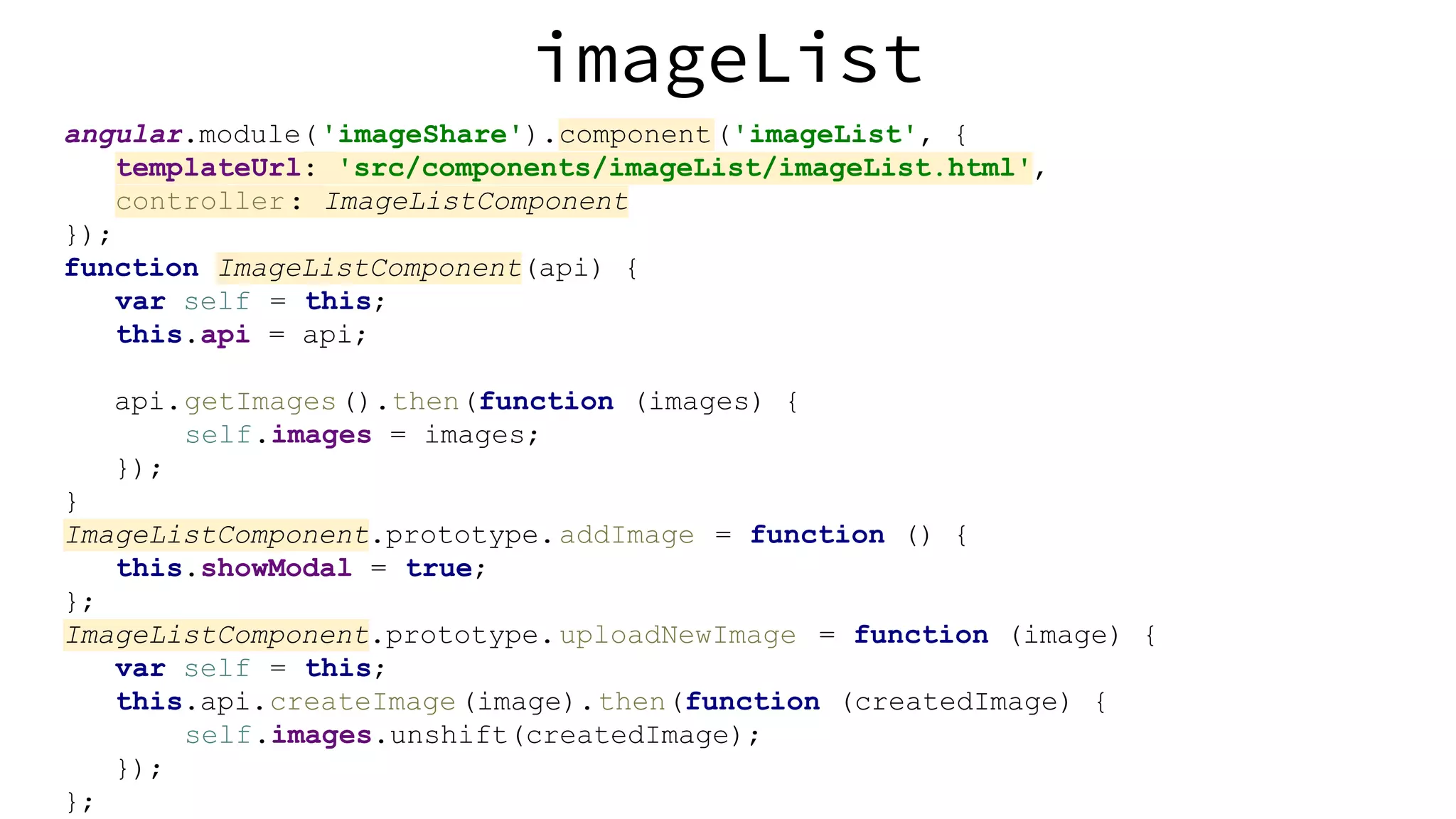
![app.js var app = angular.module('imageShare', ['ngRoute']); app.config(['$routeProvider', function ($routeProvider) { $routeProvider .when('/images', { templateUrl: 'src/components/imageList/imageList.html', controller: 'ImageListCtrl as $ctrl' }) .otherwise({ redirectTo: '/images' }); }]);](https://image.slidesharecdn.com/migratingtoangular2-160429031216/75/Migrating-to-Angular-2-30-2048.jpg)
![app.js var app = angular.module('imageShare', ['ngRoute']); app.config(['$routeProvider', function ($routeProvider) { $routeProvider .when('/images', { template: '<image-list></image-list>' }) .otherwise({ redirectTo: '/images' }); }]);](https://image.slidesharecdn.com/migratingtoangular2-160429031216/75/Migrating-to-Angular-2-31-2048.jpg)
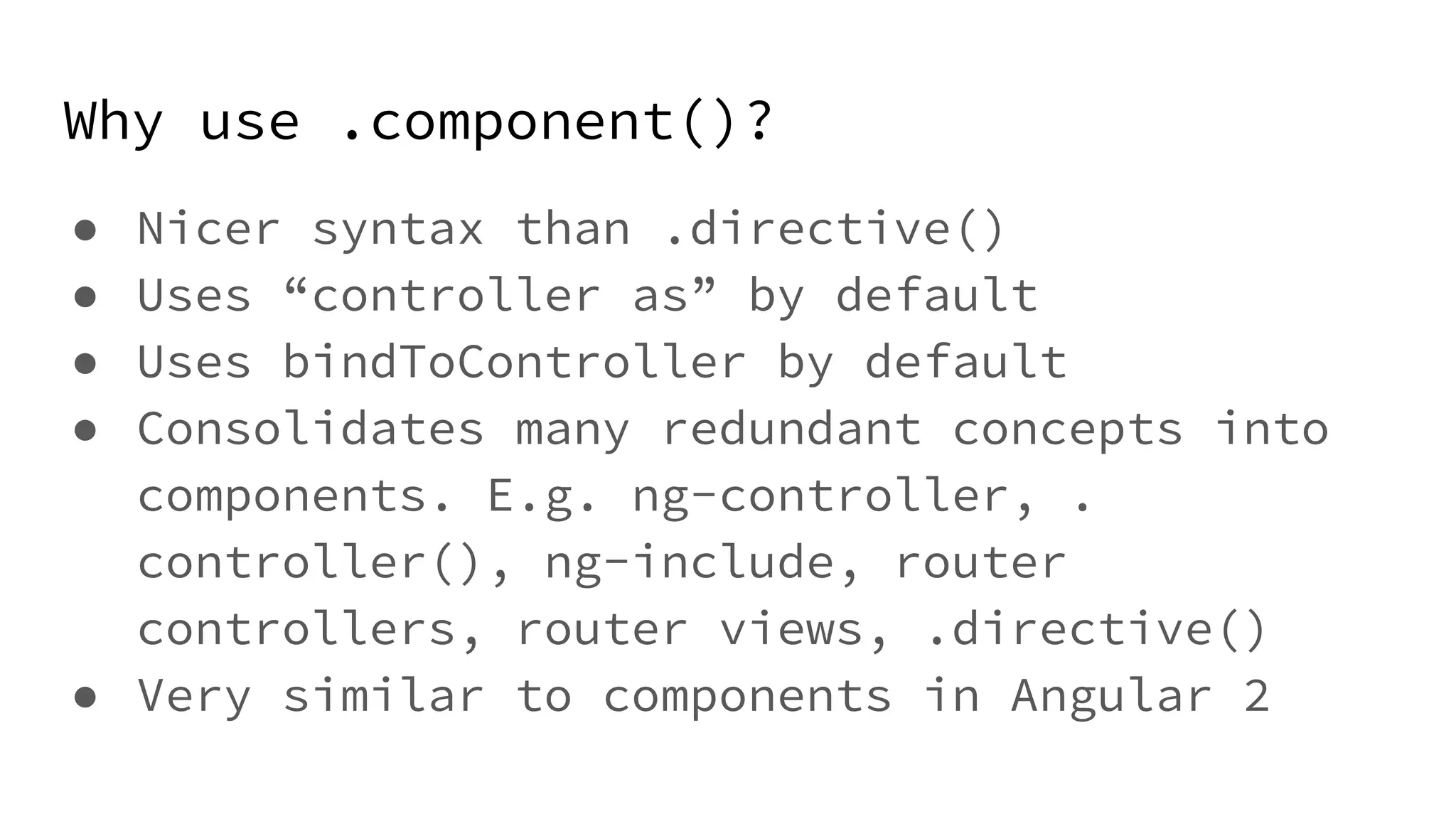
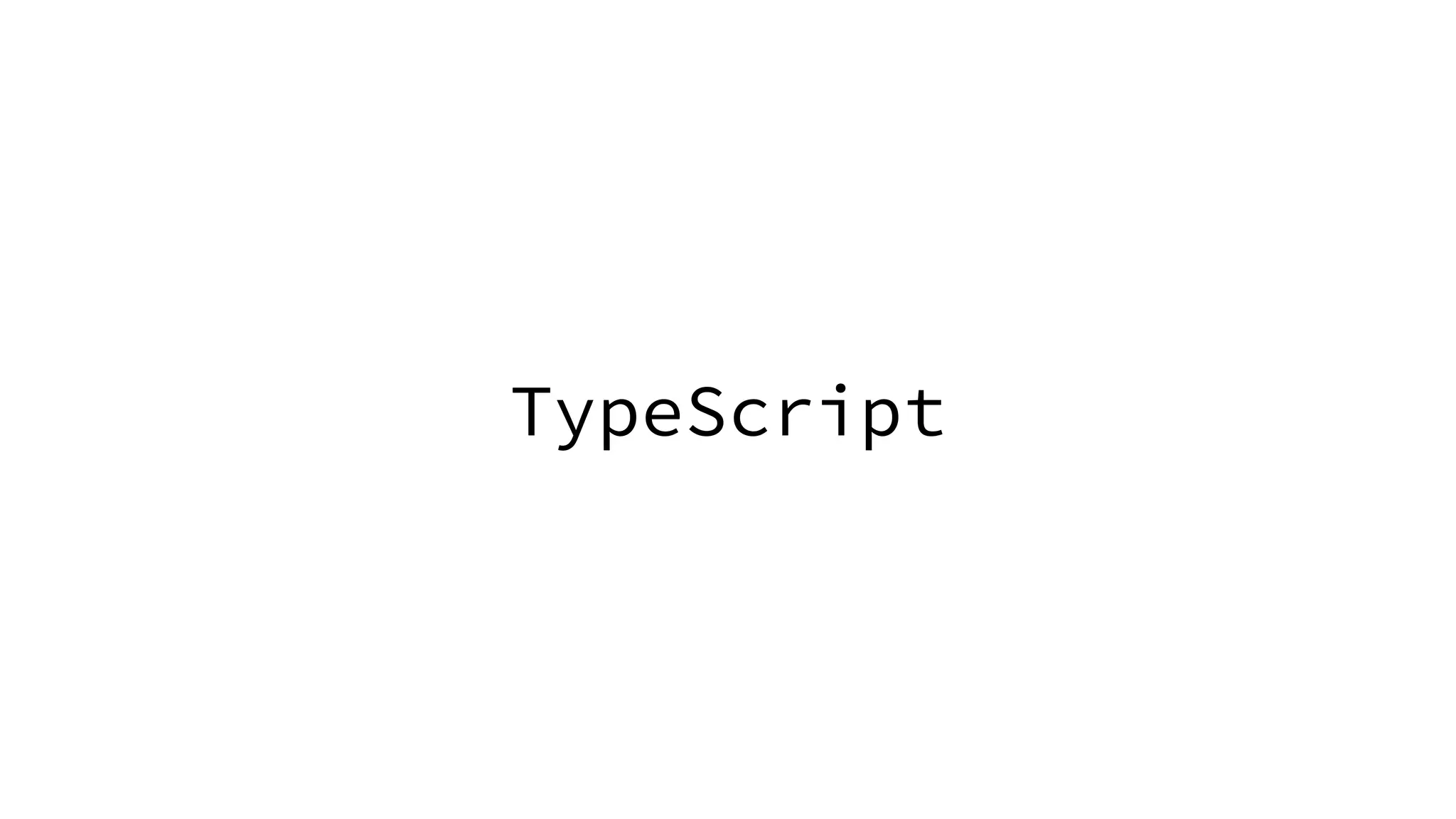
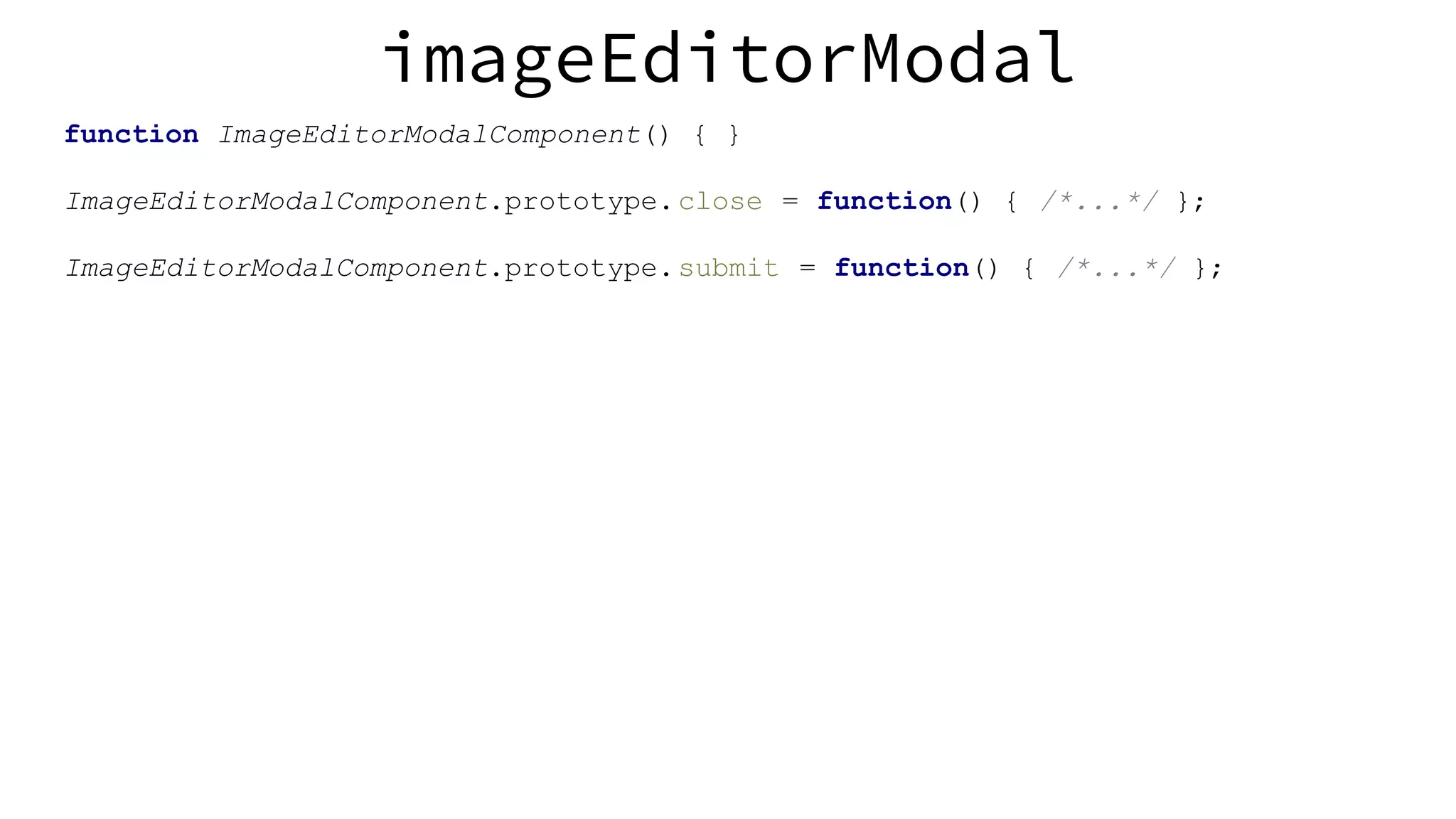
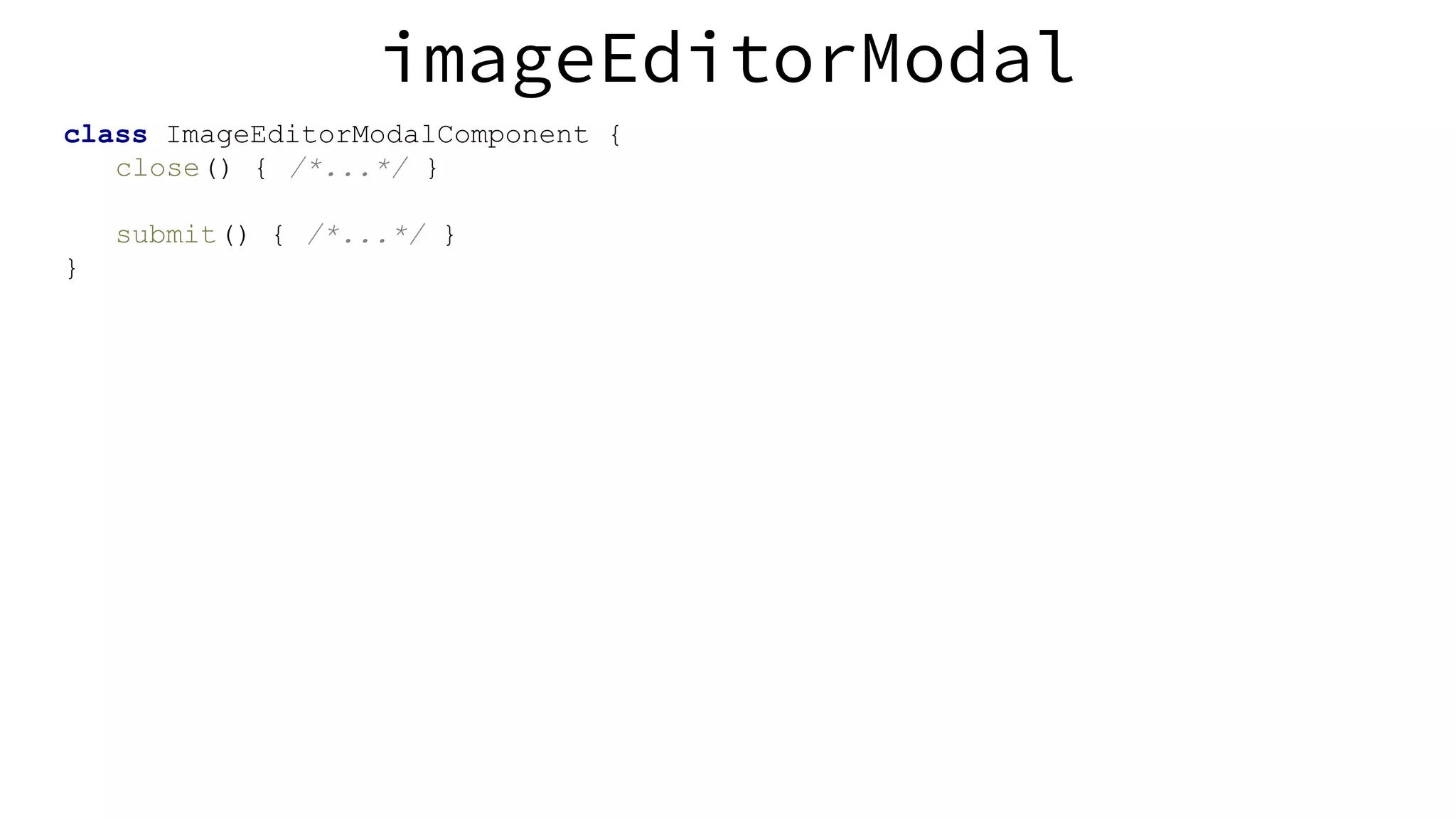

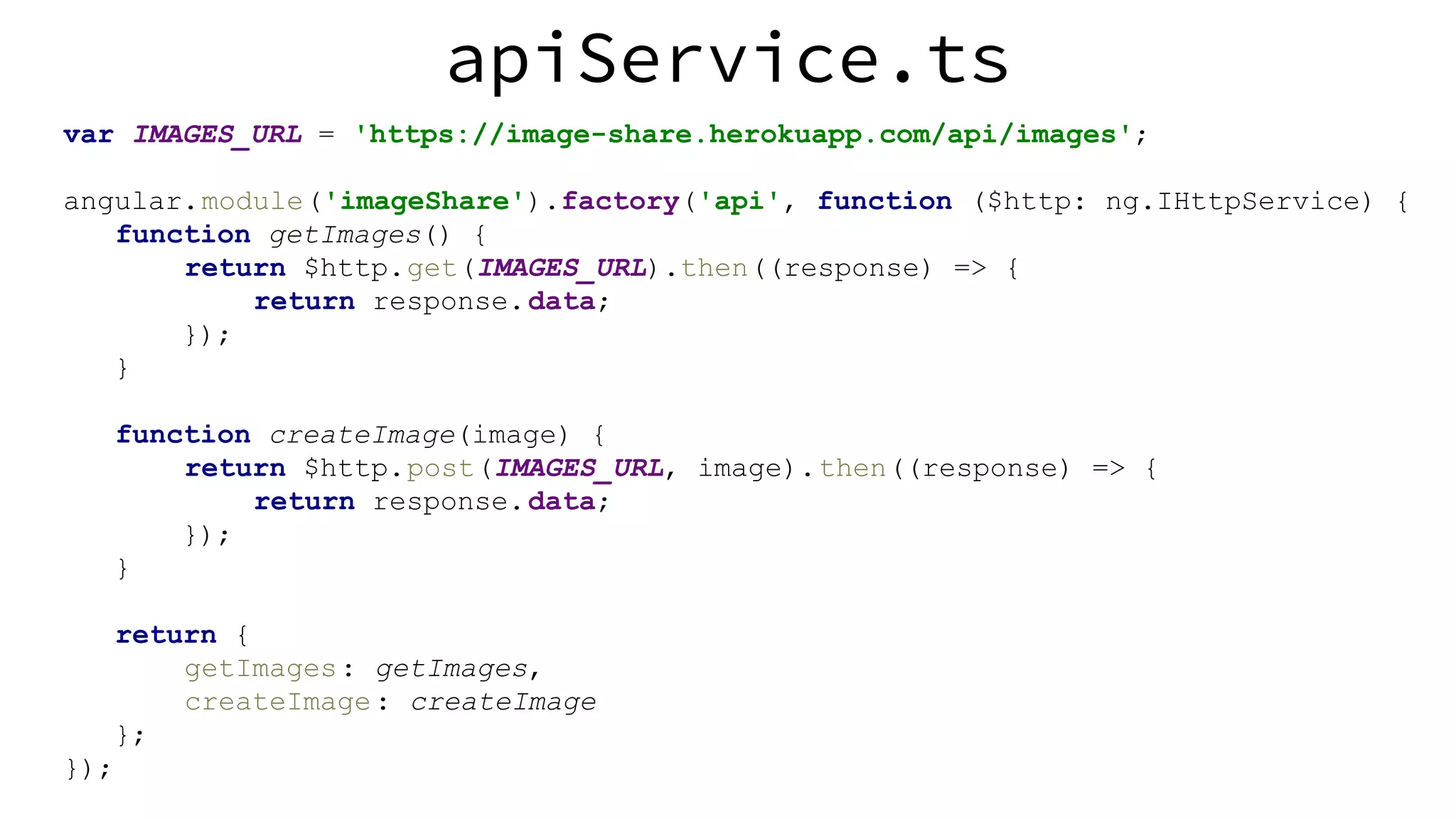
![apiService.ts var IMAGES_URL = 'https://image-share.herokuapp.com/api/images'; class ApiService { constructor(private $http: ng.IHttpService) { } getImages(): ng.IPromise<Image[]> { return this.$http.get(IMAGES_URL).then((response) => { return response.data; }); } createImage(image): ng.IPromise<Image> { return this.$http.post(IMAGES_URL, image).then((response) => { return response.data; }); } } angular.module('imageShare').service('api', ApiService);](https://image.slidesharecdn.com/migratingtoangular2-160429031216/75/Migrating-to-Angular-2-38-2048.jpg)
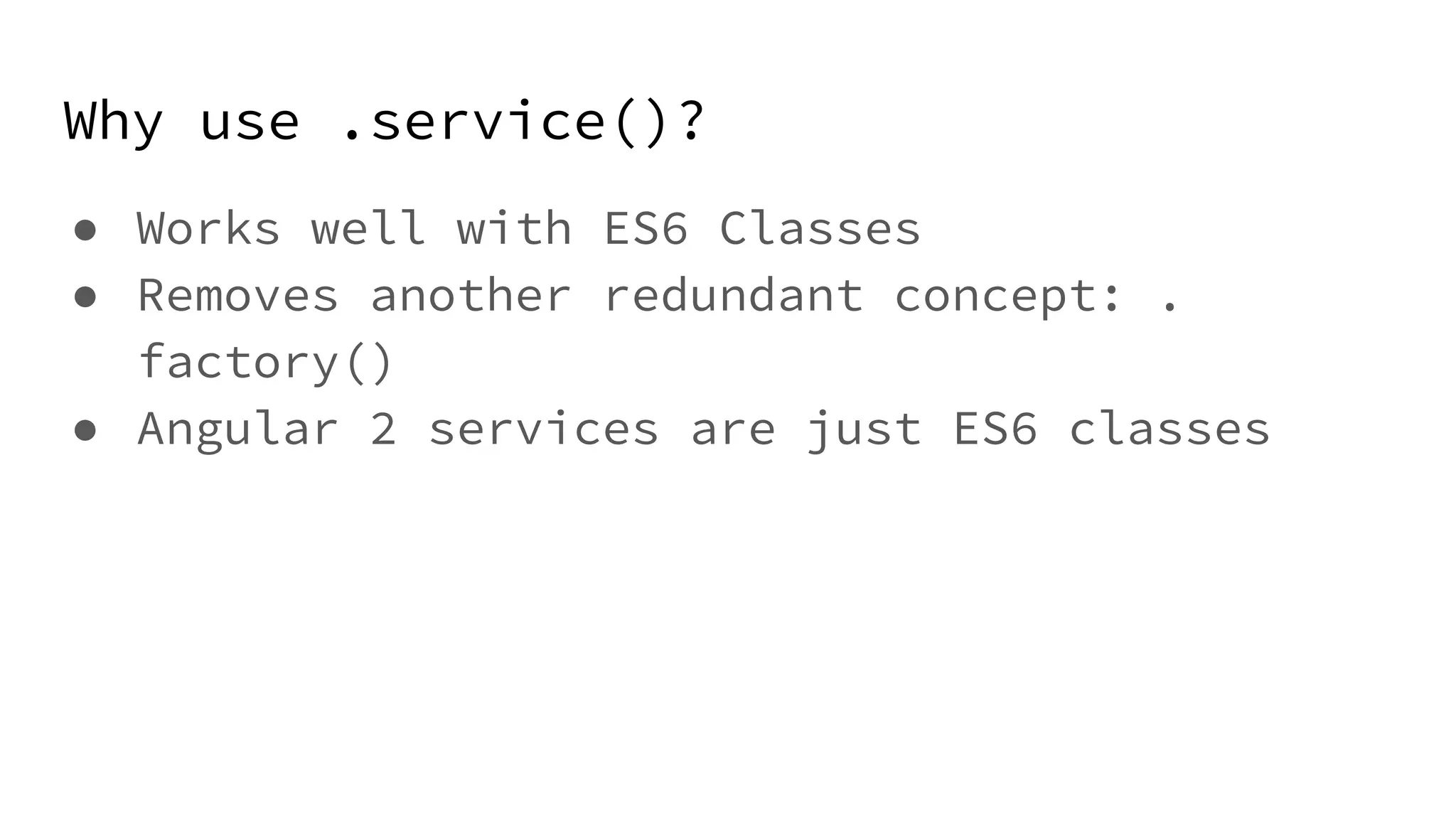
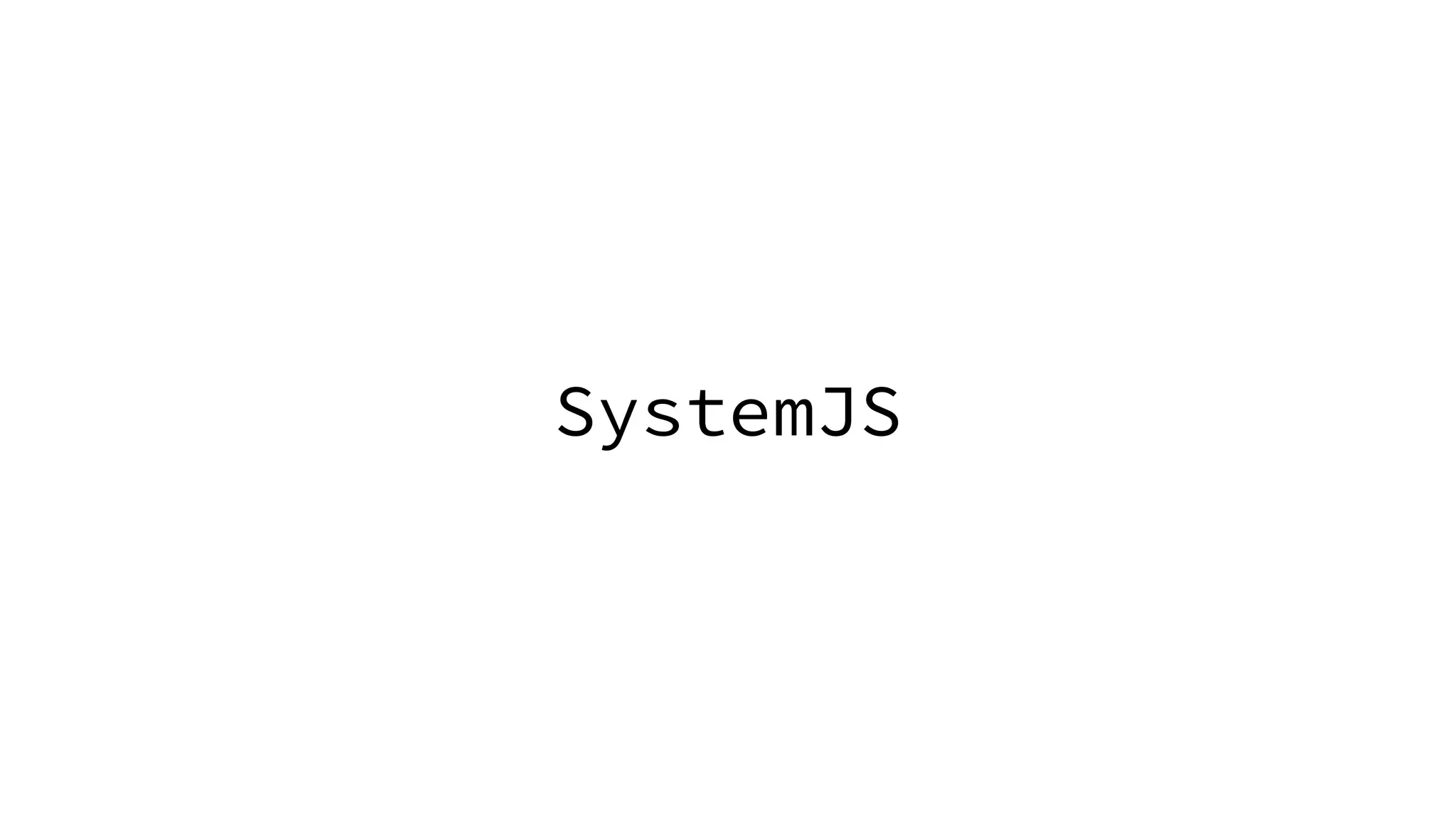
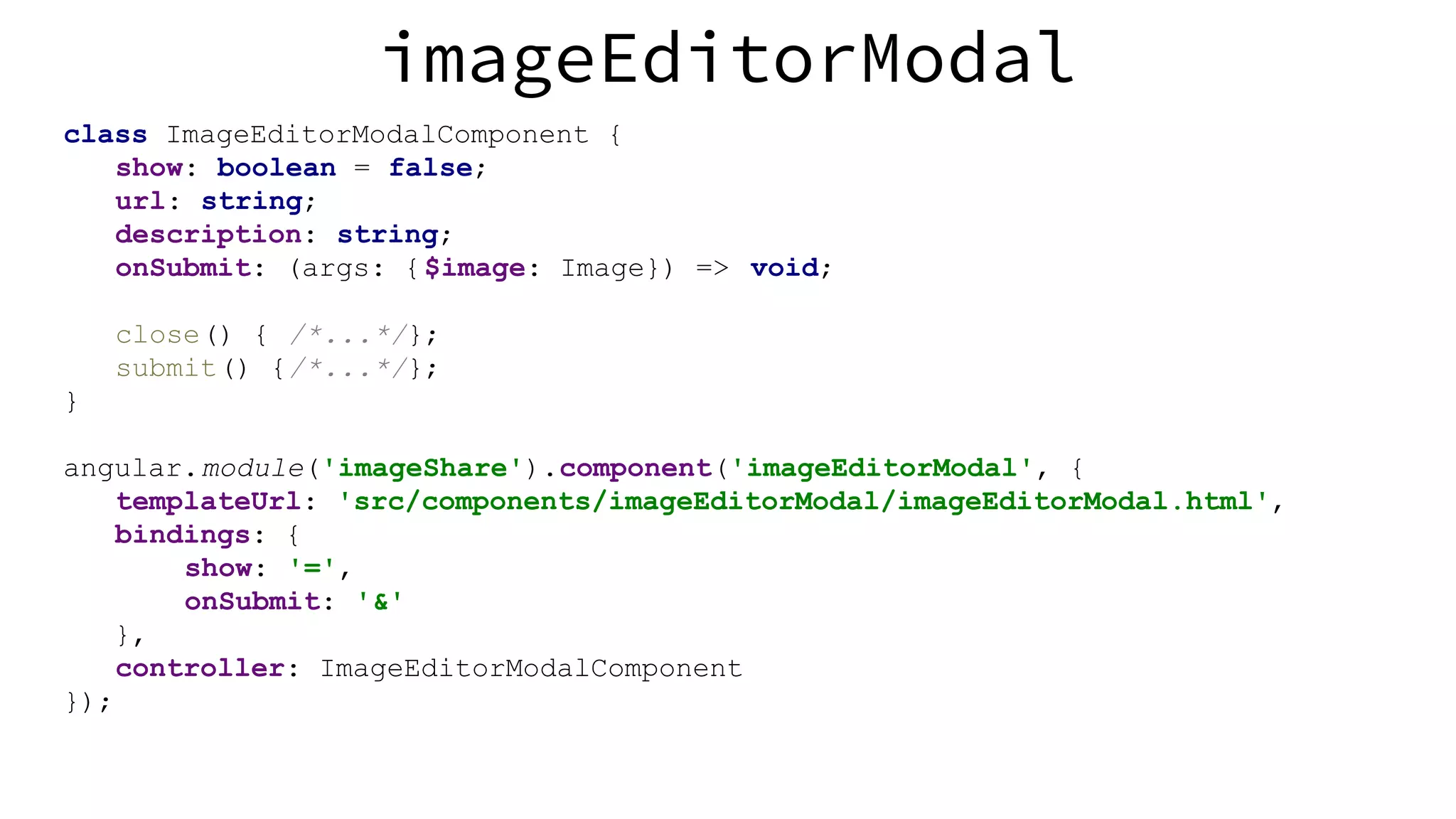
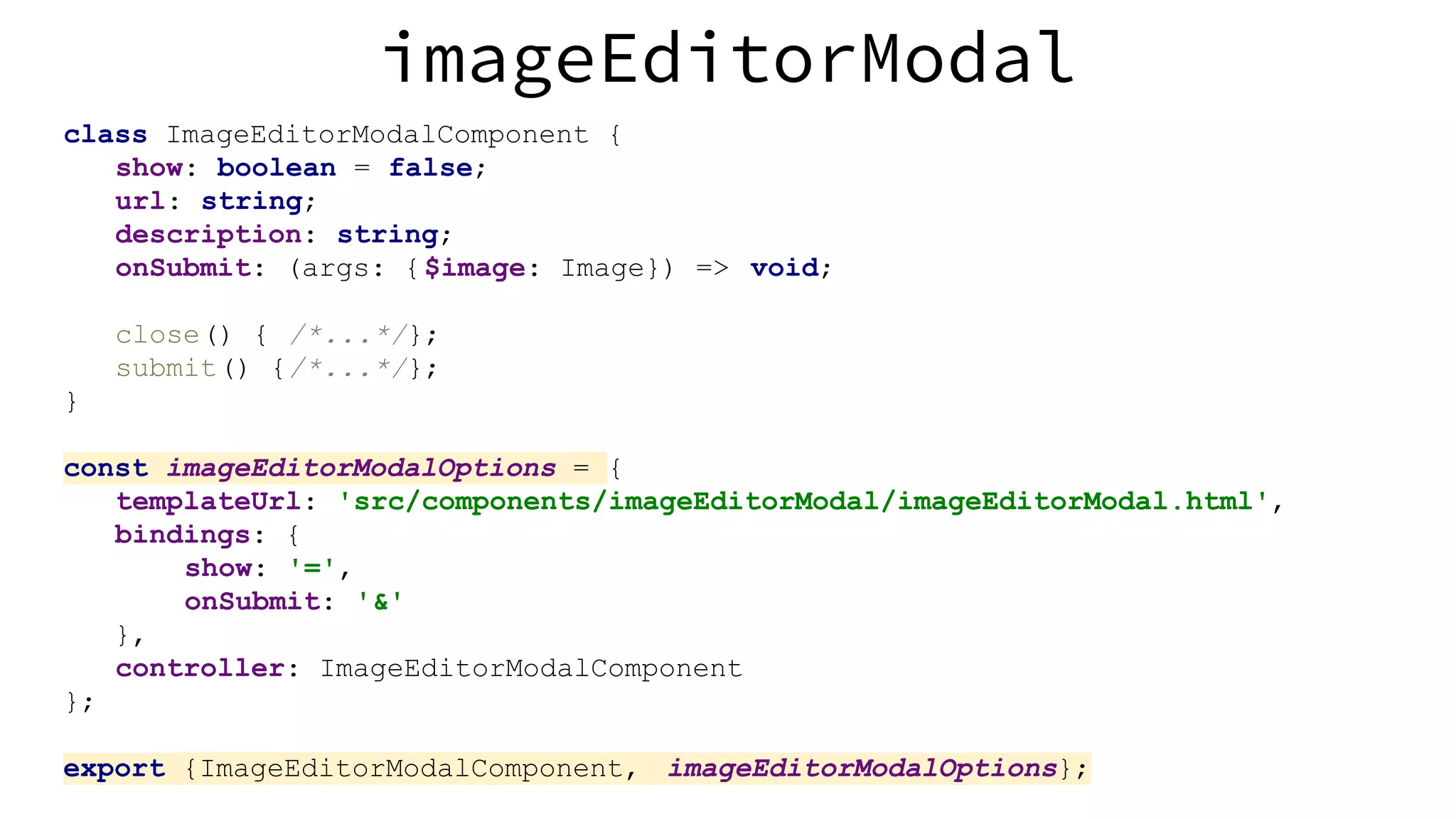
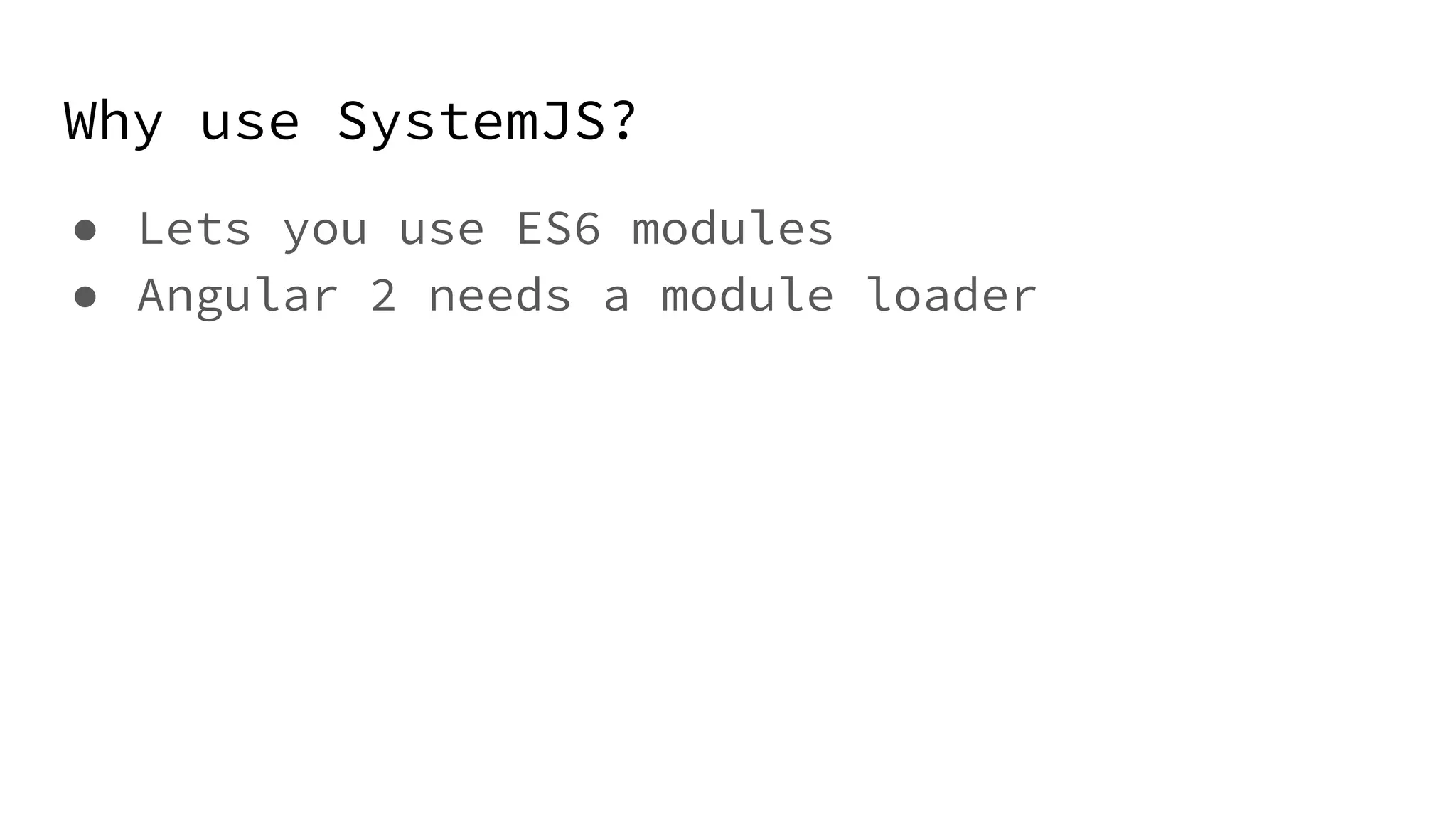
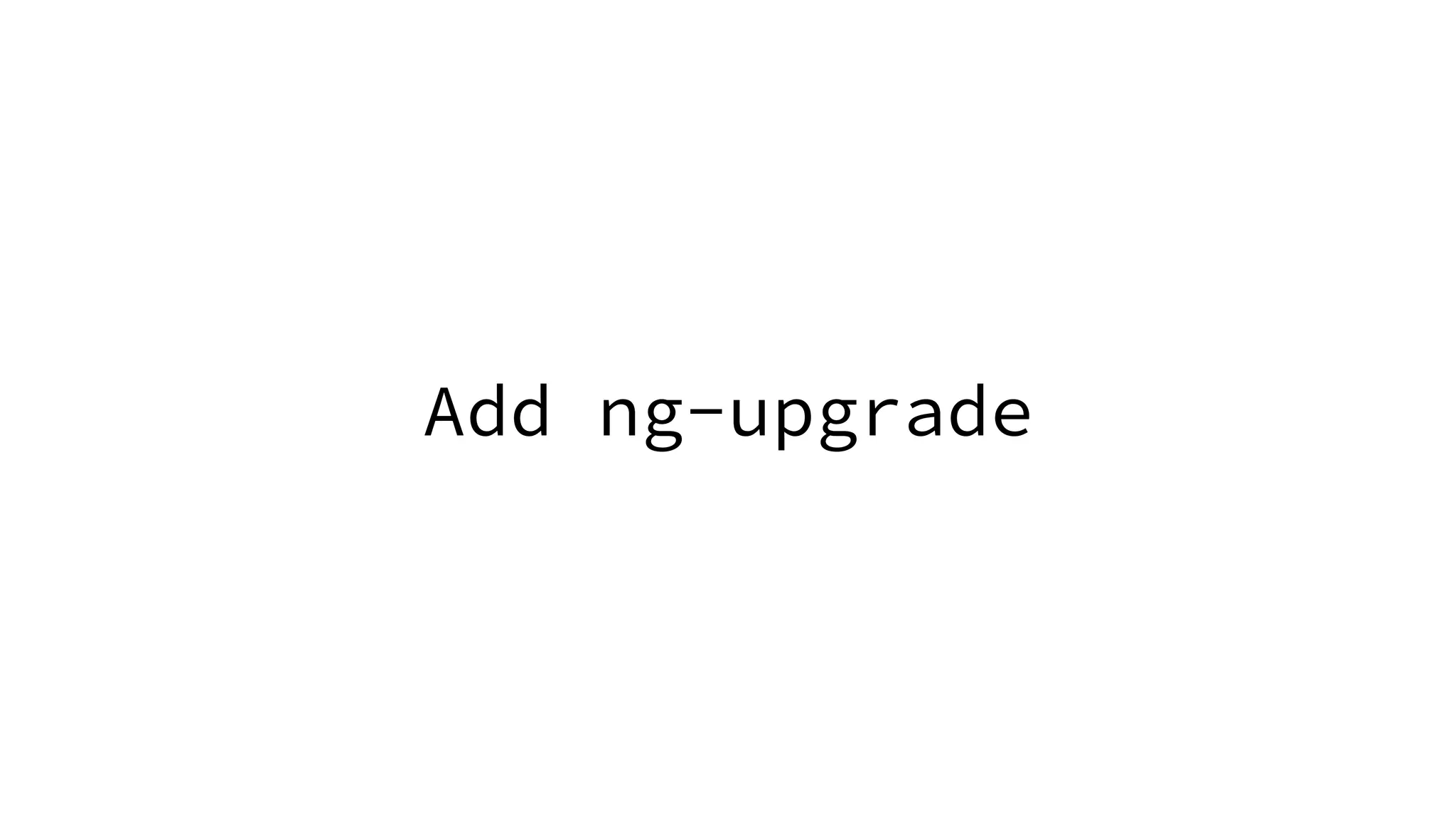
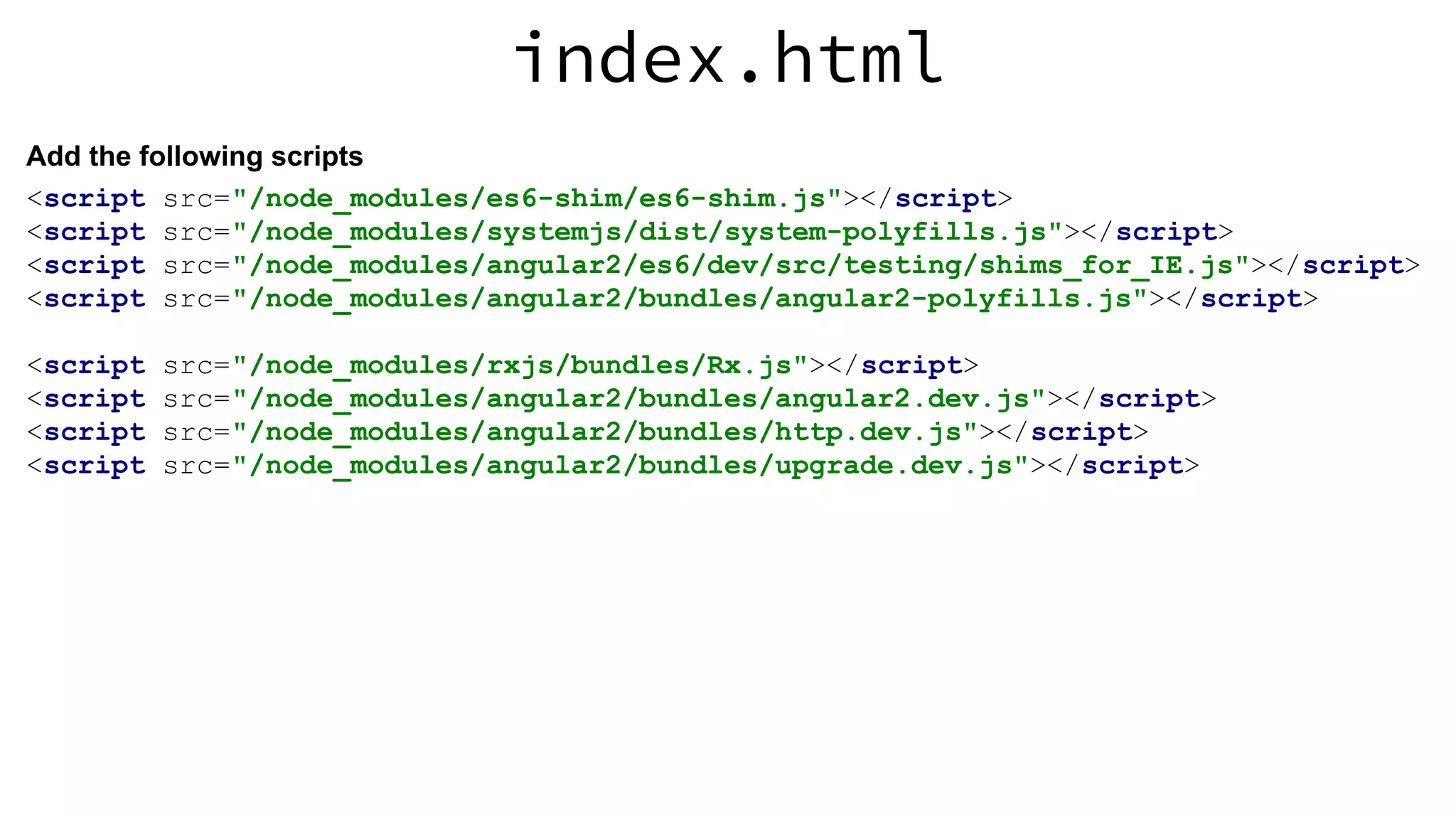
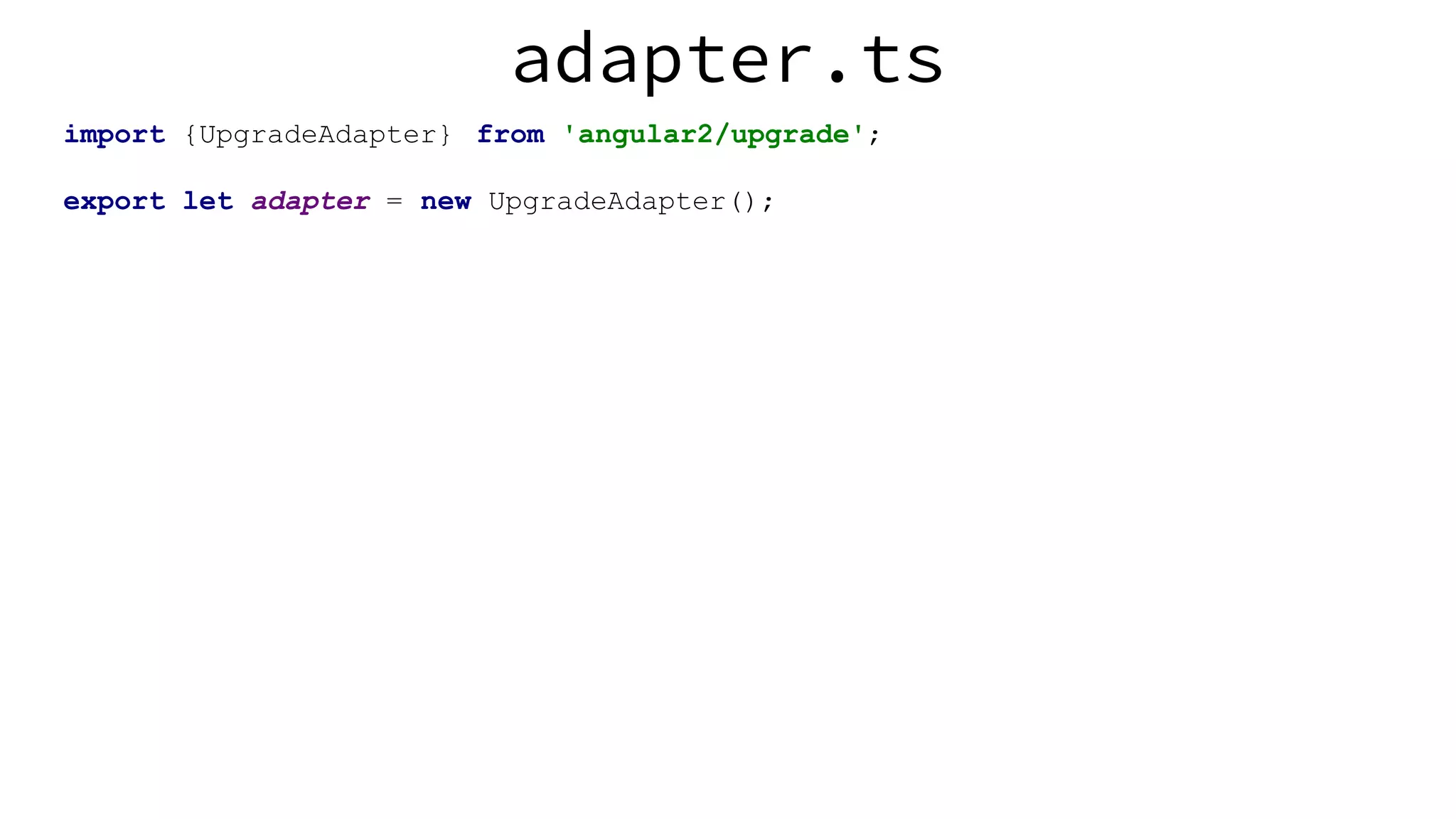
![app.ts import {adapter} from "../../adapter"; //... adapter.bootstrap(document.documentElement , ['imageShare']);](https://image.slidesharecdn.com/migratingtoangular2-160429031216/75/Migrating-to-Angular-2-47-2048.jpg)
![gulpfile.js var gulp = require('gulp'); var ts = require('gulp-typescript'); gulp.task('ts', function () { return gulp.src([ 'src/**/*.ts', 'typings/**/*.ts', //Taken from https://github.com/angular/angular/issues/7280 'node_modules/angular2/typings/browser.d.ts' ]) .pipe( ts({ target: 'ES5', module: 'system', emitDecoratorMetadata: true, experimentalDecorators: true, moduleResolution: 'node' })) .pipe( gulp.dest('src')); });](https://image.slidesharecdn.com/migratingtoangular2-160429031216/75/Migrating-to-Angular-2-48-2048.jpg)
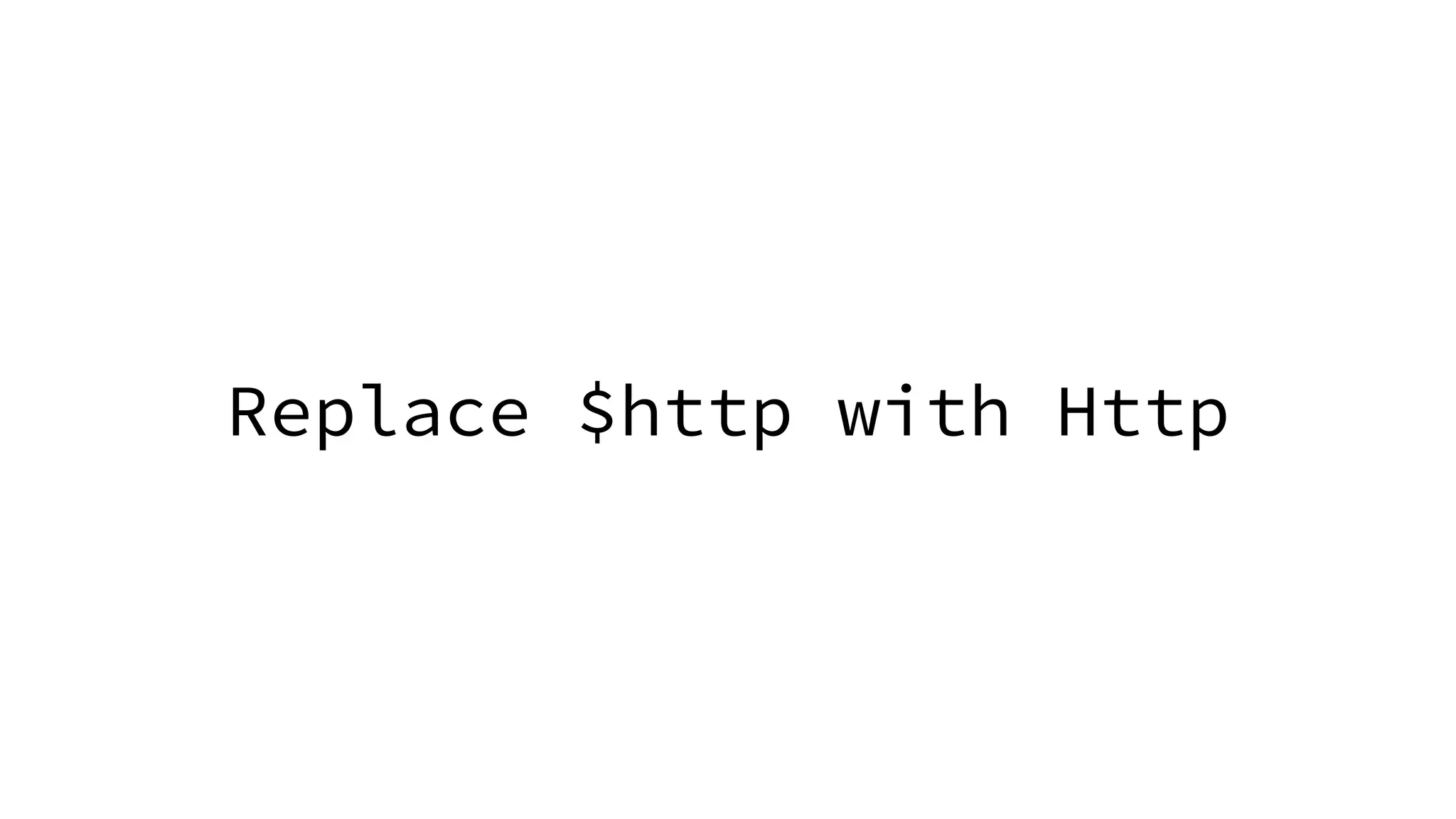
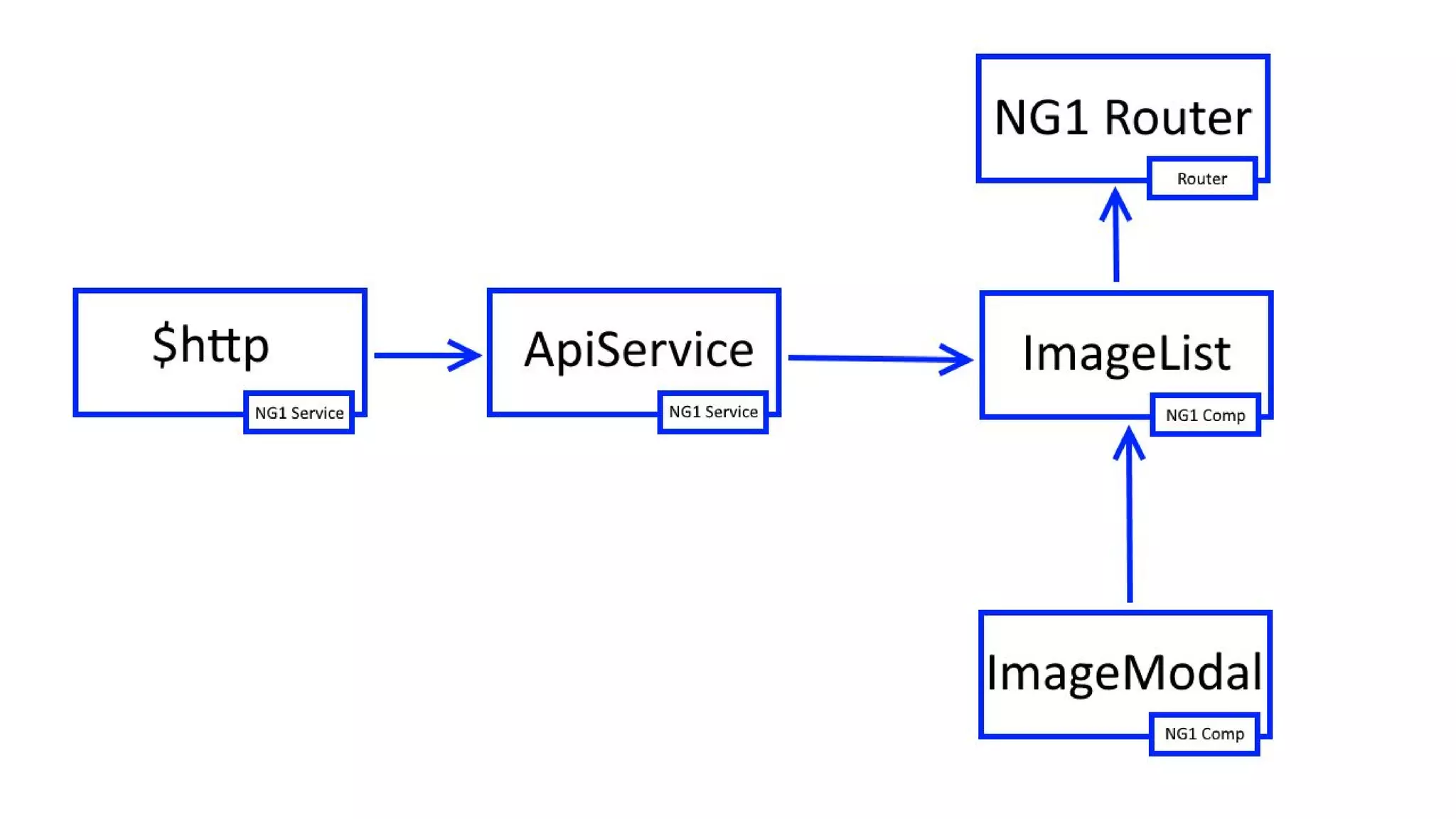
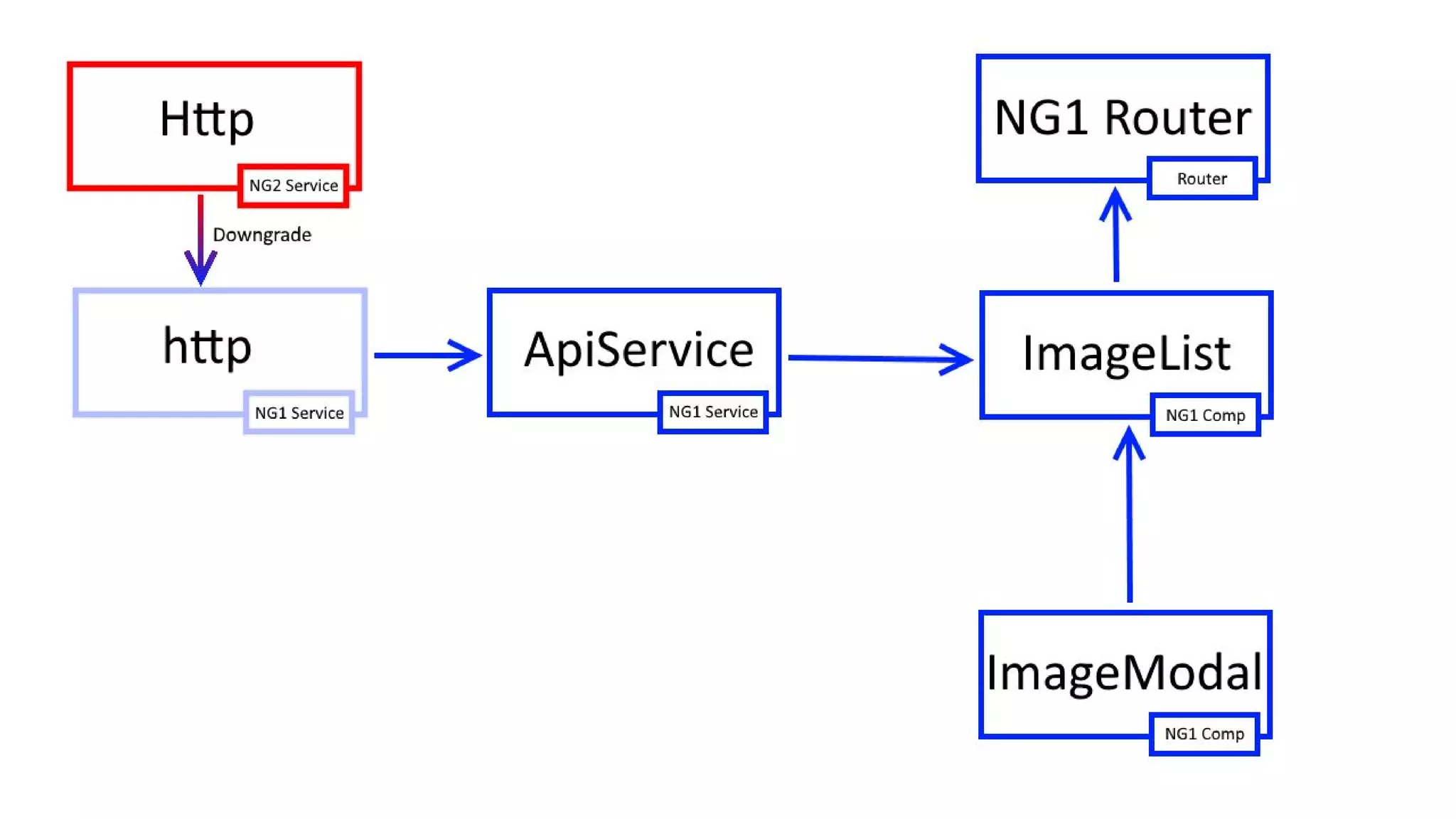
![app.ts import {adapter} from "../../adapter"; import {HTTP_PROVIDERS, Http} from "angular2/http"; import 'rxjs/add/operator/map'; adapter.addProvider(HTTP_PROVIDERS); angular.module('imageShare', ['ngRoute']) .factory('http', adapter.downgradeNg2Provider(Http));](https://image.slidesharecdn.com/migratingtoangular2-160429031216/75/Migrating-to-Angular-2-52-2048.jpg)
![apiService.ts import {Http, Headers} from "angular2/http"; import {Observable} from "rxjs/Observable"; const IMAGES_URL = 'https://image-share.herokuapp.com/api/images'; export default class ApiService { constructor(private http: Http) { } getImages(): Observable<Image[]> { return this.http.get(IMAGES_URL) . map(res => res.json()); } createImage(image): Observable<Image> { var headers = new Headers(); headers.append('Content-Type', 'application/json'); return this.http.post(IMAGES_URL,JSON.stringify(image), { headers: headers}) .map(res => res.json()); } }](https://image.slidesharecdn.com/migratingtoangular2-160429031216/75/Migrating-to-Angular-2-53-2048.jpg)
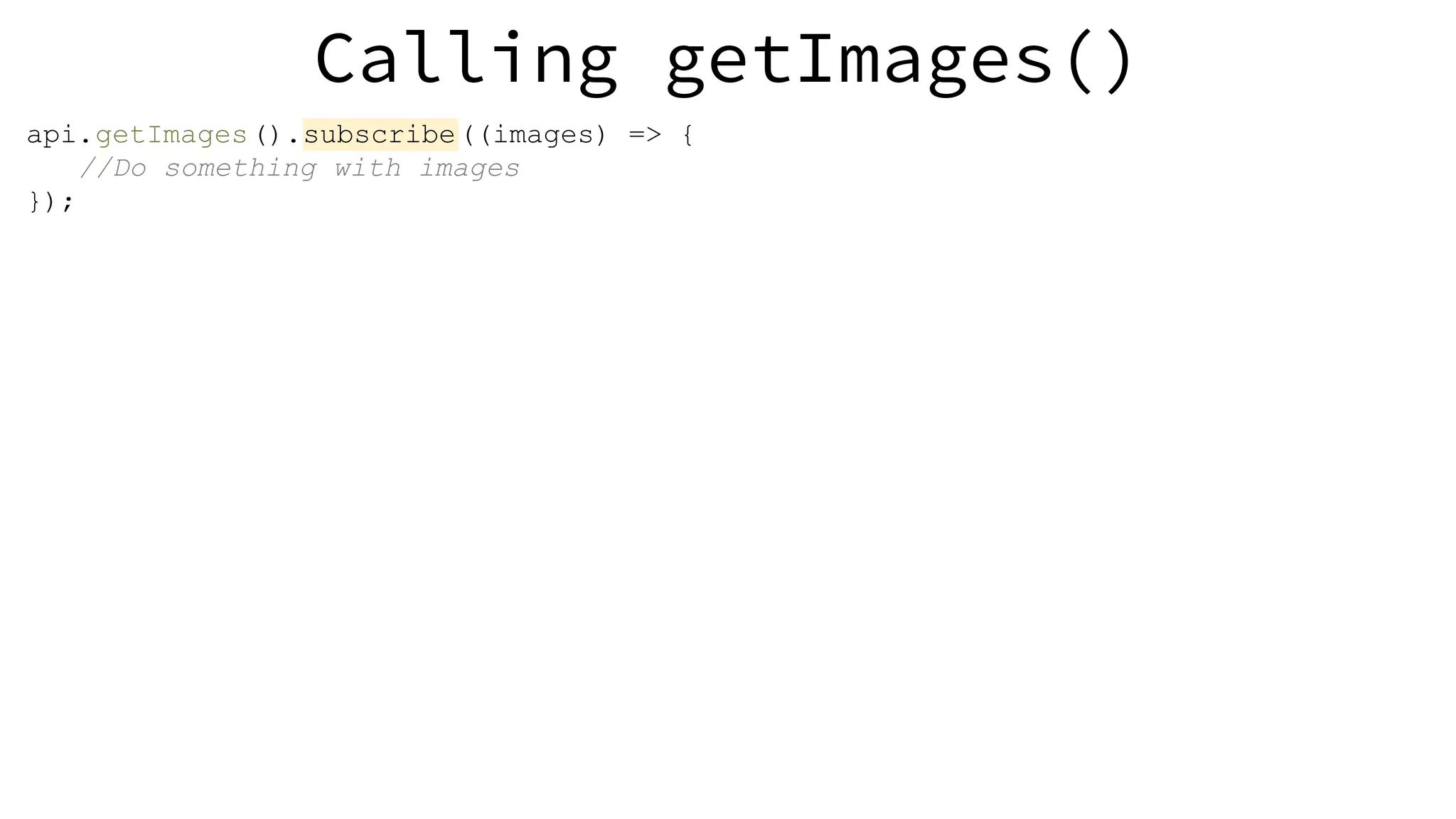
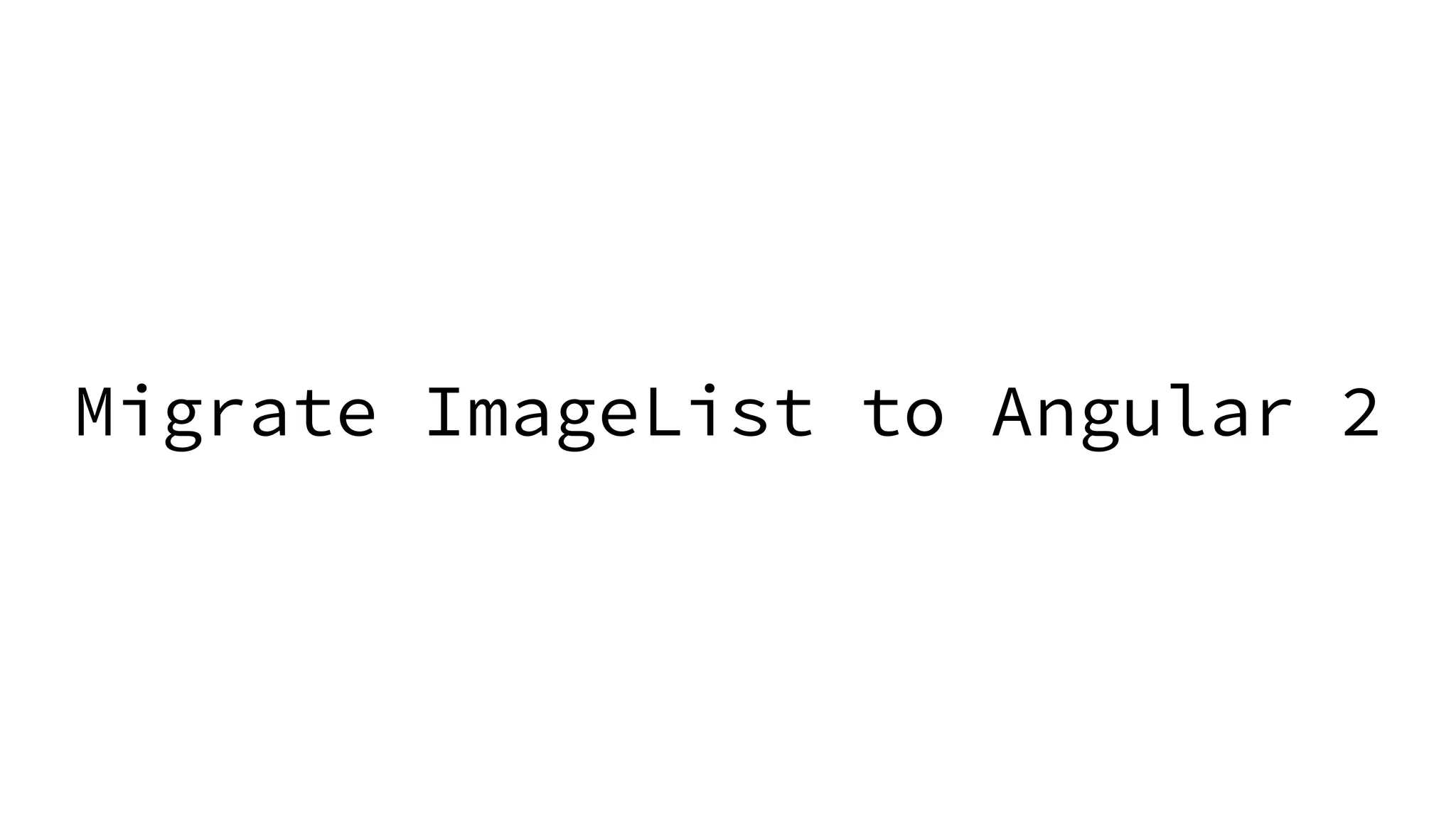
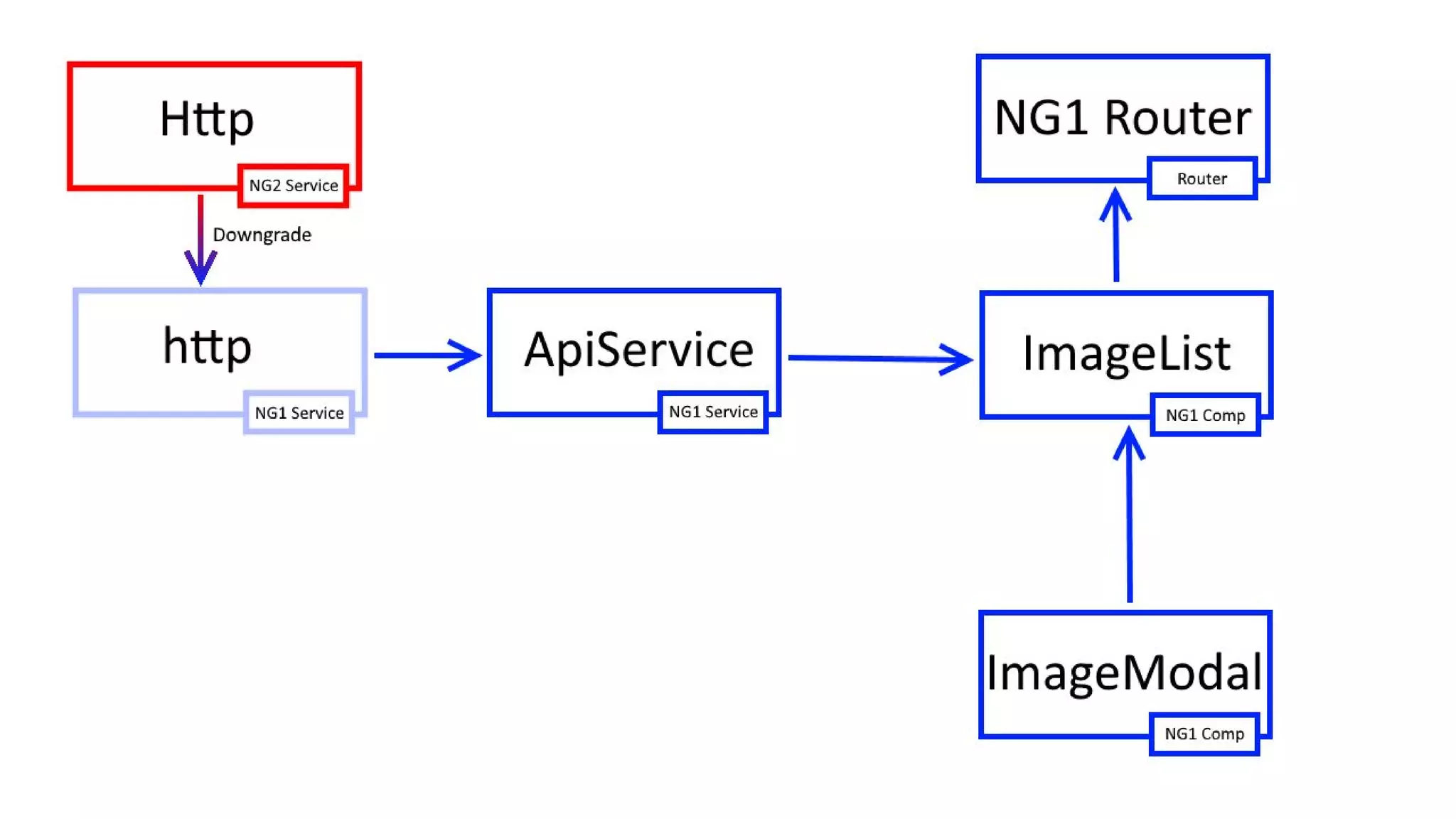
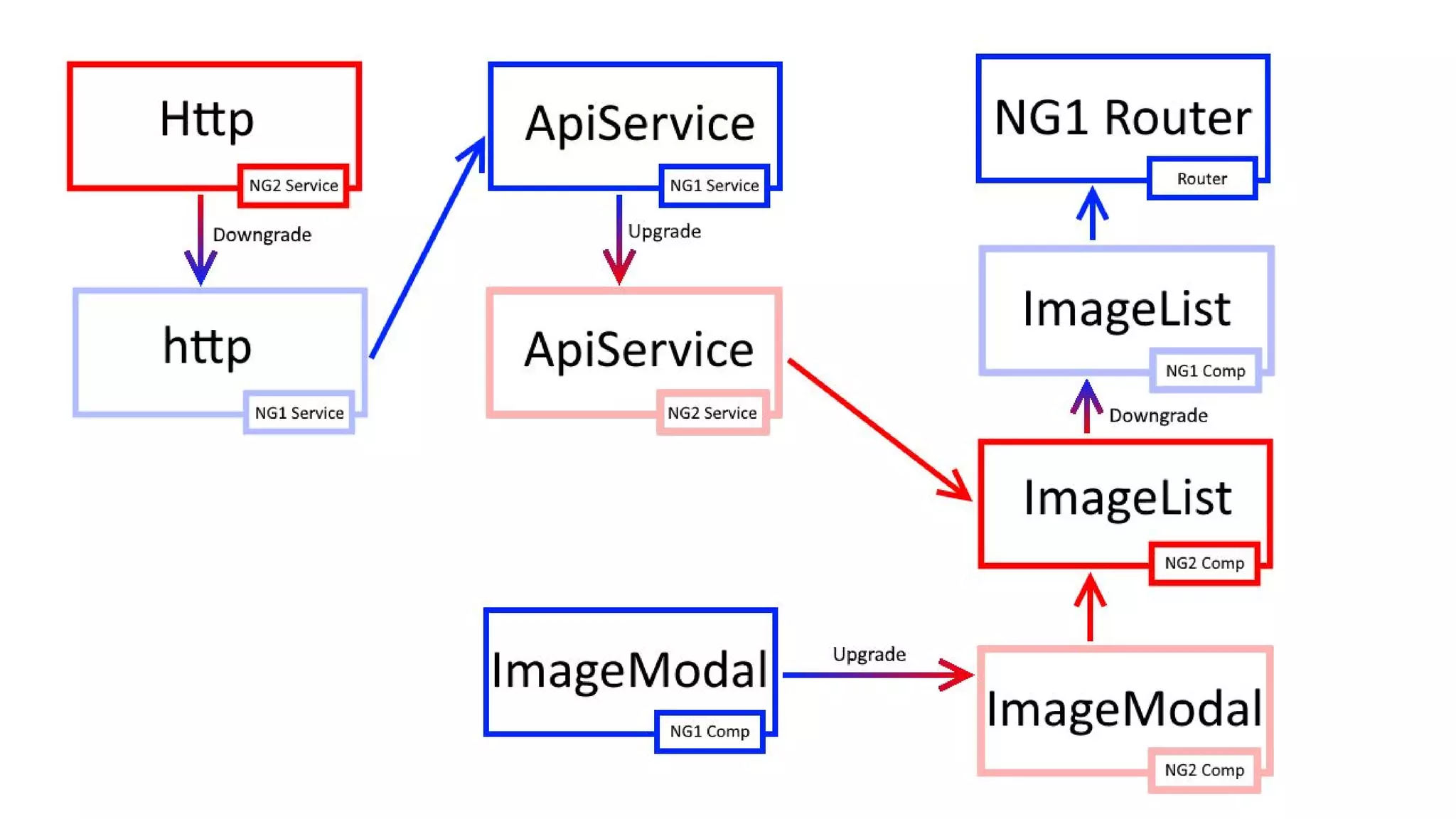
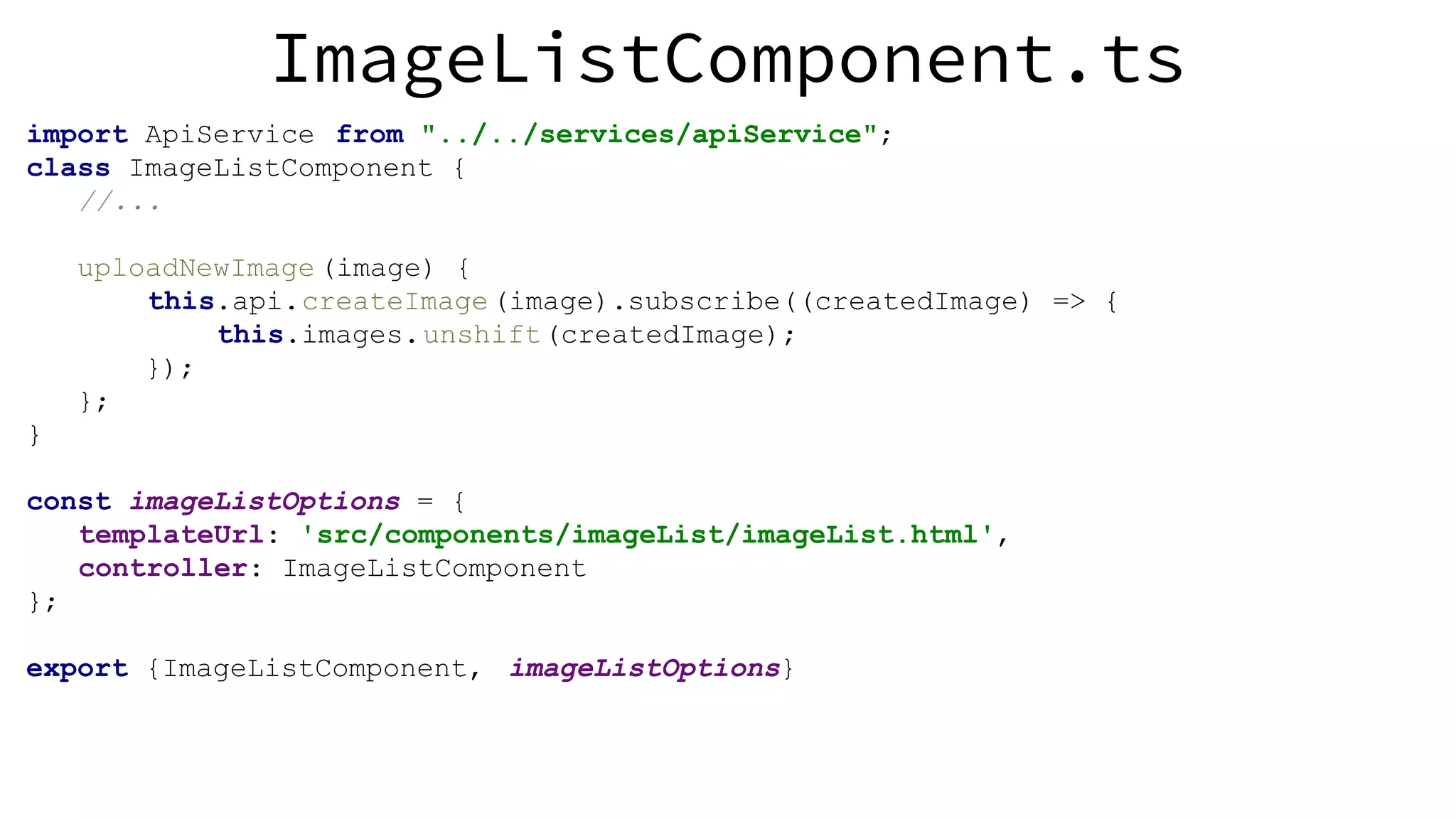
![ImageListComponent.ts import ApiService from "../../services/apiService"; import {adapter} from "../../adapter"; import {Component} from "angular2/core"; @Component({ templateUrl: 'src/components/imageList/imageList.html', selector: 'image-list', directives: [adapter.upgradeNg1Component( 'imageEditorModal')] }) export class ImageListComponent { //... uploadNewImage (event) { this.api.createImage(event.$image).subscribe((createdImage) => { this.images.unshift(createdImage); }); }; }](https://image.slidesharecdn.com/migratingtoangular2-160429031216/75/Migrating-to-Angular-2-59-2048.jpg)
![ImageList.html <div> <div class="input-group"> <button class="btn btn-primary" (click)="addImage()">Add Image</button> </div> <ul class="list-group"> <li *ngFor="#image of images" class="list-group-item"> <div class="media"> < div class="media-left"> < img [src]="image.url"> </ div> < div class="media-body"> {{image. description}} </ div> </div> </li> </ul> </div> <image-editor-modal [(show)]="showModal" (onSubmit)="uploadNewImage($event)"> </image-editor-modal>](https://image.slidesharecdn.com/migratingtoangular2-160429031216/75/Migrating-to-Angular-2-60-2048.jpg)
![app.ts import {adapter} from "../../adapter"; import {ImageListComponent} from "../imageList/imageListComponent"; import ApiService from "../../services/apiService"; angular.module('imageShare', ['ngRoute']) .directive('imageList', adapter.downgradeNg2Component(ImageListComponent)); adapter.upgradeNg1Provider( 'api', {asToken: ApiService});](https://image.slidesharecdn.com/migratingtoangular2-160429031216/75/Migrating-to-Angular-2-61-2048.jpg)
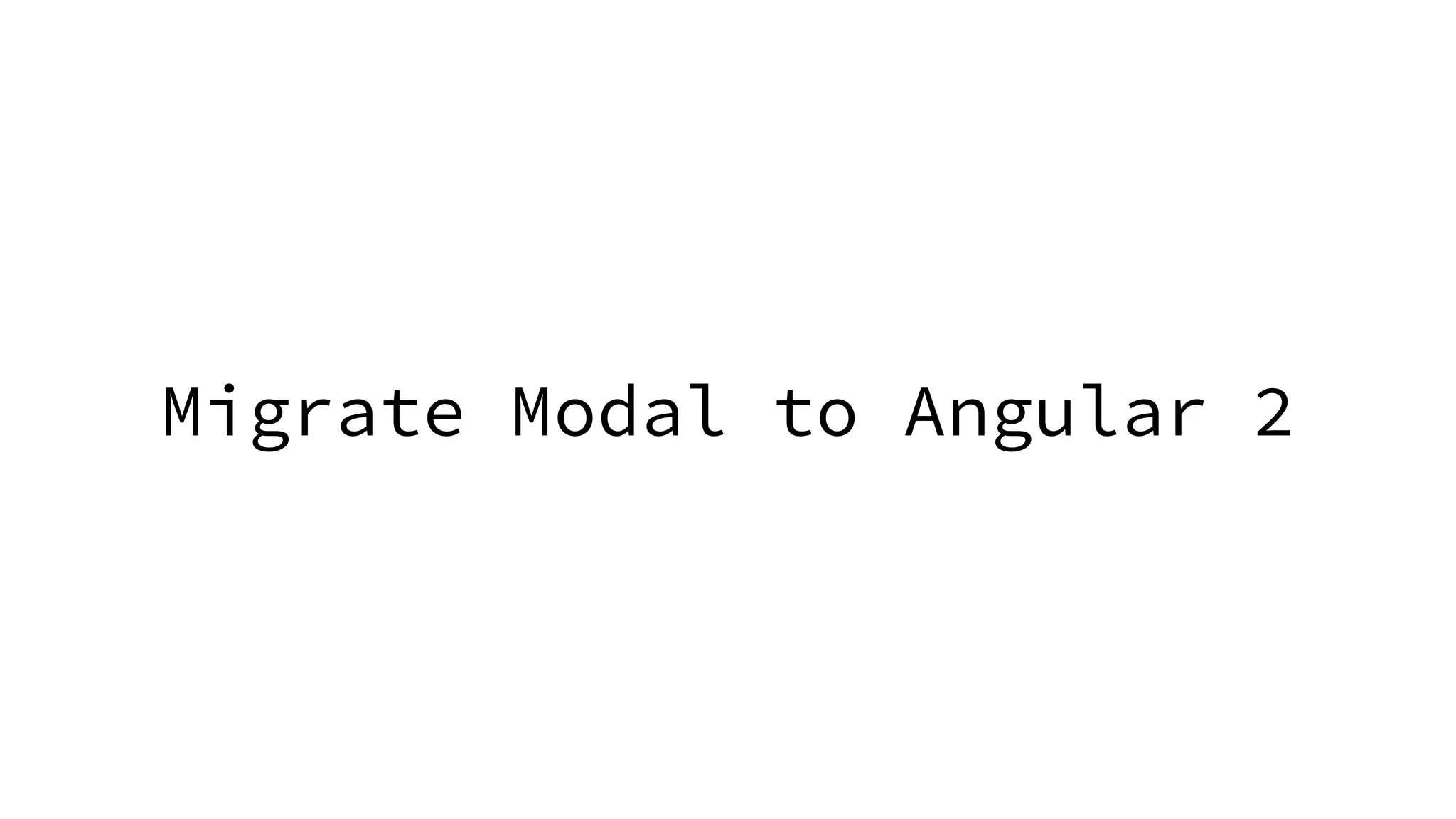
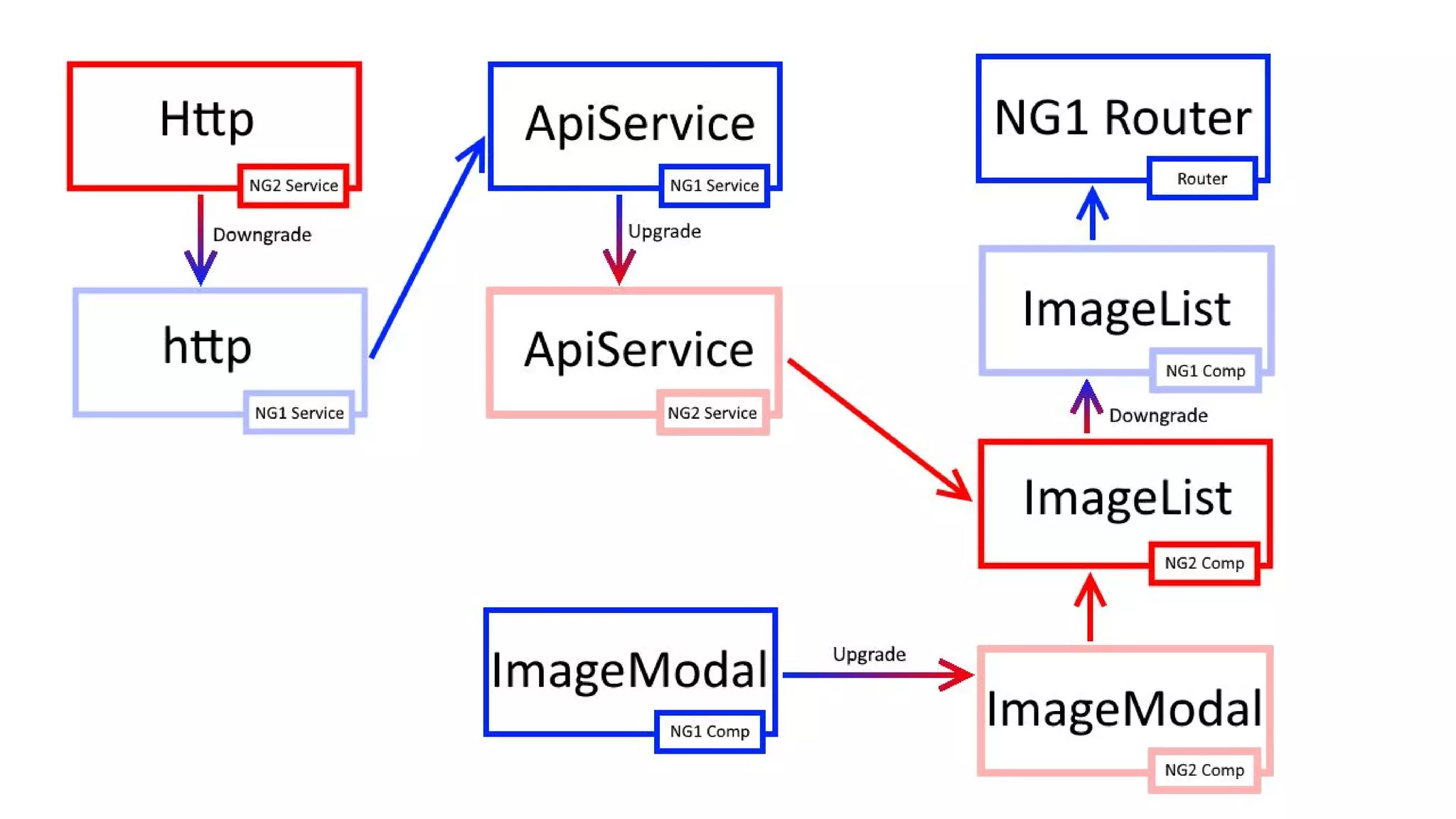
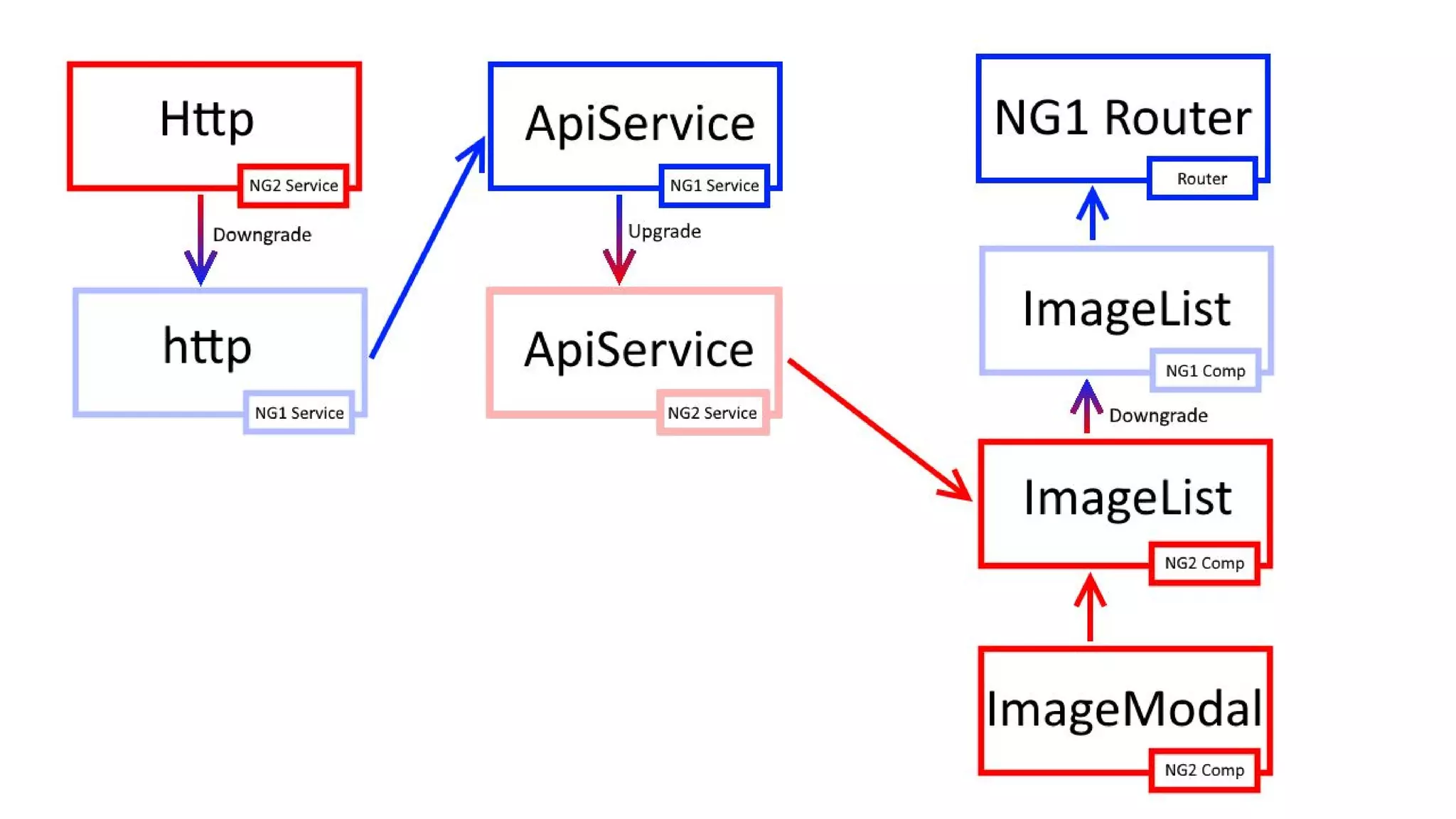
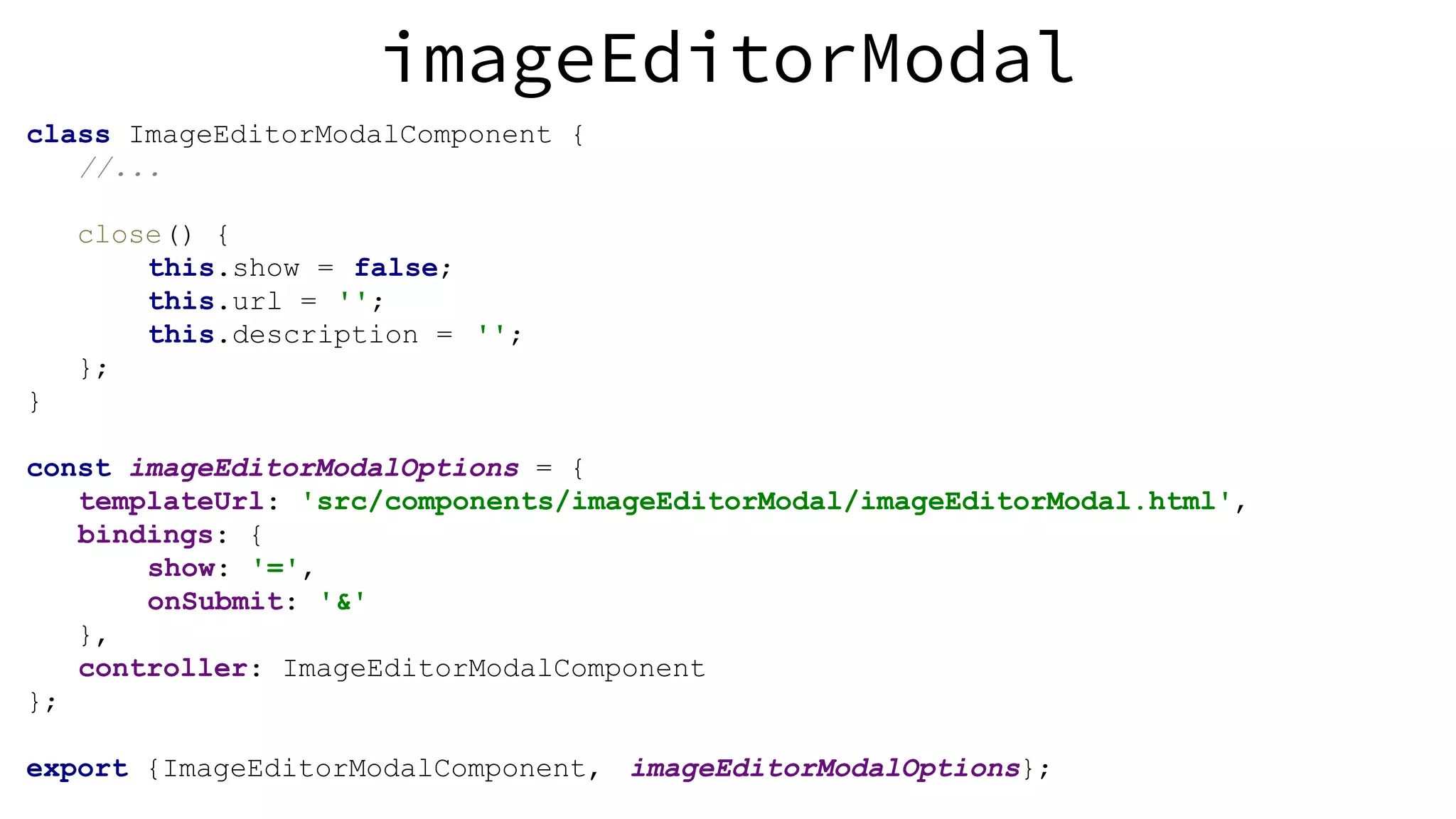
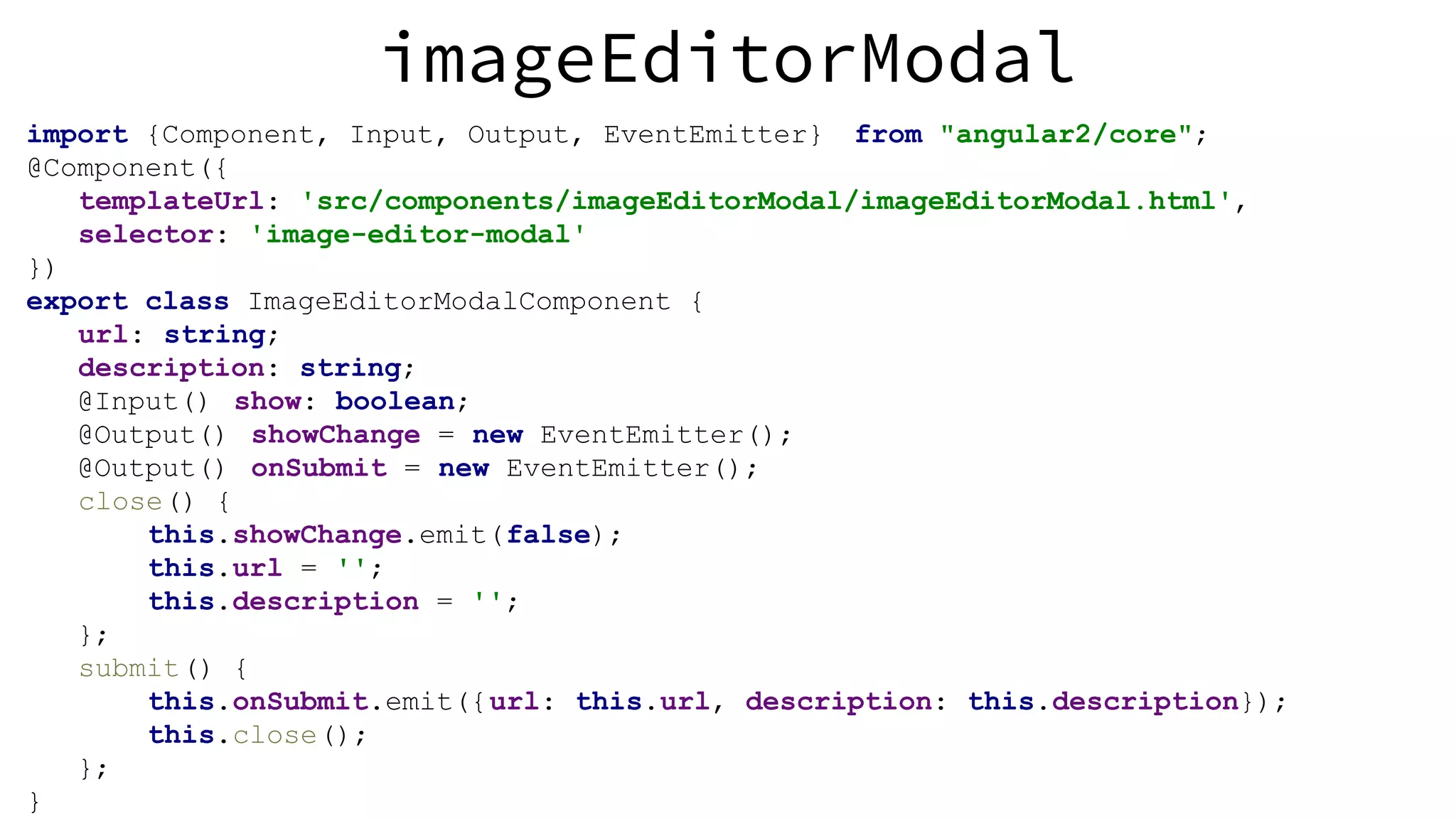
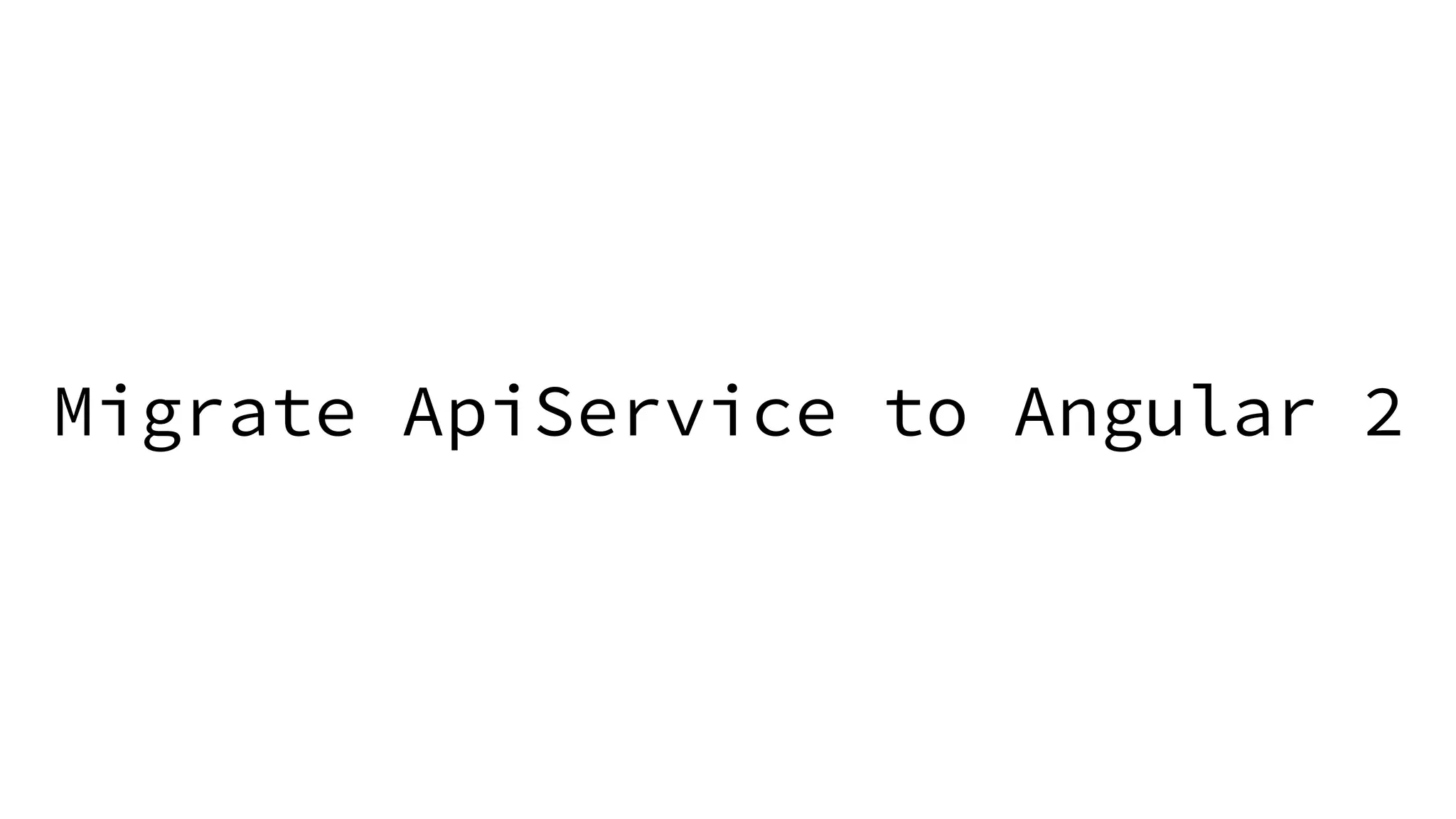
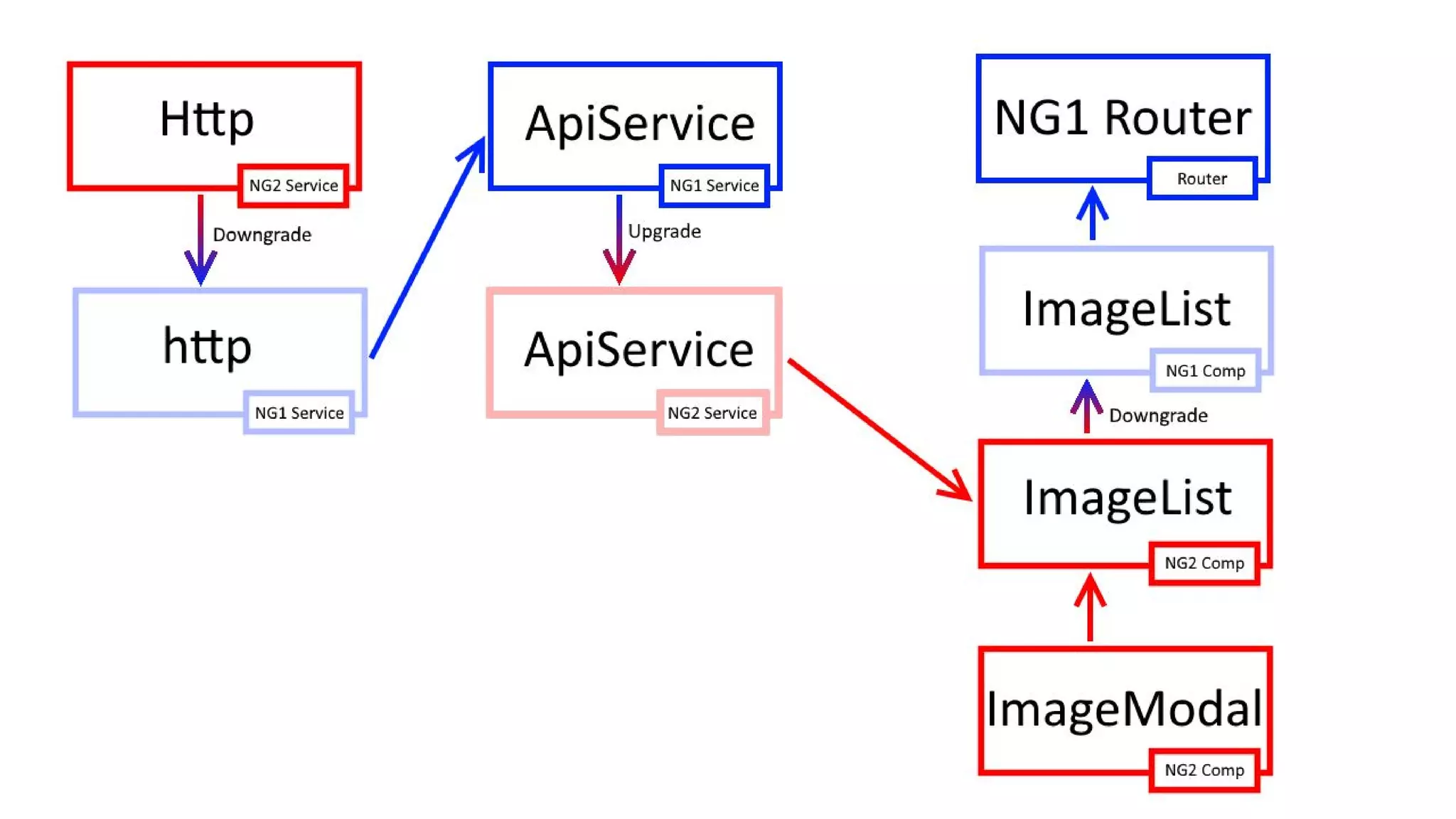
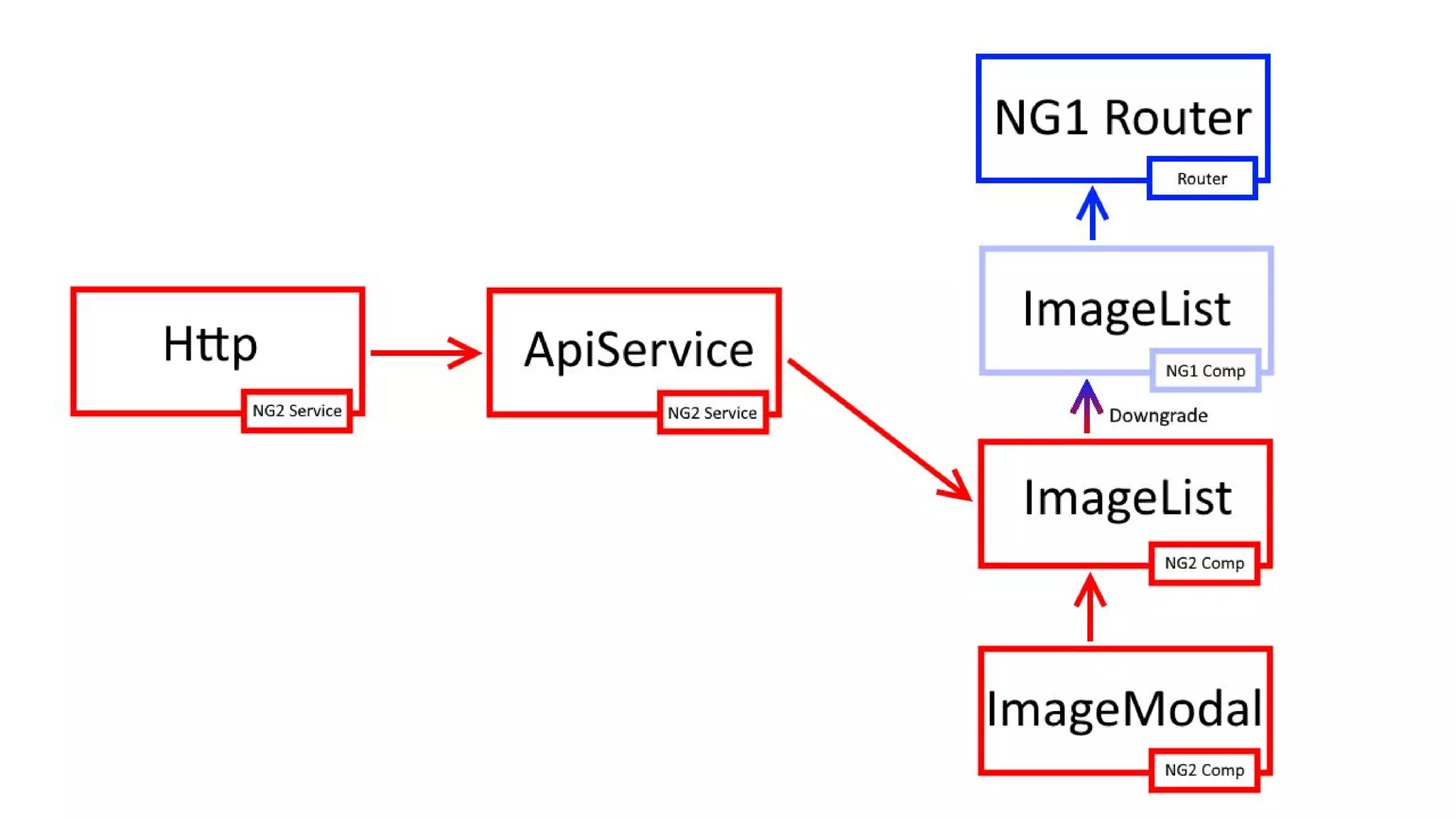
![ApiService.ts import {Injectable} from "angular2/core"; const IMAGES_URL = 'https://image-share.herokuapp.com/api/images'; @Injectable() export default class ApiService { constructor(private http: Http) { } getImages(): Observable<Image[]> { return this.http.get(IMAGES_URL) . map(res => res.json()); } createImage(image): Observable<Image> { var headers = new Headers(); headers.append('Content-Type', 'application/json'); return this.http.post(IMAGES_URL,JSON.stringify(image), { headers: headers}) . map(res => res.json()); }](https://image.slidesharecdn.com/migratingtoangular2-160429031216/75/Migrating-to-Angular-2-70-2048.jpg)
![App.ts angular.module('imageShare', ['ngRoute']) .service('api', ApiService) .factory('http', adapter.downgradeNg2Provider(Http)) adapter.addProvider(ApiService);](https://image.slidesharecdn.com/migratingtoangular2-160429031216/75/Migrating-to-Angular-2-71-2048.jpg)
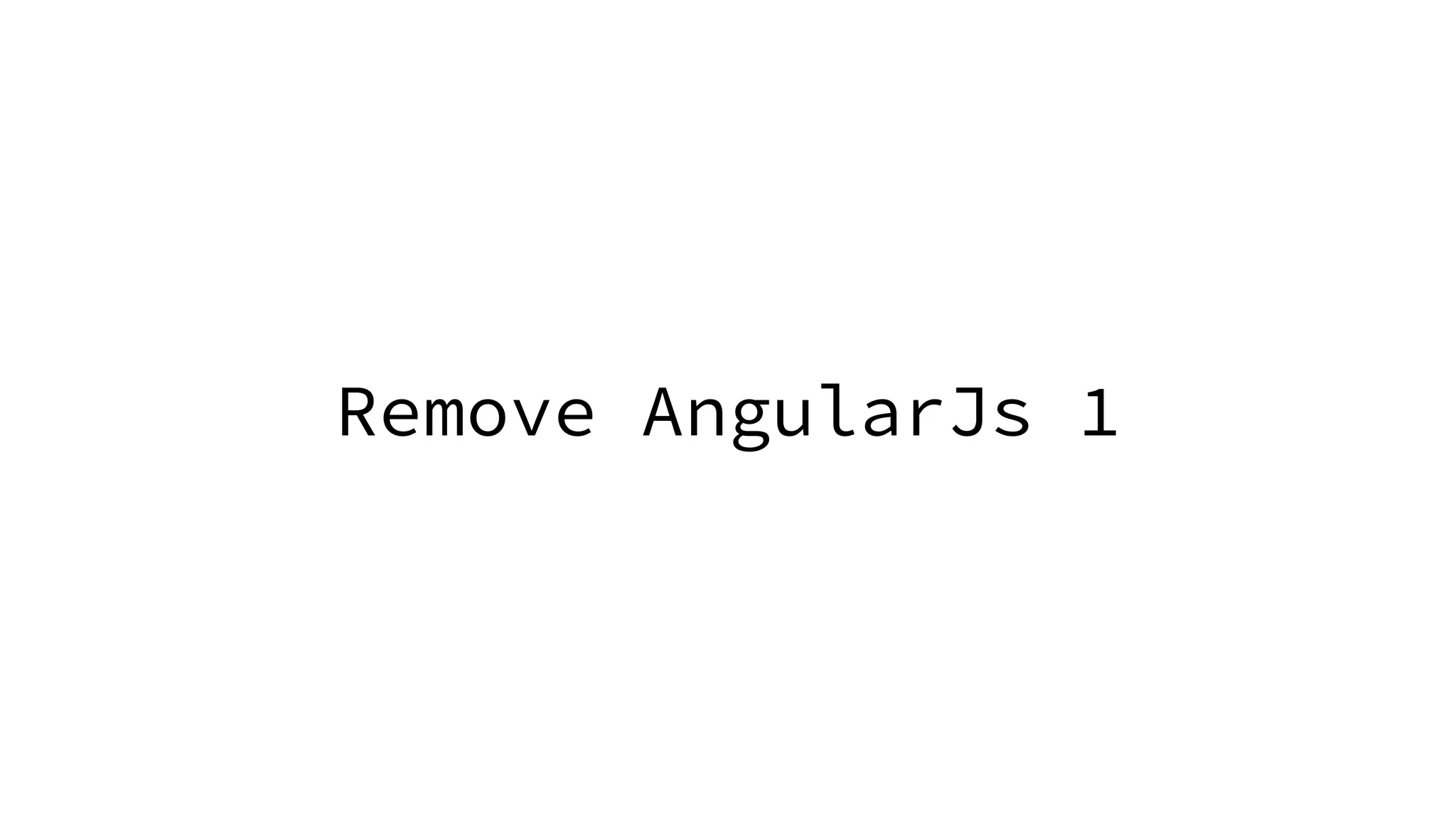
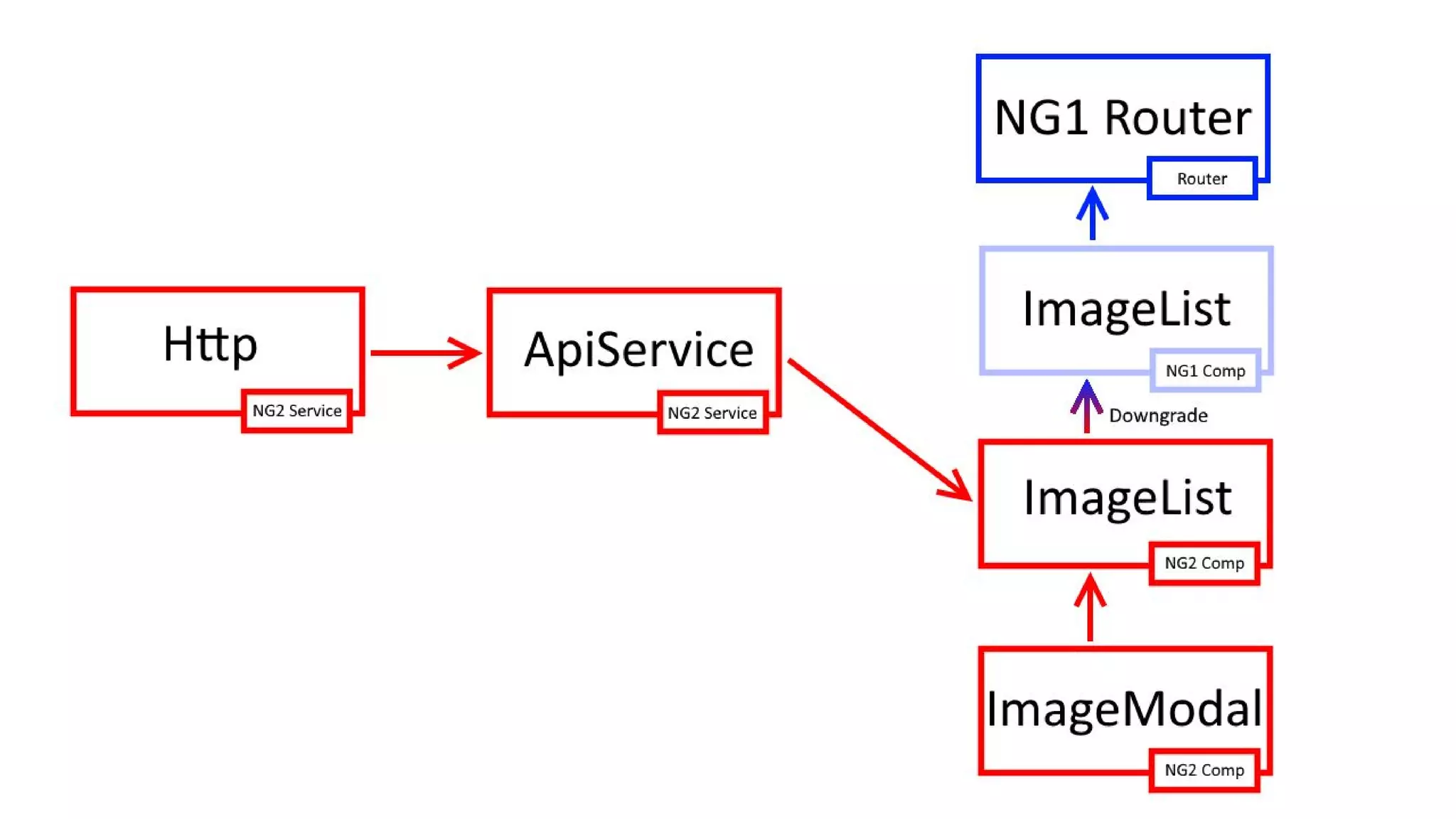
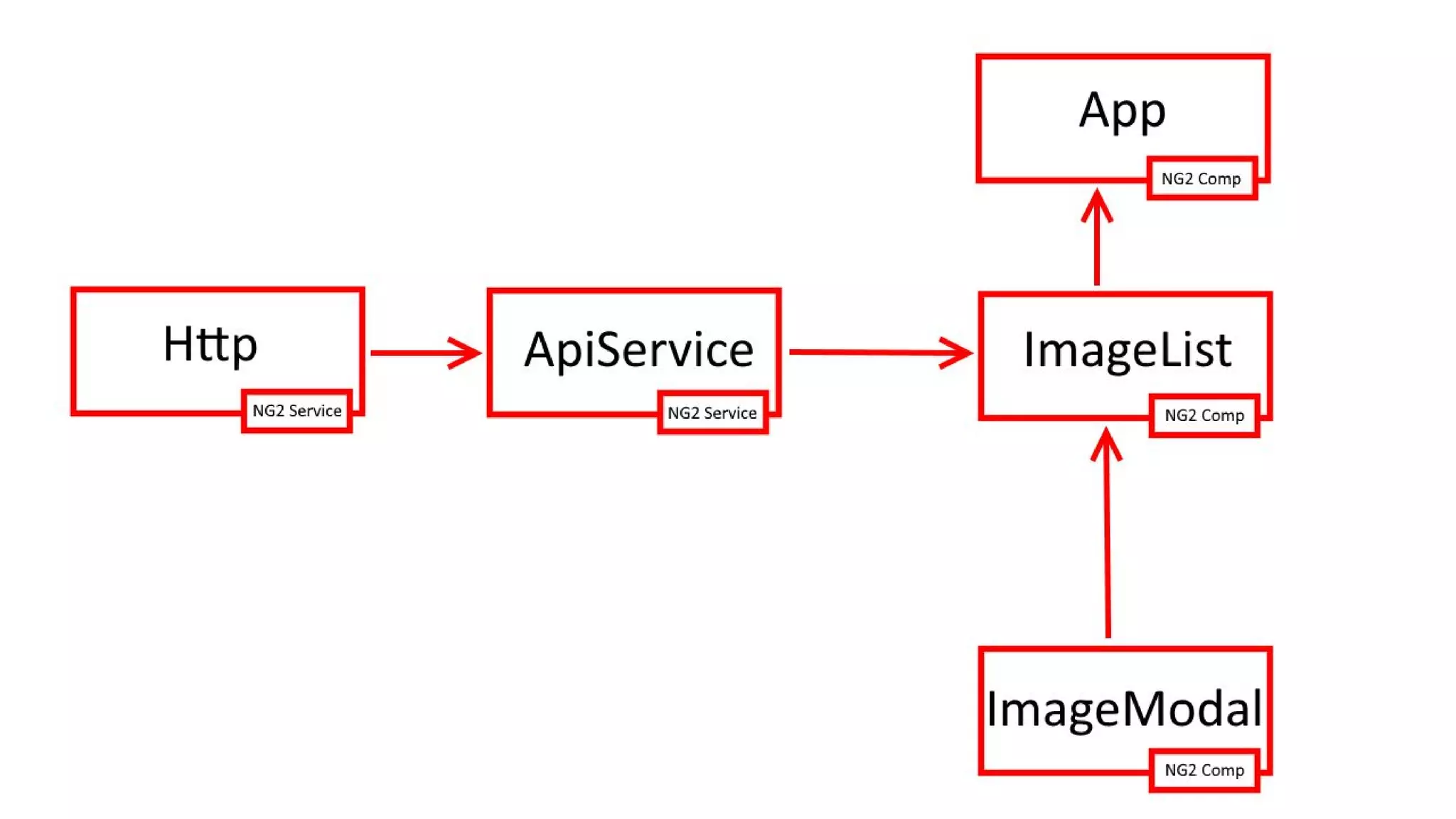
![ApiService.ts import {ROUTER_DIRECTIVES, RouteConfig, Route, ROUTER_PROVIDERS} from "angular2/router"; import {Component} from "angular2/core"; import {bootstrap} from "angular2/platform/browser"; @Component({ selector: 'app', template: '<router-outlet></router-outlet>', directives: [ROUTER_DIRECTIVES] }) @RouteConfig([ new Route({ path: '/home', name: 'ImageList', component: ImageListComponent, useAsDefault: true }) ]) class App { } bootstrap(App, [HTTP_PROVIDERS, ROUTER_PROVIDERS, ApiService]);](https://image.slidesharecdn.com/migratingtoangular2-160429031216/75/Migrating-to-Angular-2-75-2048.jpg)
